For years I’ve been hunting down issues of Black Orpheus (which I featured in my last post, #241), and books from it’s spin-off publishing-wing Mbari. I honestly can’t remember how I first heard about them, or even what the first title I picked up was. I must have initially read about them while researching the Heinemann African Writers Series, and start hunting them down.
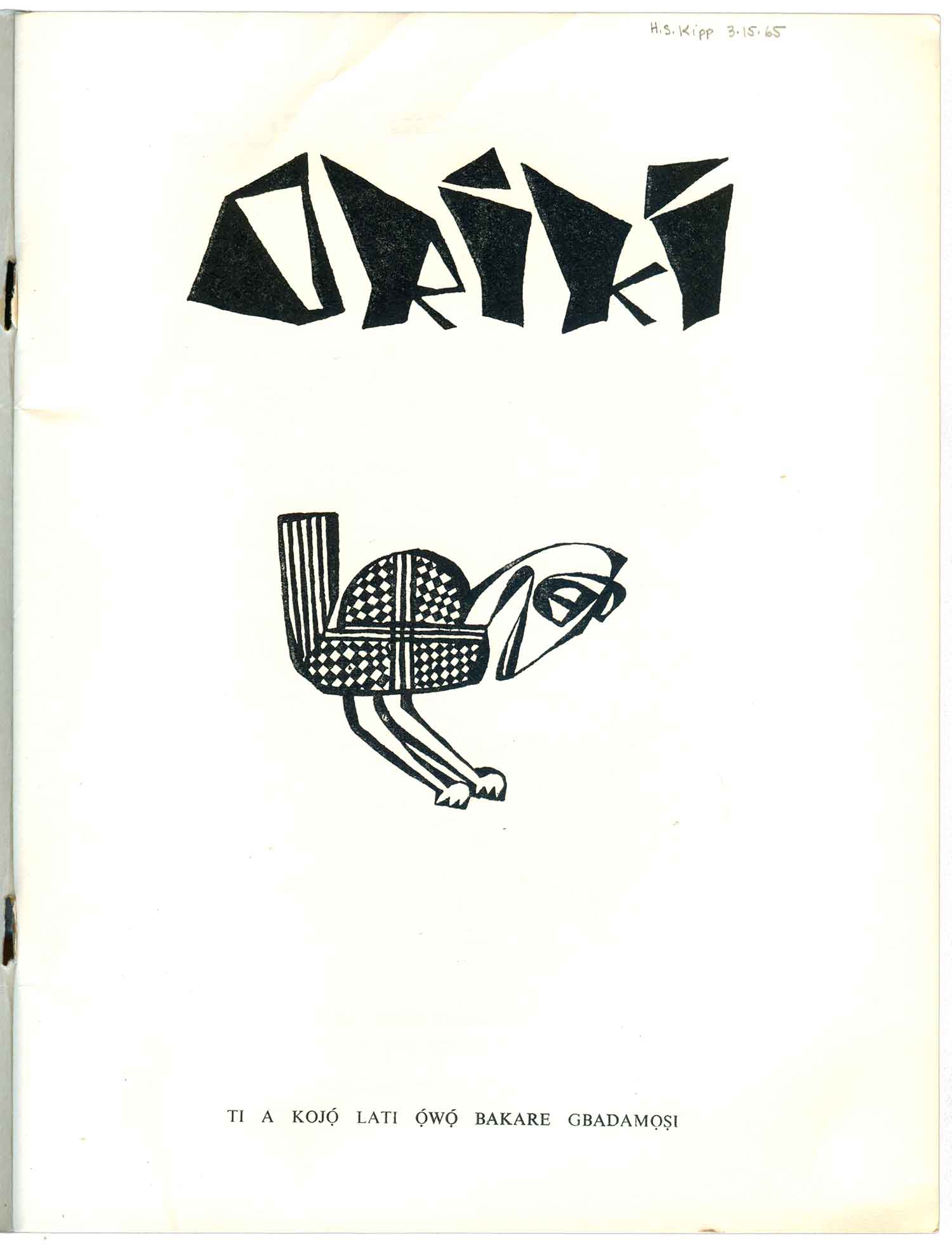
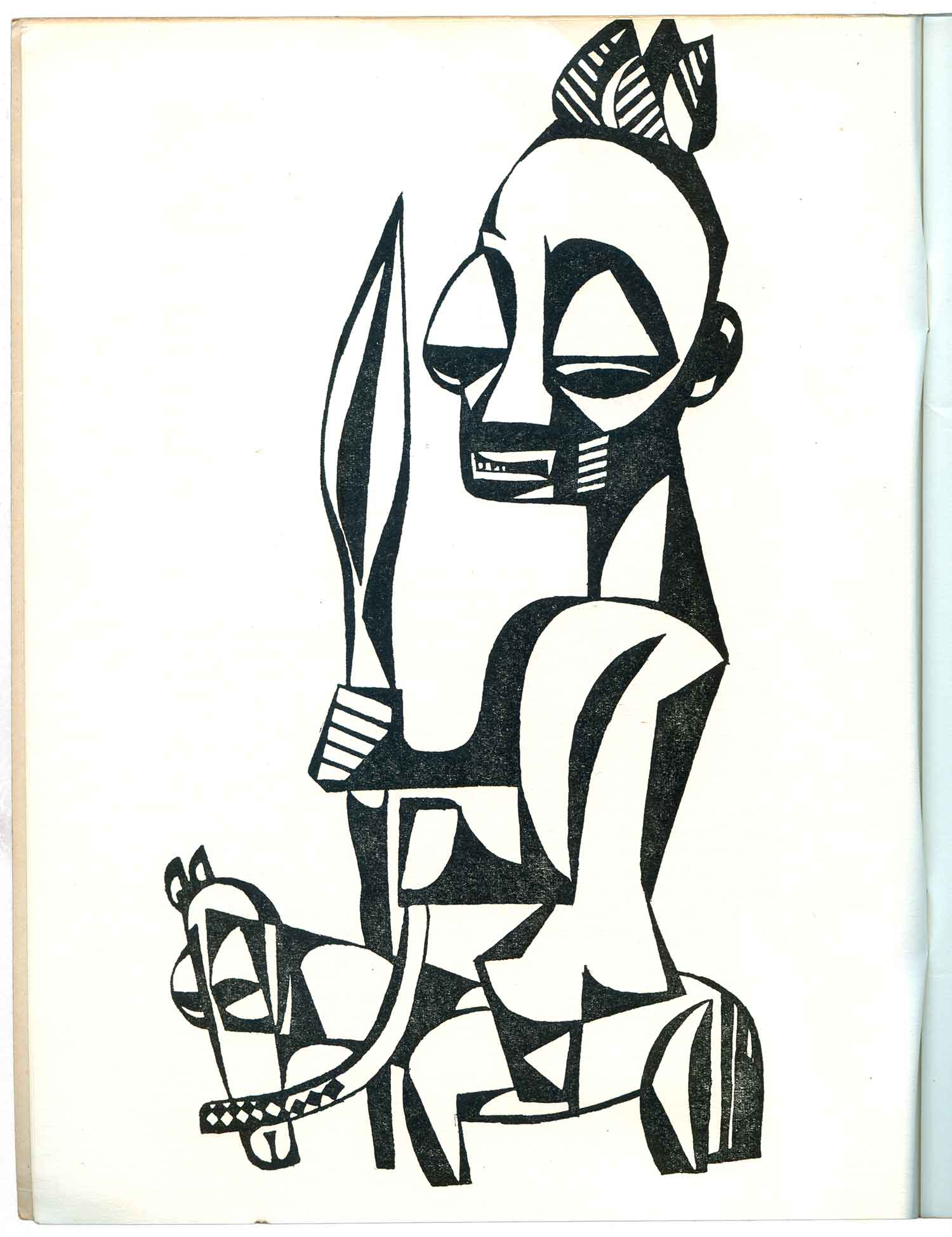
Mbari Publishing is named after the Mbari Club, a cultural center set up in 1961 in Ibadan, Nigeria by Ulli Beier—also the founder of Black Orpheus magazine. I already wrote about Beier in the last post, so I’ll skip to some background on the club. It was named by Chinua Achebe after an art/architecture manifestation of the Igbo people, which takes the form of an open sided house and represents creation. Other than Beier and Achebe, the Club also claimed Wole Soyinka, Christopher Okigbo, J. P. Clark, and Ezekiel Mphahlele as members. It was a decidedly upbeat project, riding high on post-independence good will. The center featured a performance venue (claimed to be the first place Fela Kuti played as a band leader), theatre, art gallery, and library. Since Beier was already producing the journal, publishing longer works by some of the same authors featured in Black Orpheus was a natural progression. At the time (1961) Mbari Publishing because the first publisher of African literature and art owned and operated from Africa.
Two additional offshoot clubs with similar missions were also developed in the early ’60s: Mbari Mbayo in Oshogbo (50 miles northeast of Ibadan) and the Mbari-Enugu Club of Eastern Nigeria. Mbari Mbayo also published, and I’m not entirely sure how to distinguish which books were put out by Mbari vs. Mbari Mbayo, so I’ve included both in the bibliography at the end of this post.

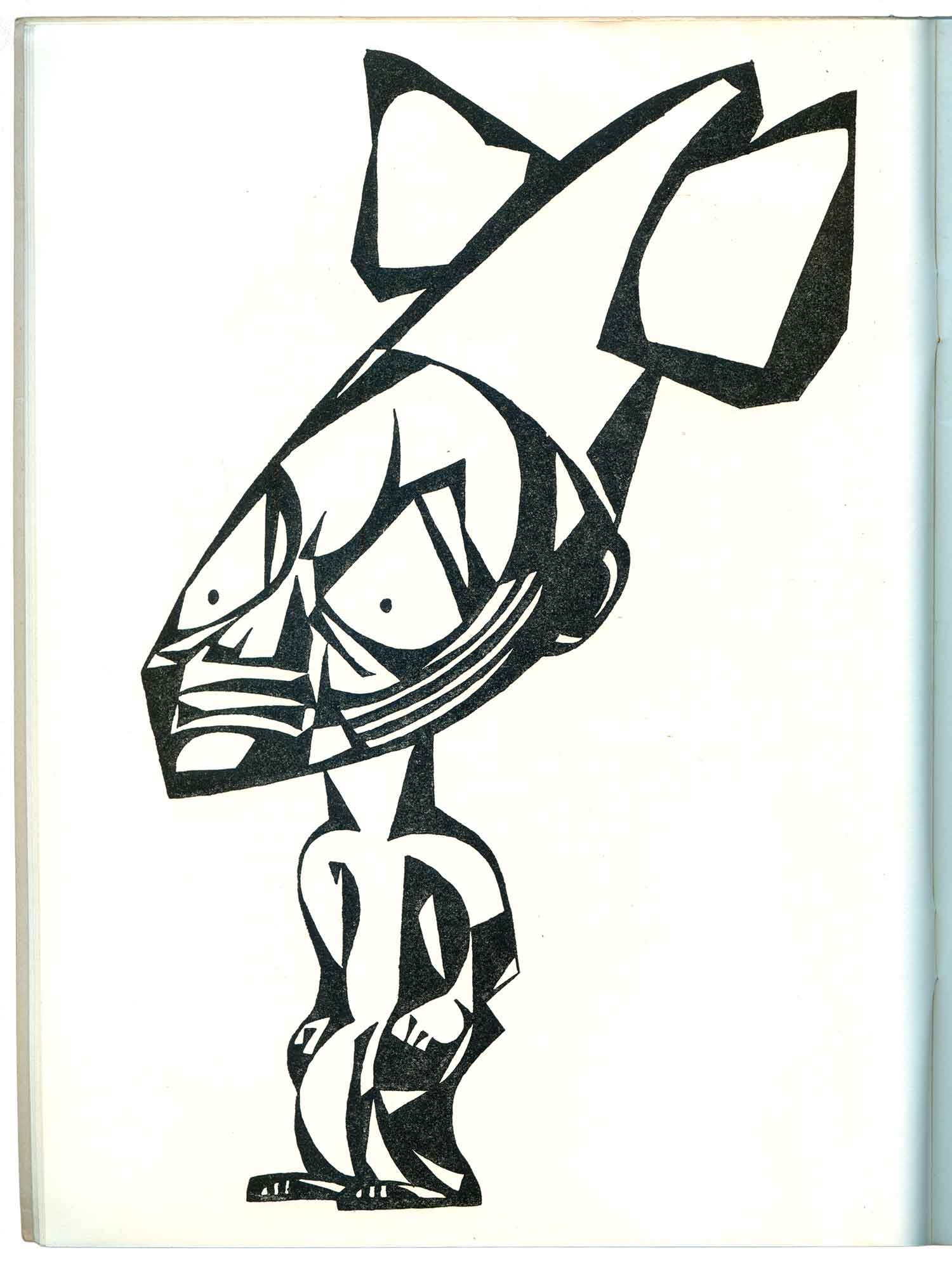
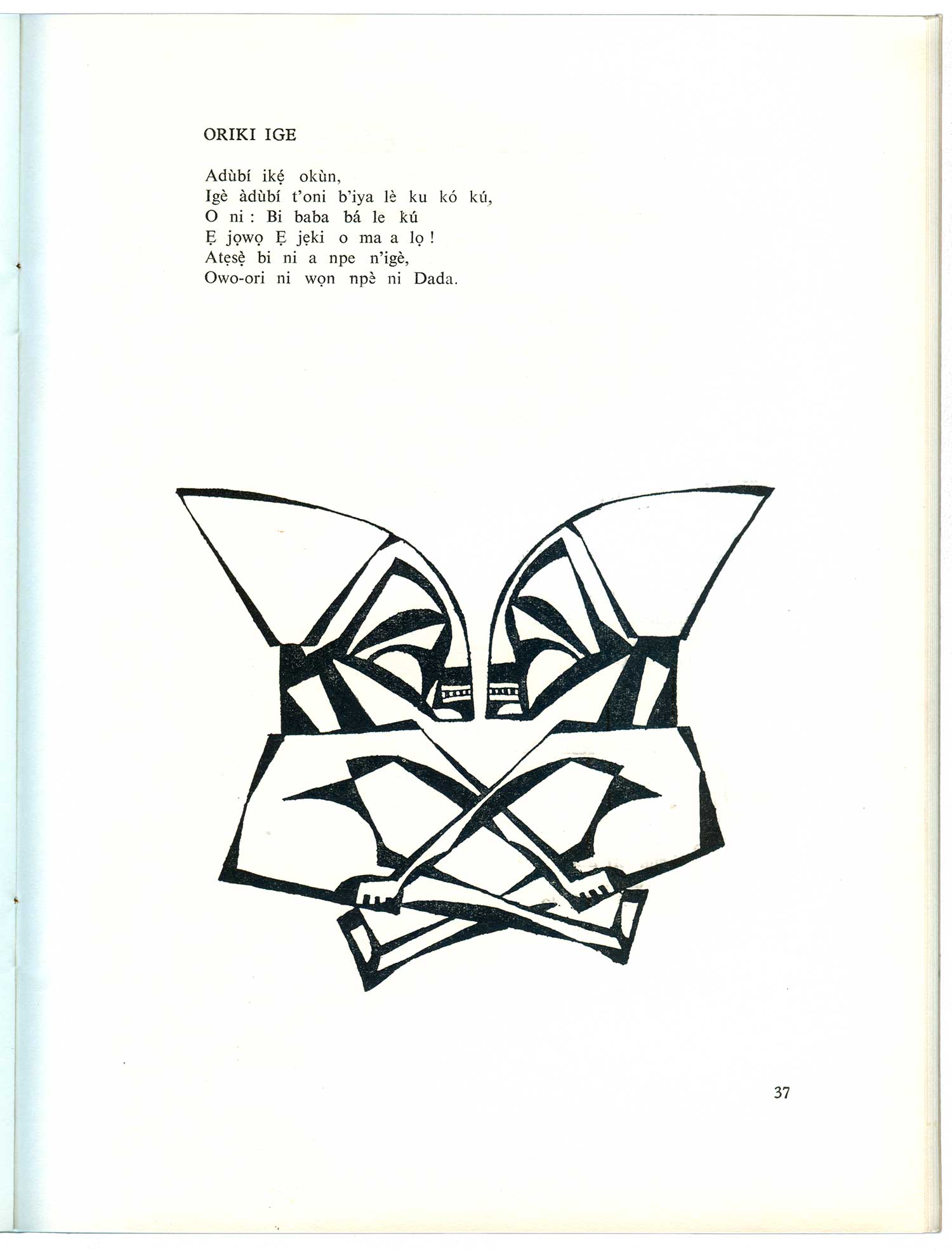
I’m going to run through the Mbari published roughly in chronological order. I started with Bakare Gbadamosi’s Oriki (above), which is from ’61 and is the book most similar in production to Black Orpheus. It is the same size, has 2-color screenprinted covers with the inside covers printed black, and features Susanne Wenger’s stylized illustrations of pre-colonial African art. I’ve also included a number of inside pages above so you can get a feel for the layout and the internal illustrations as well.
Below is one of favorite Mbari books, Uche Okeke’s Drawings. And it is exactly that, a collection of single page drawings by this well-known Nigerian Artist. Each page features a single figure, each figure drawn from Igbo folklore. Outside of a short 1-page introduction by Beier, the drawings are allowed to speak for themselves. One of the things I find so stunning about this book is how much the drawings presage the hipster comic art of today. What amazing things would Okeke be able to do with a risograph and a half dozen color drums?!
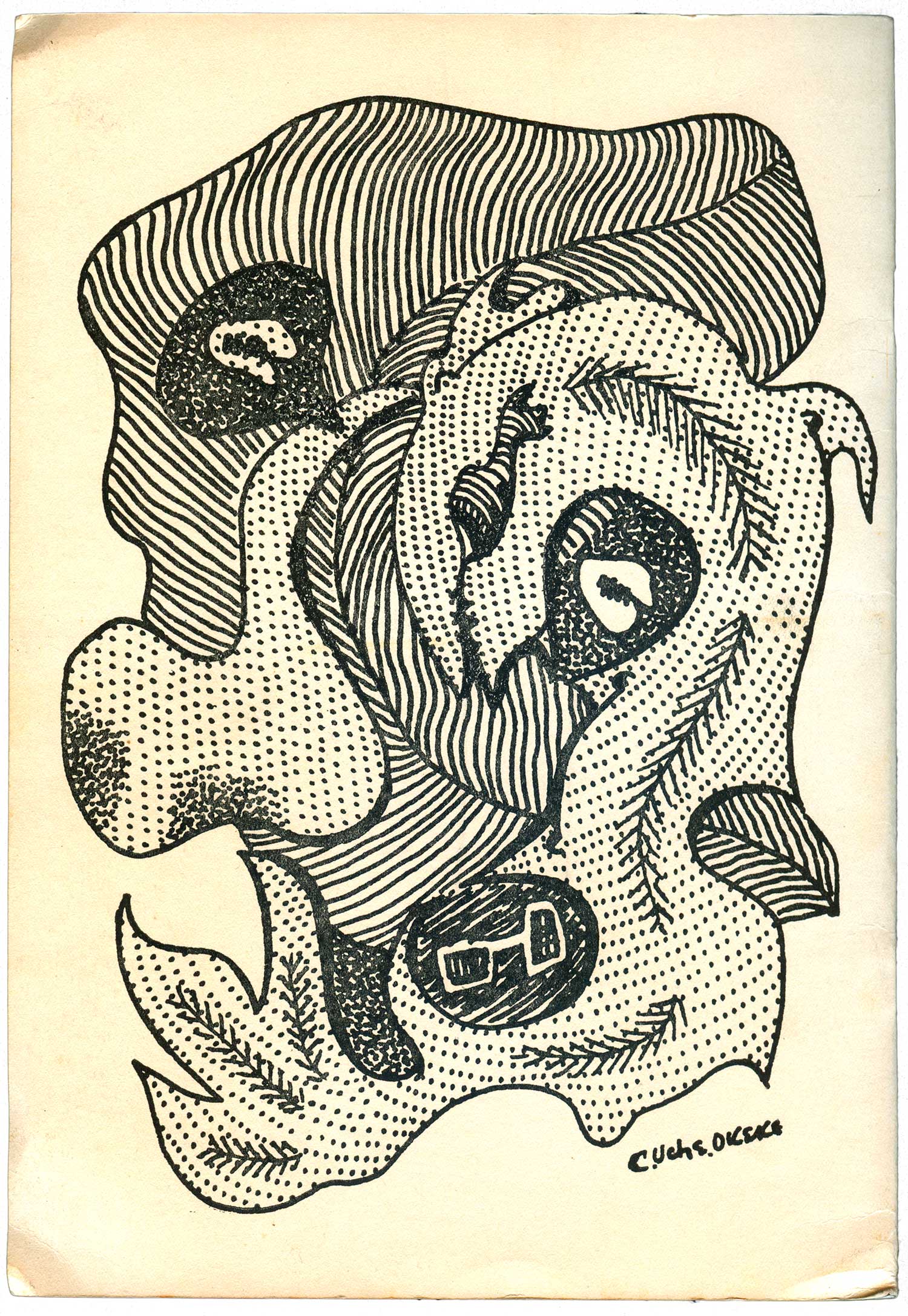
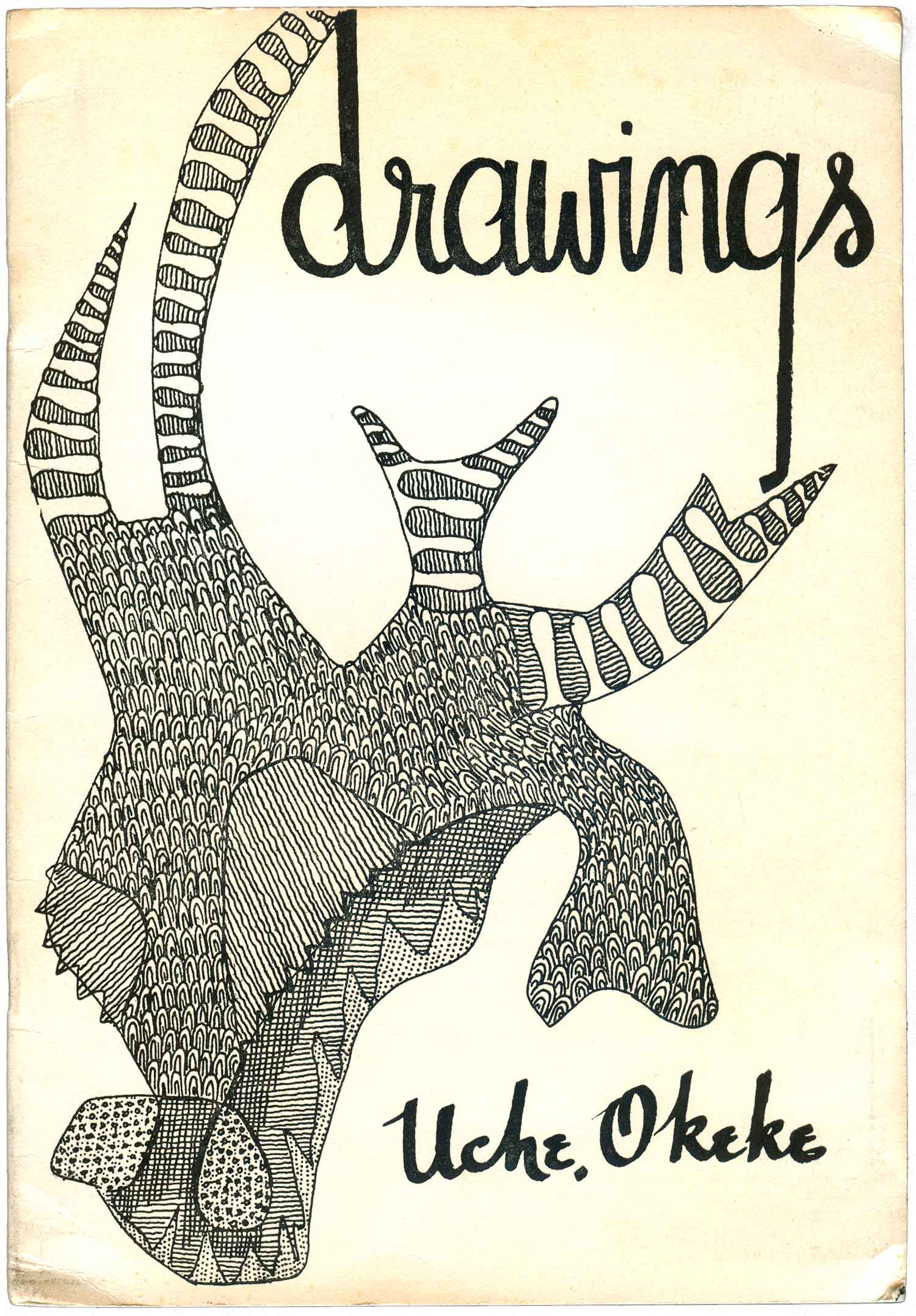
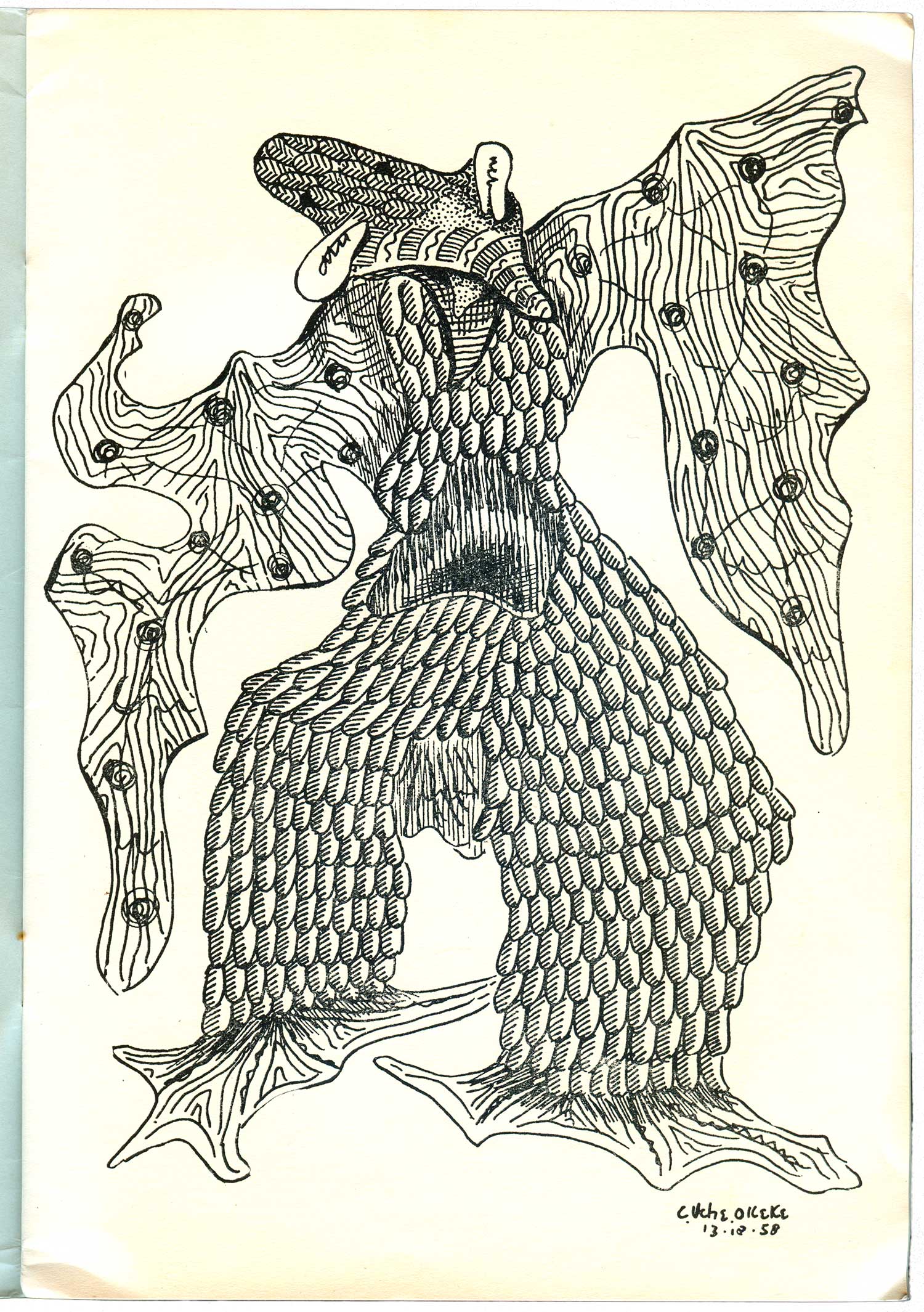
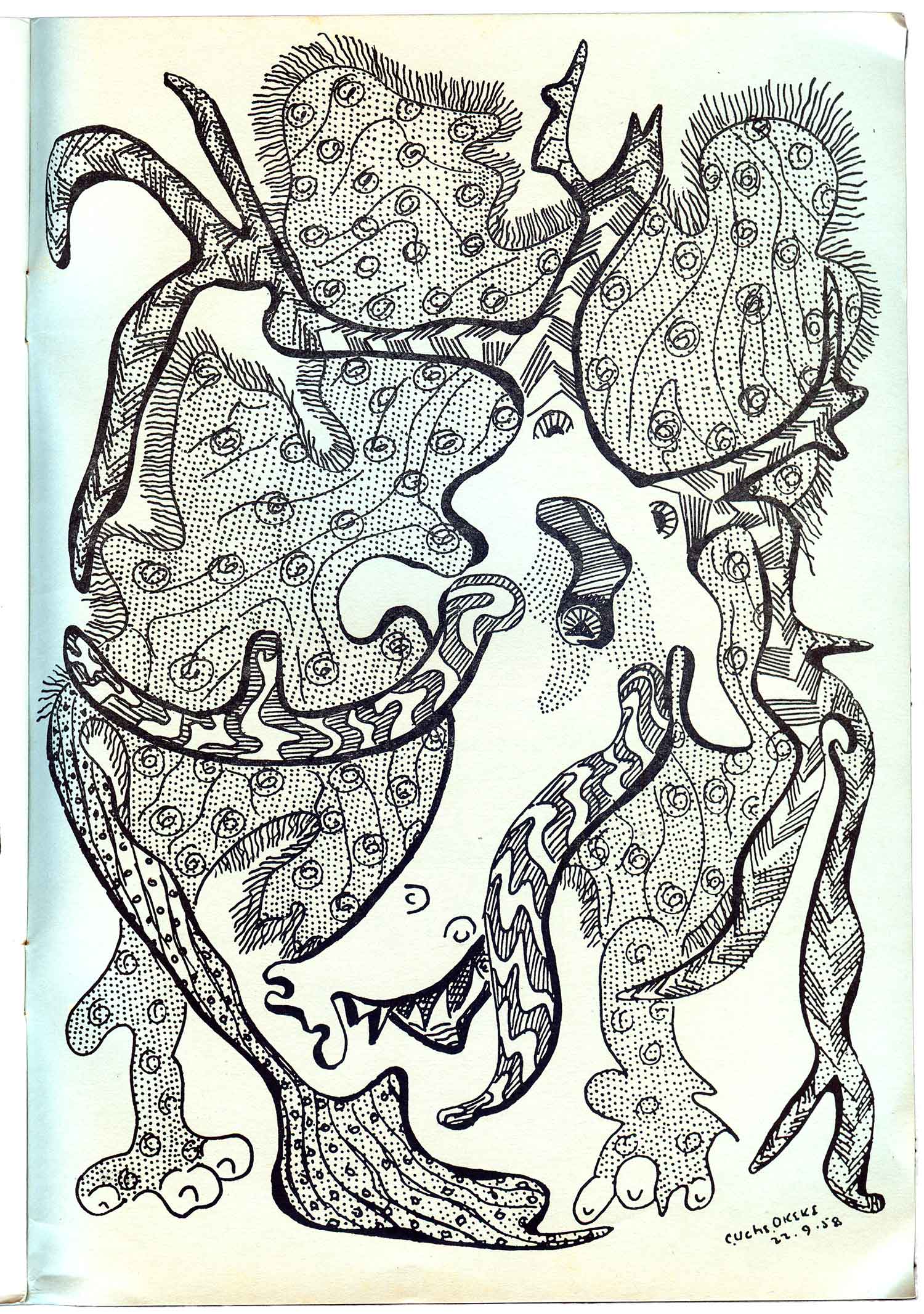
Léon Damas’s African Songs of Love, War, Grief, and Abuse has a new format, being landscape oriented, and featuring set type on the cover, rather than being entirely hand drawn. The illustrations here are the work of Georgina Betts, who was Beier’s second wife. Although the cover is screenprinted, overall this book has a much less DIY and more “professional” feel than the previous.
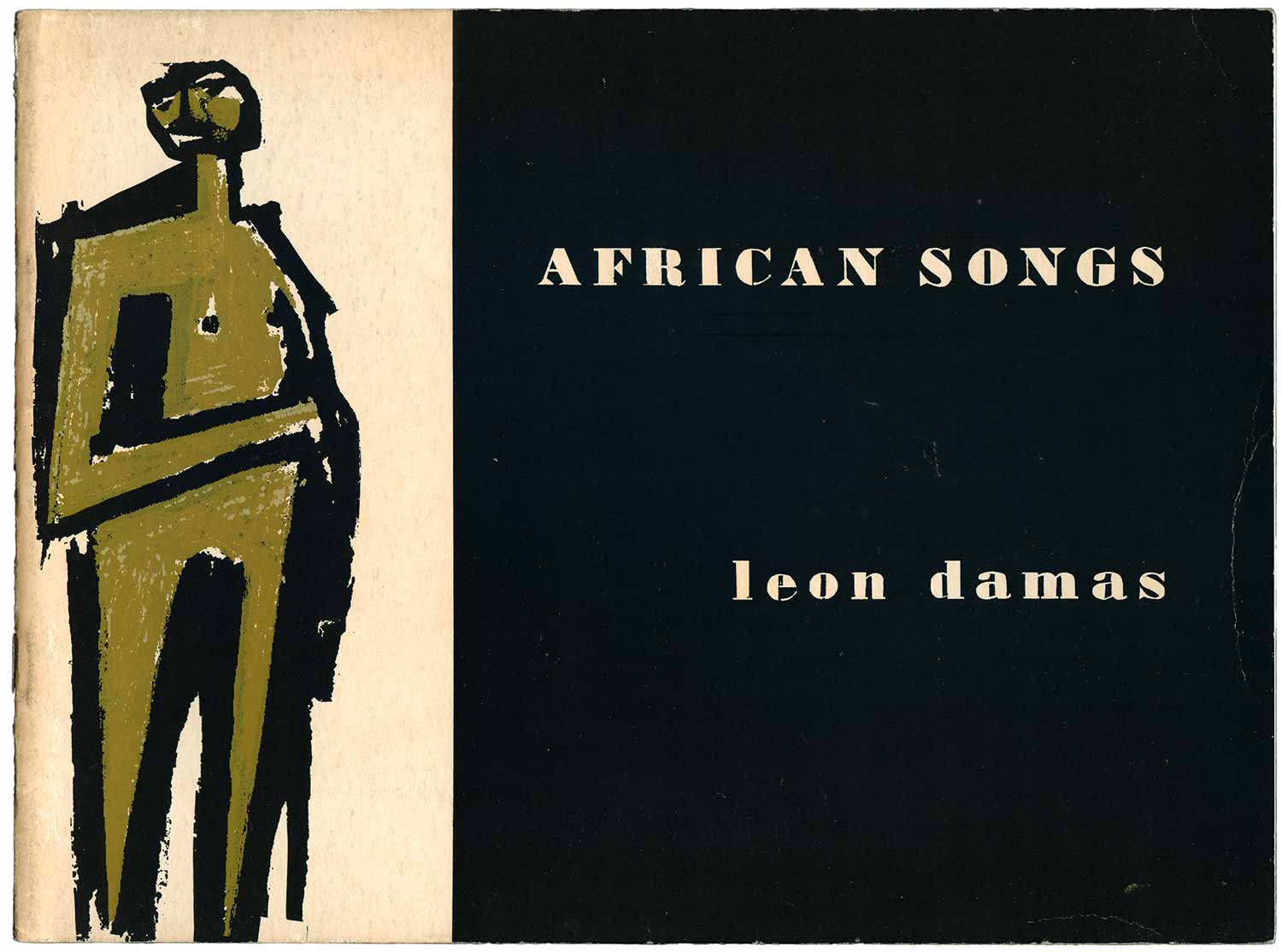
Damas was born in French Guiana, and was a founder of the Francaphone Negritude movement, being close colleagues with both Aimé Césaire and Leopold Senghor. This is the first book of work in translation on Mbari. This was something that Beier and others in the Mbari Club were very interested in, the desire to bring together Anglophone and Francophone Africa, as the distinction was entirely of colonial construction.
As you can see below, when opened the book has an impressive wingspan, almost two feet wide.
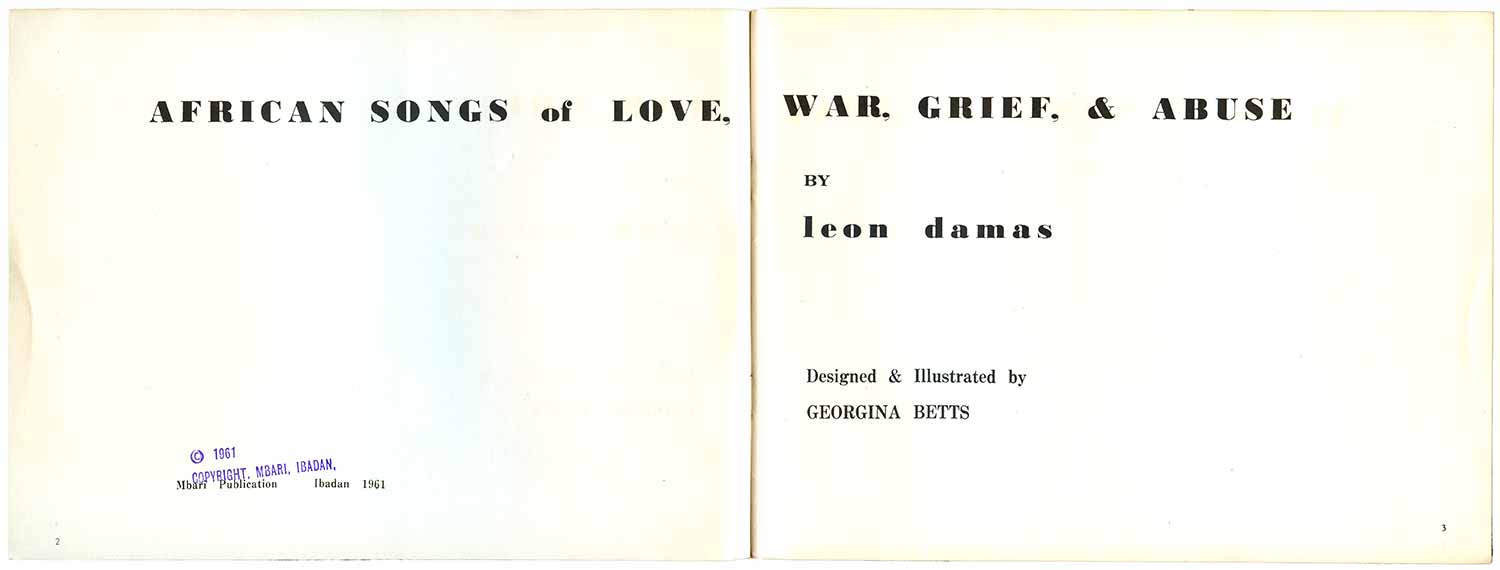
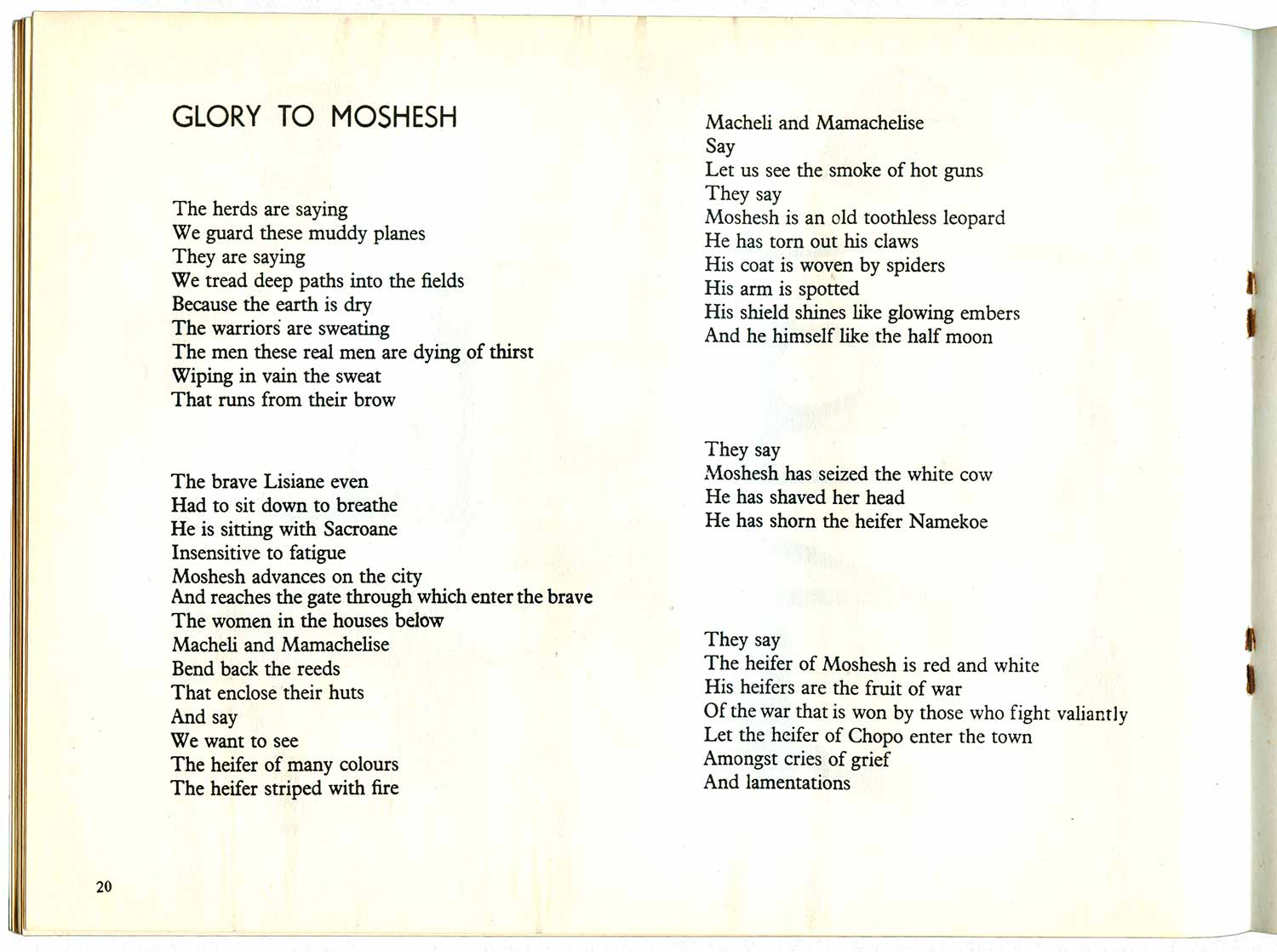

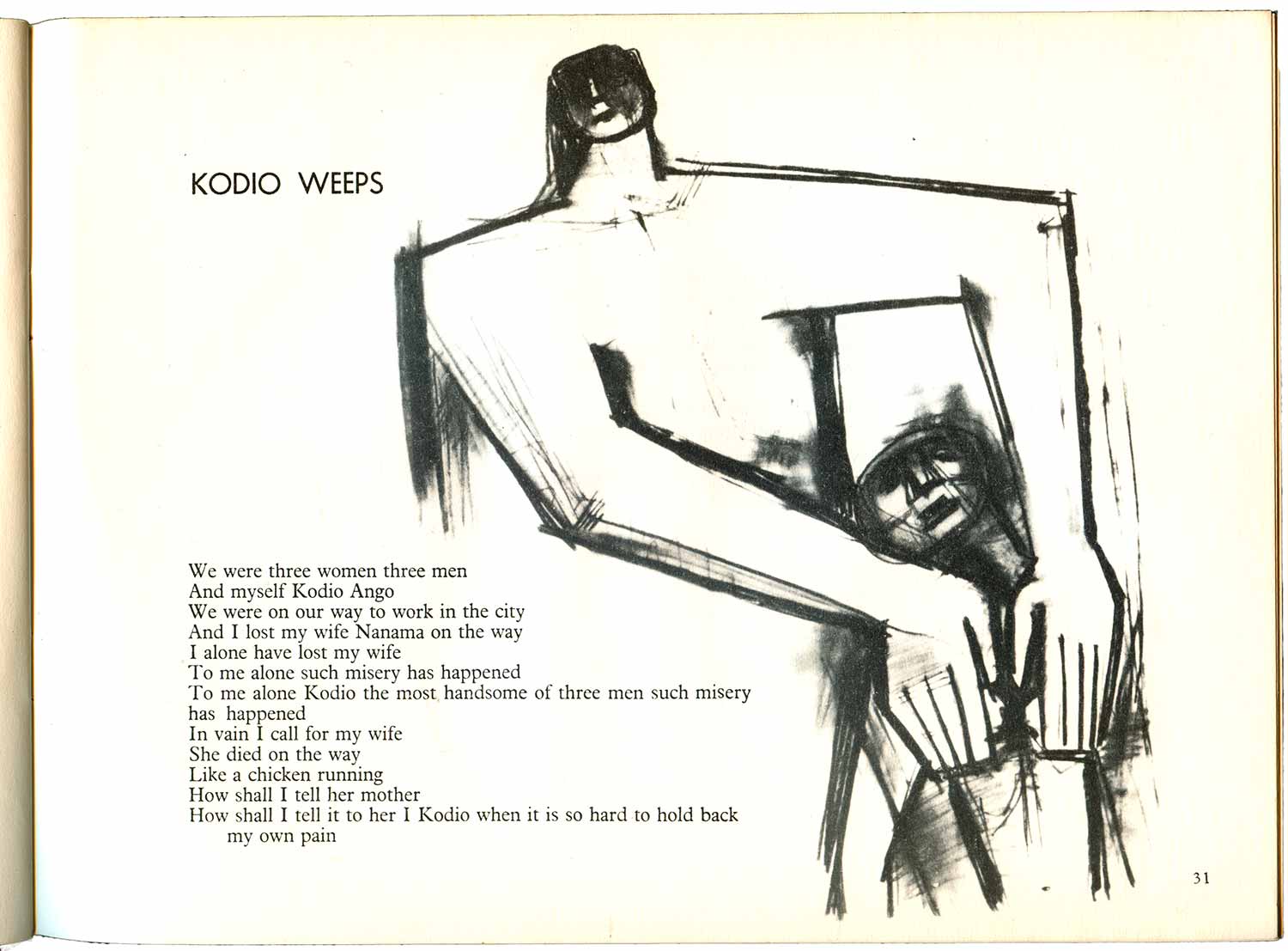
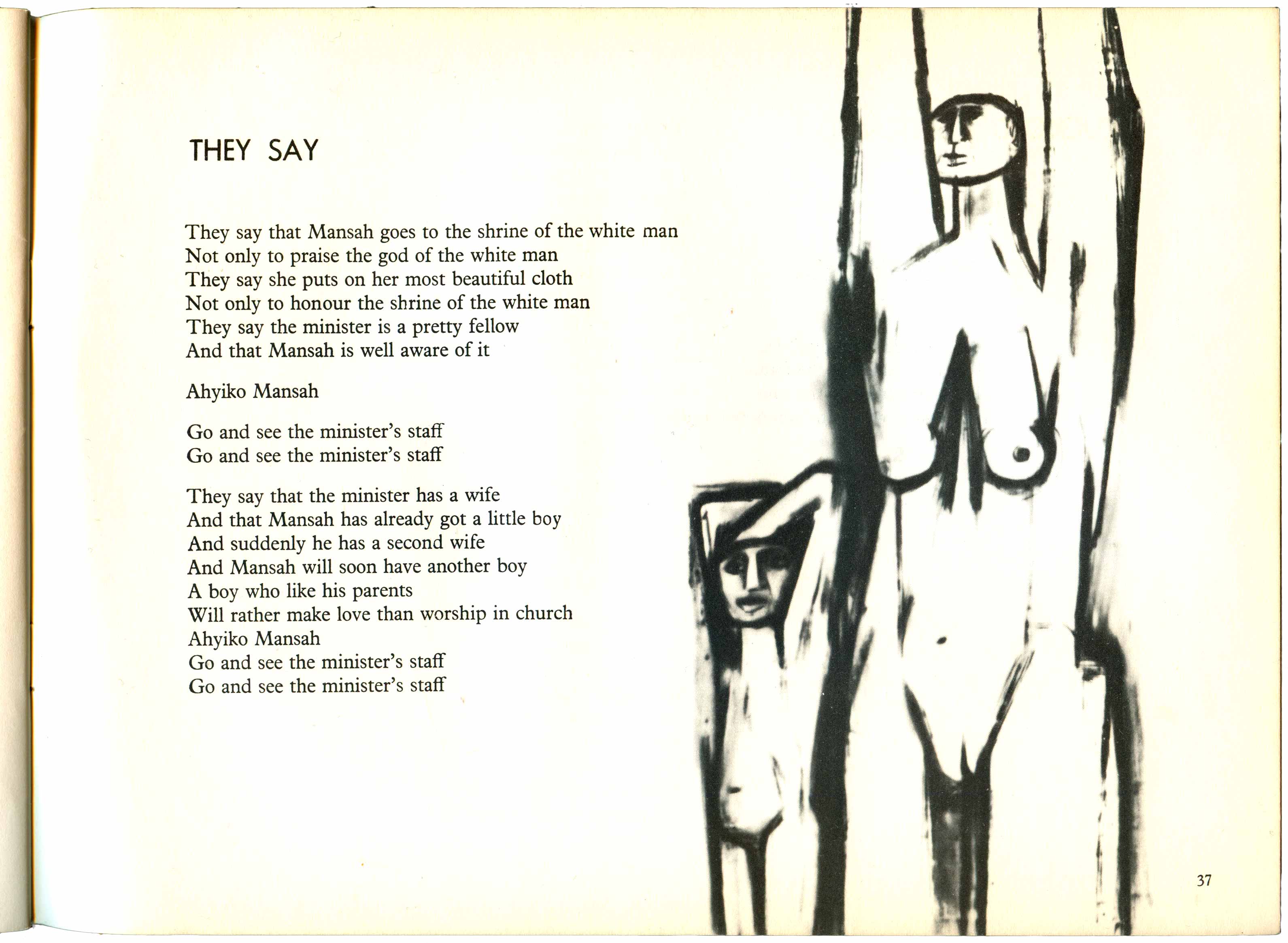
John Pepper (J.P.) Clark’s first books were published on Mbari. 1961 saw the release of his first play, Songs of a Goat, and 1962 the release of Poems. Both covers are below, and both are drawn and designed by Susanne Wenger in the Mbari/Black Orpheus house style.
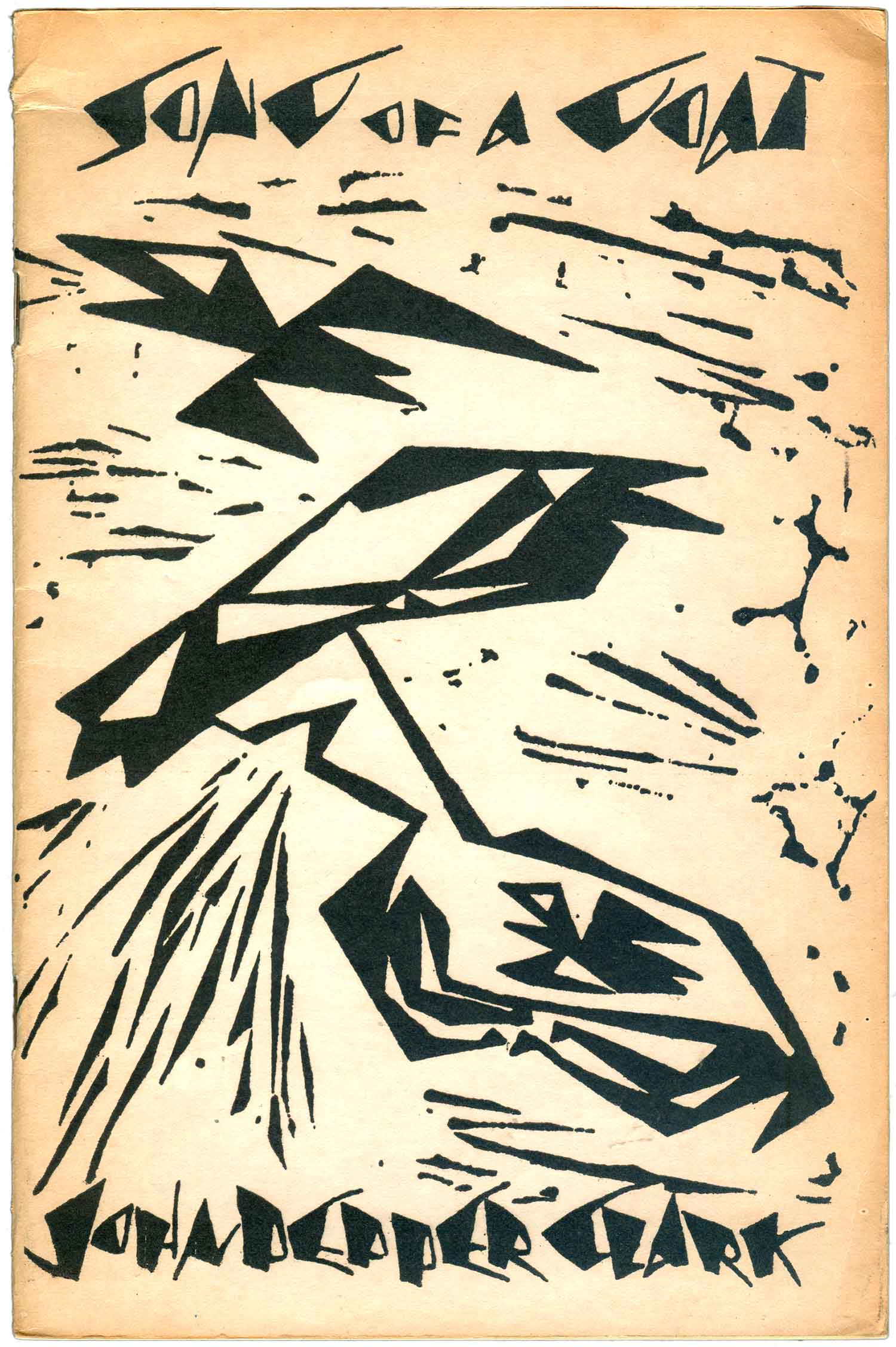
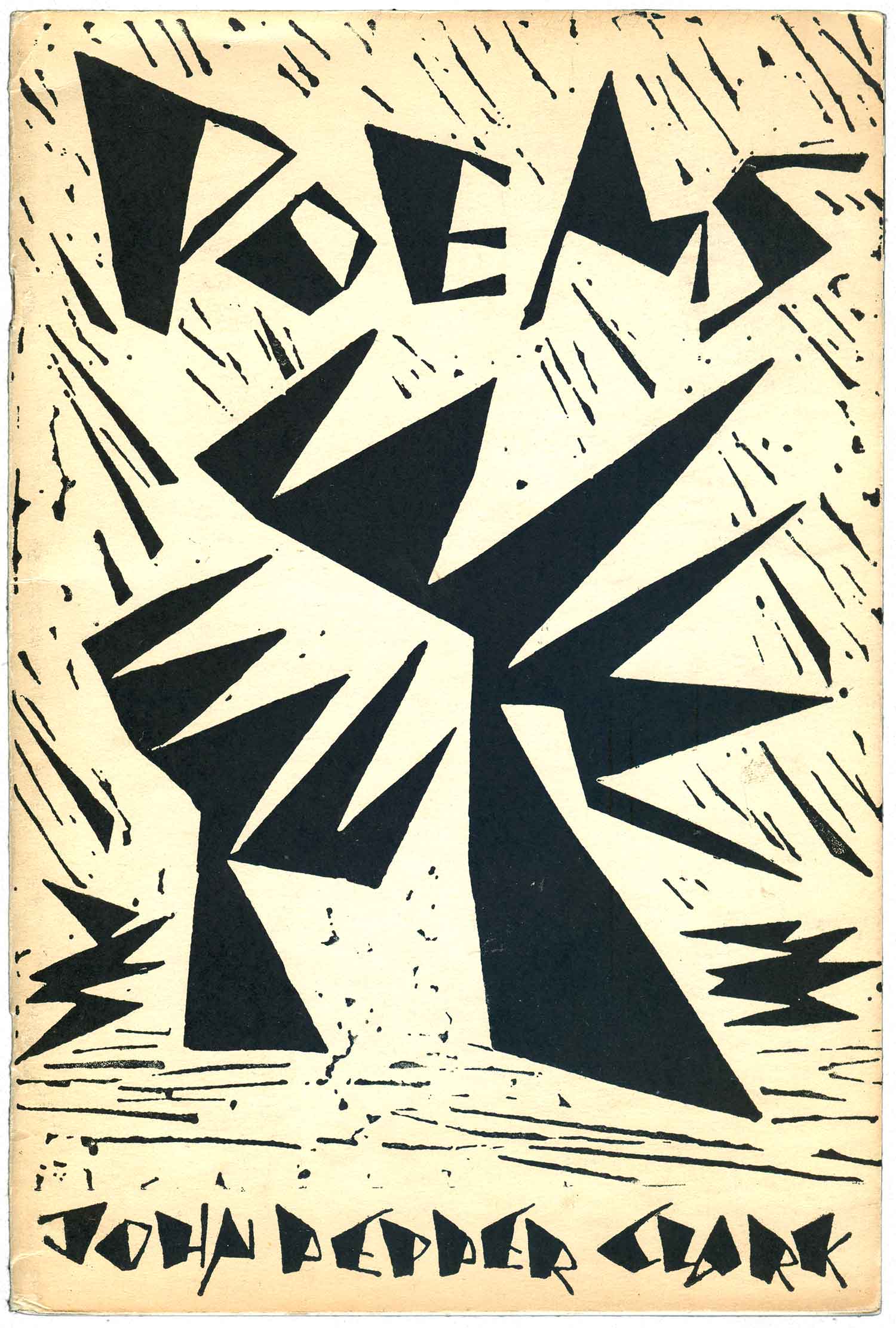
Poems is much like the above poetry volumes, profusely illustrated in a way that carries you as a reader through the book. I couldn’t resist including a large sampling of the inside pages of this book. I’m not 100% certain, but the full page inside illustrations might be struck from wood or linoleum blocks.
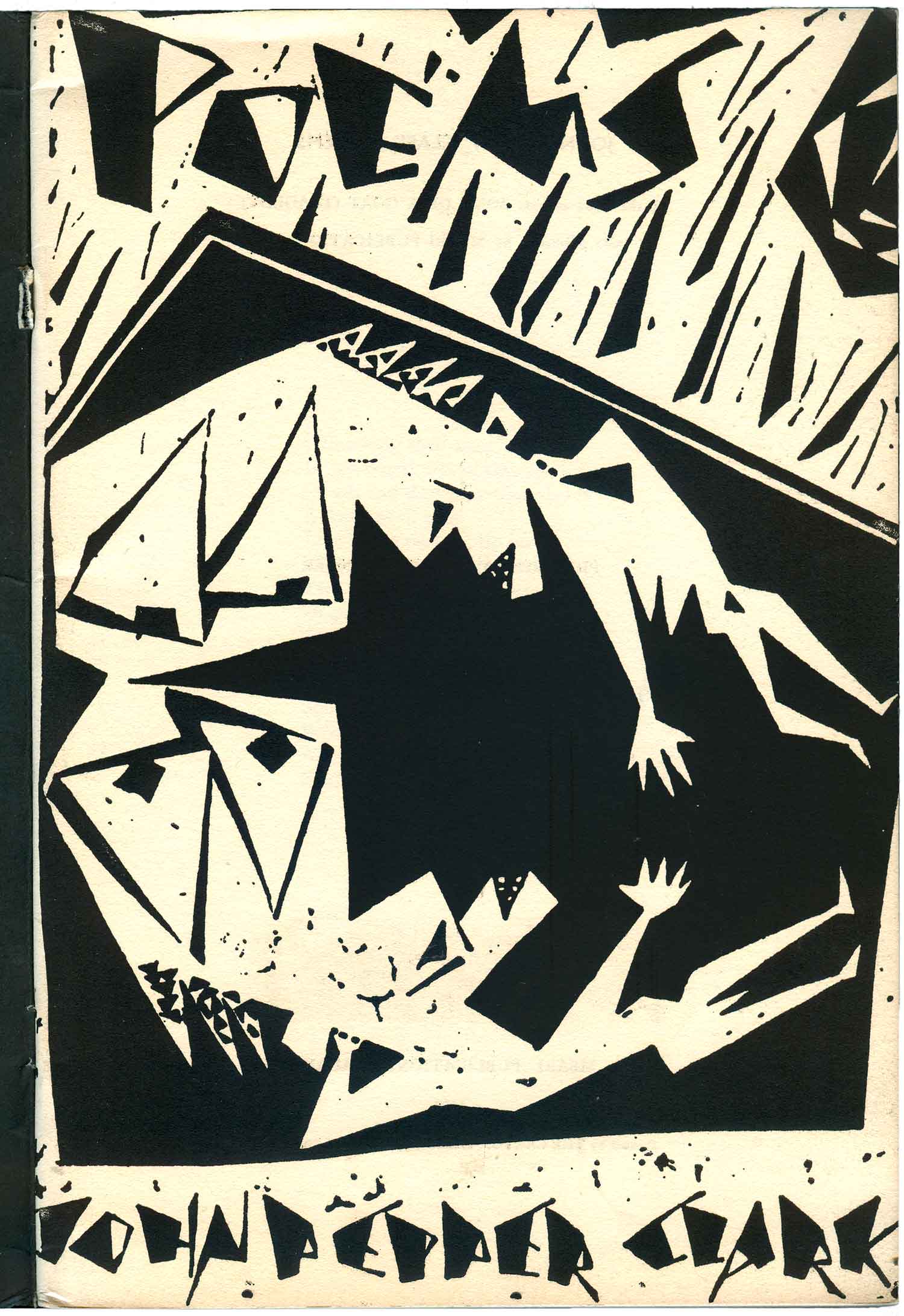
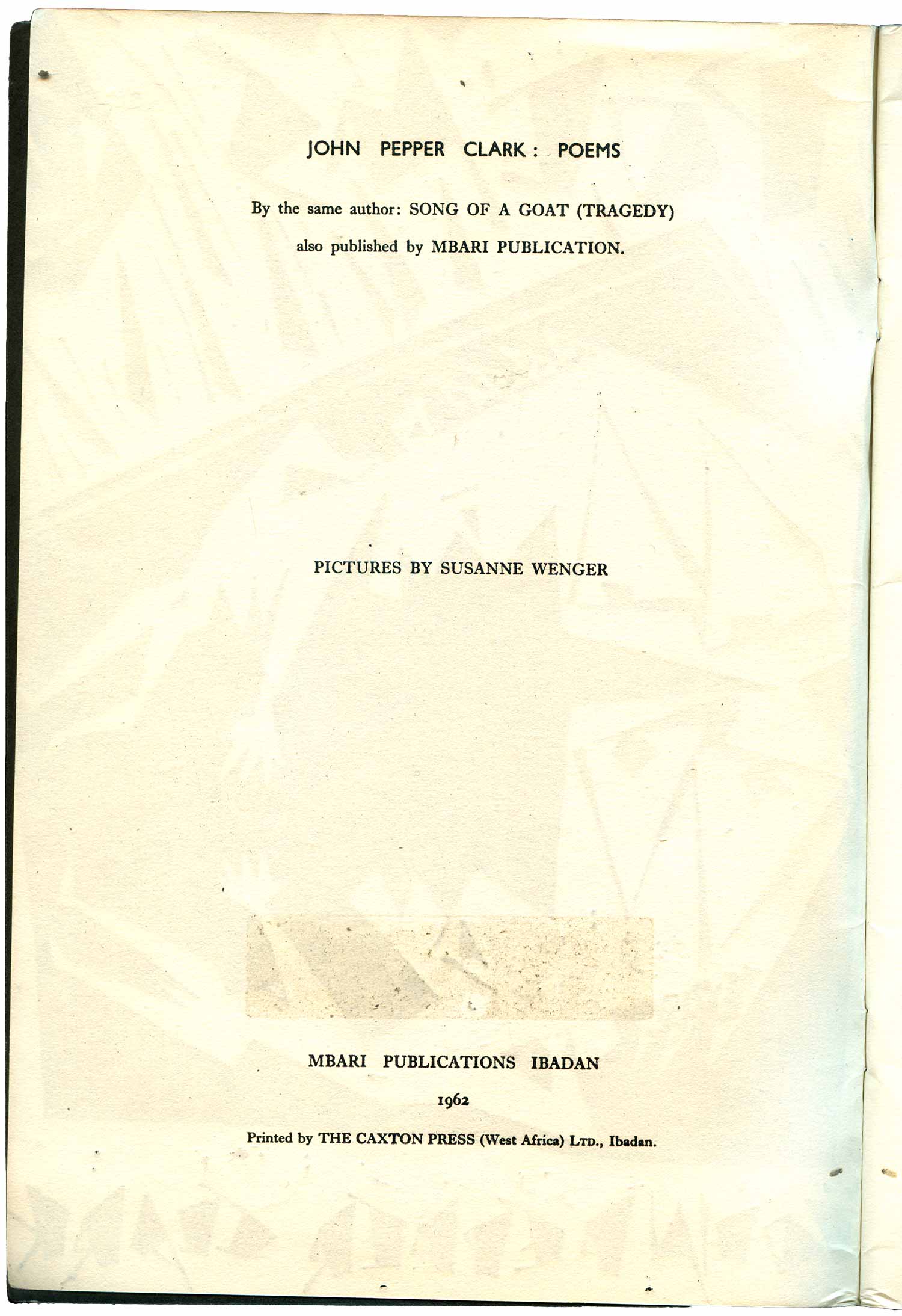

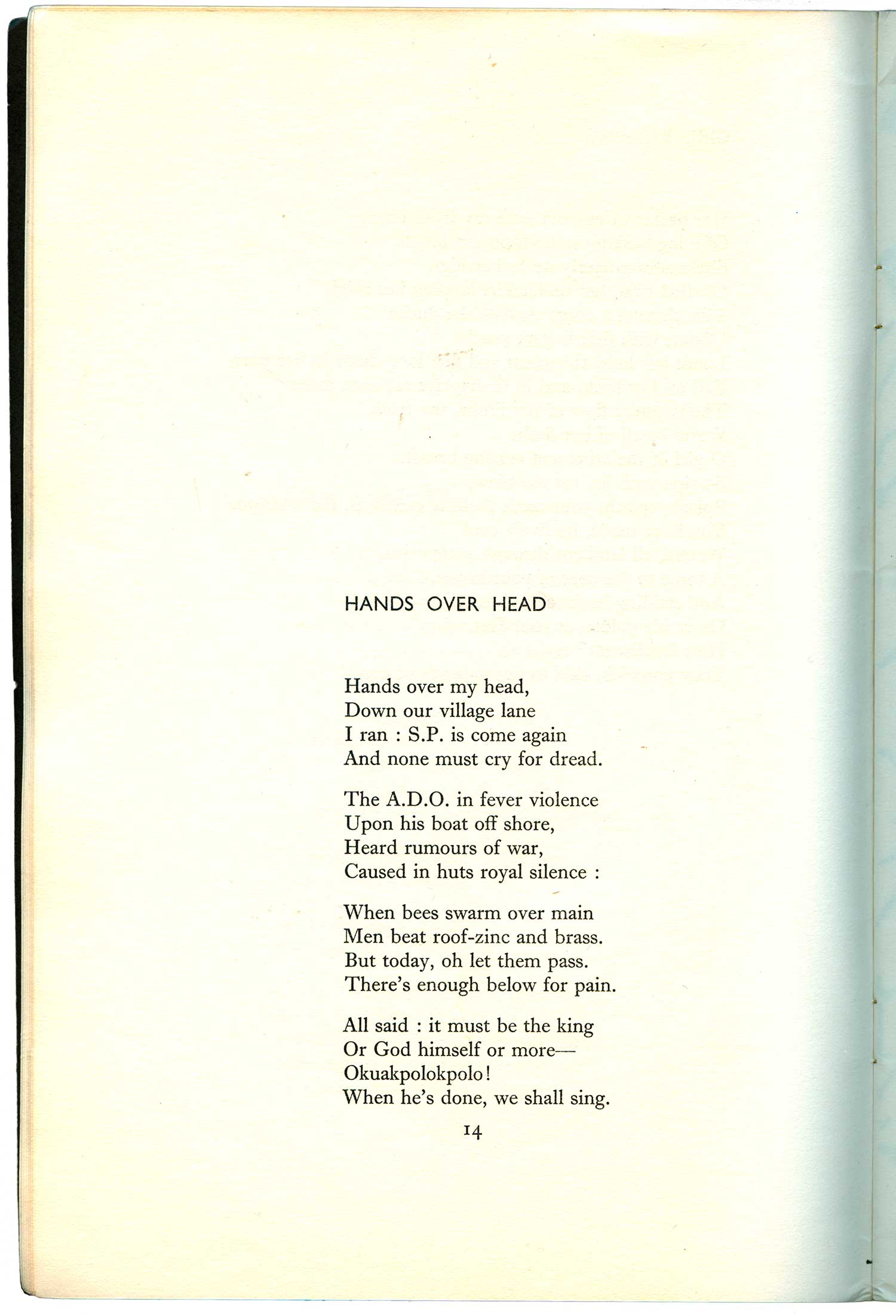
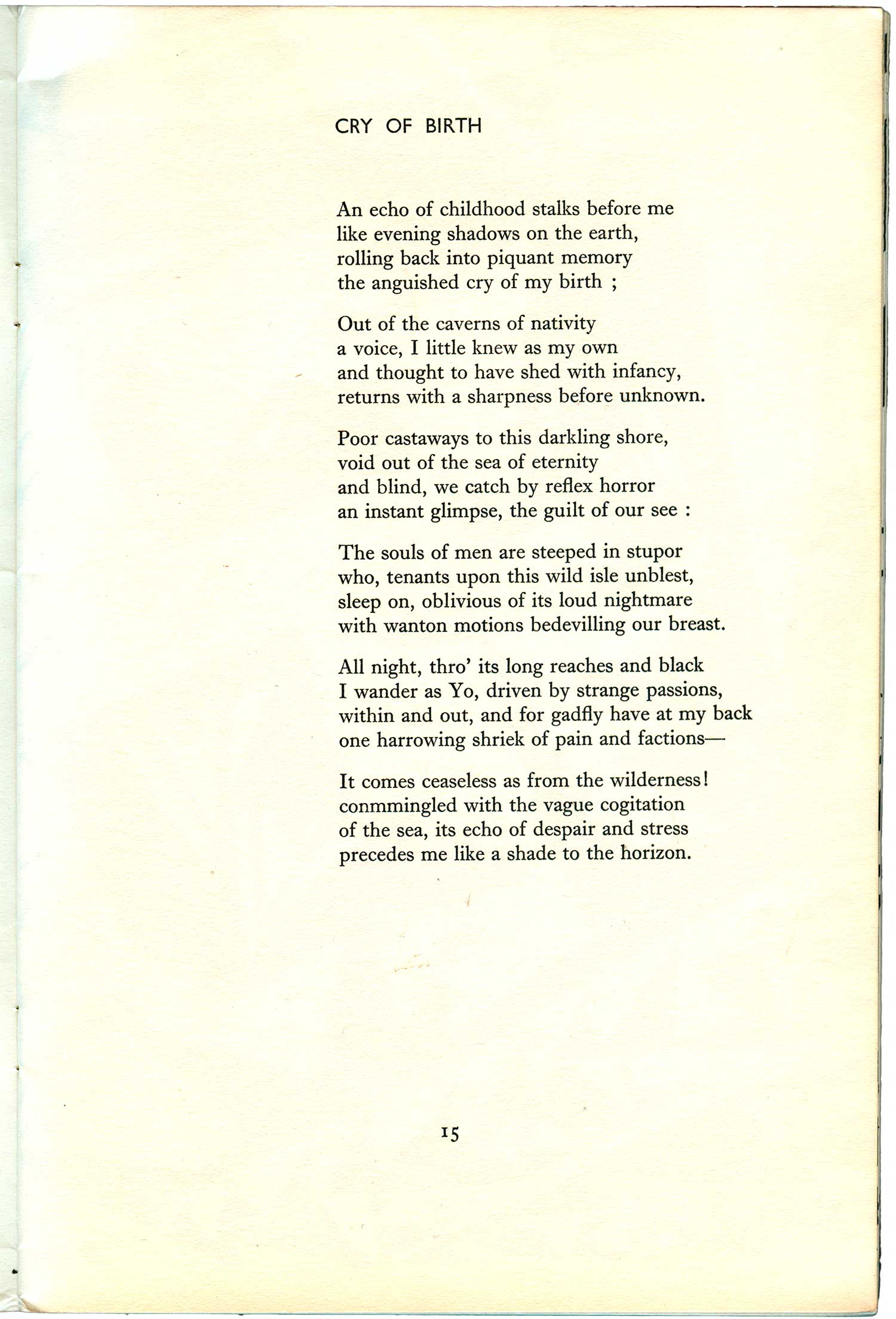
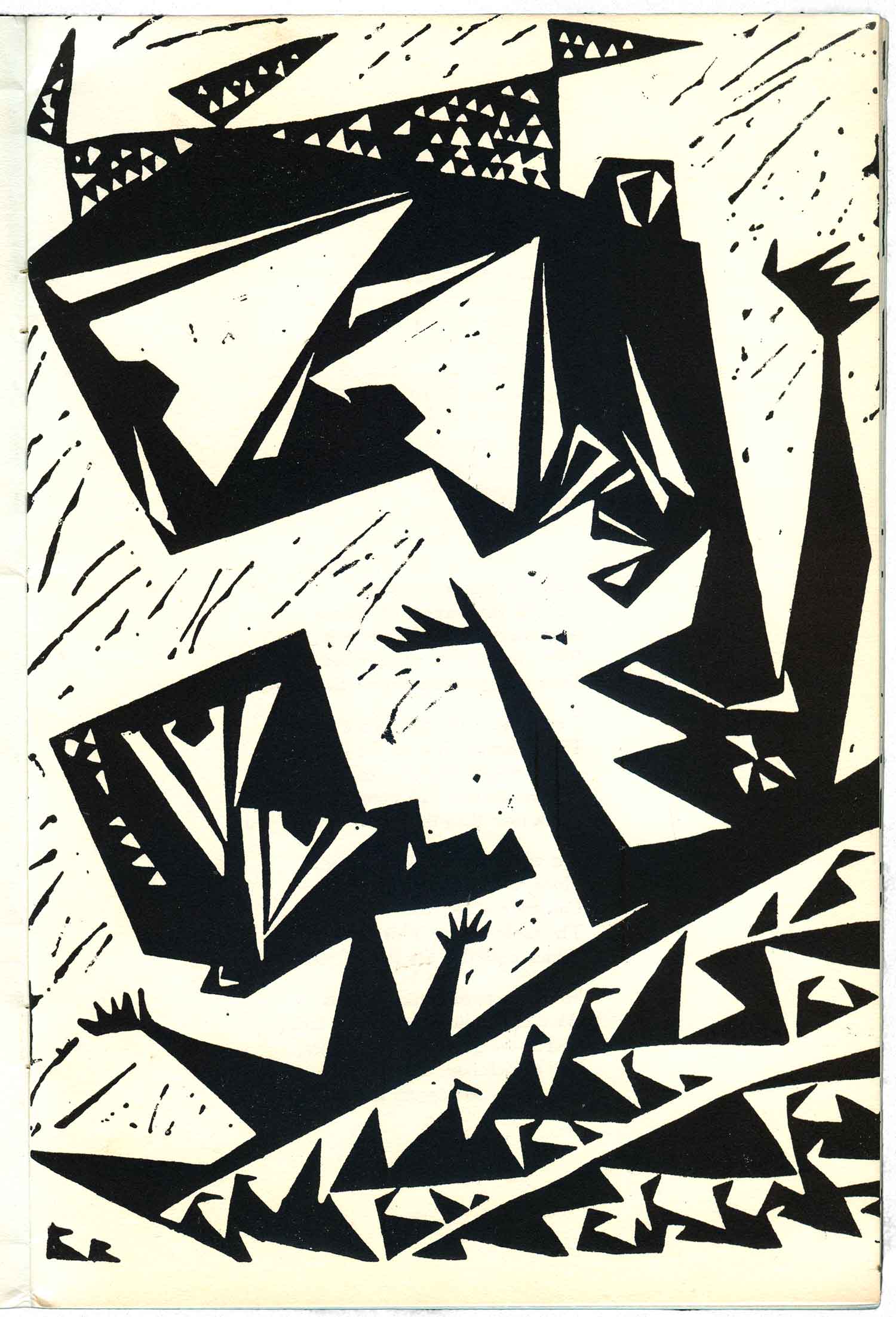
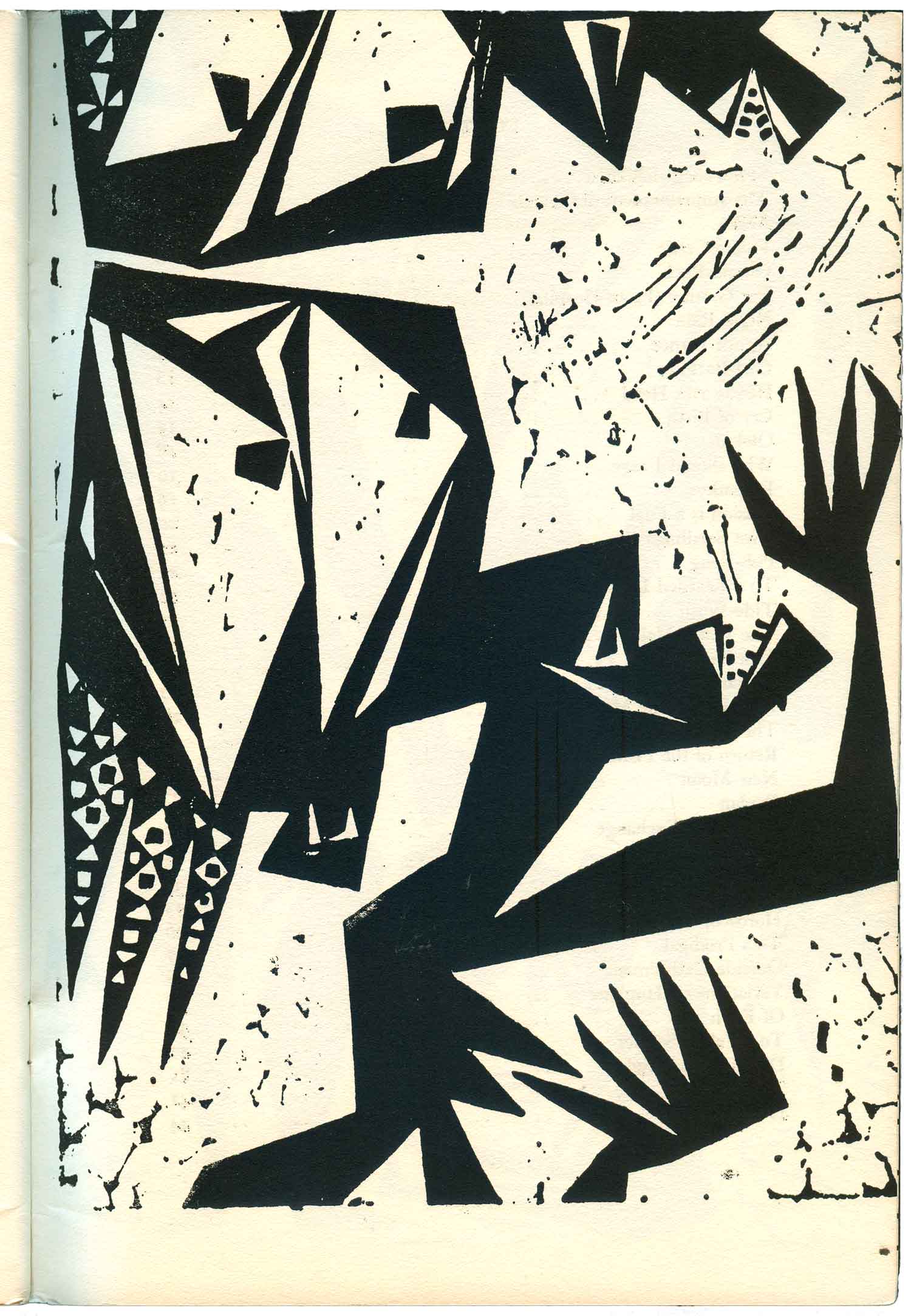
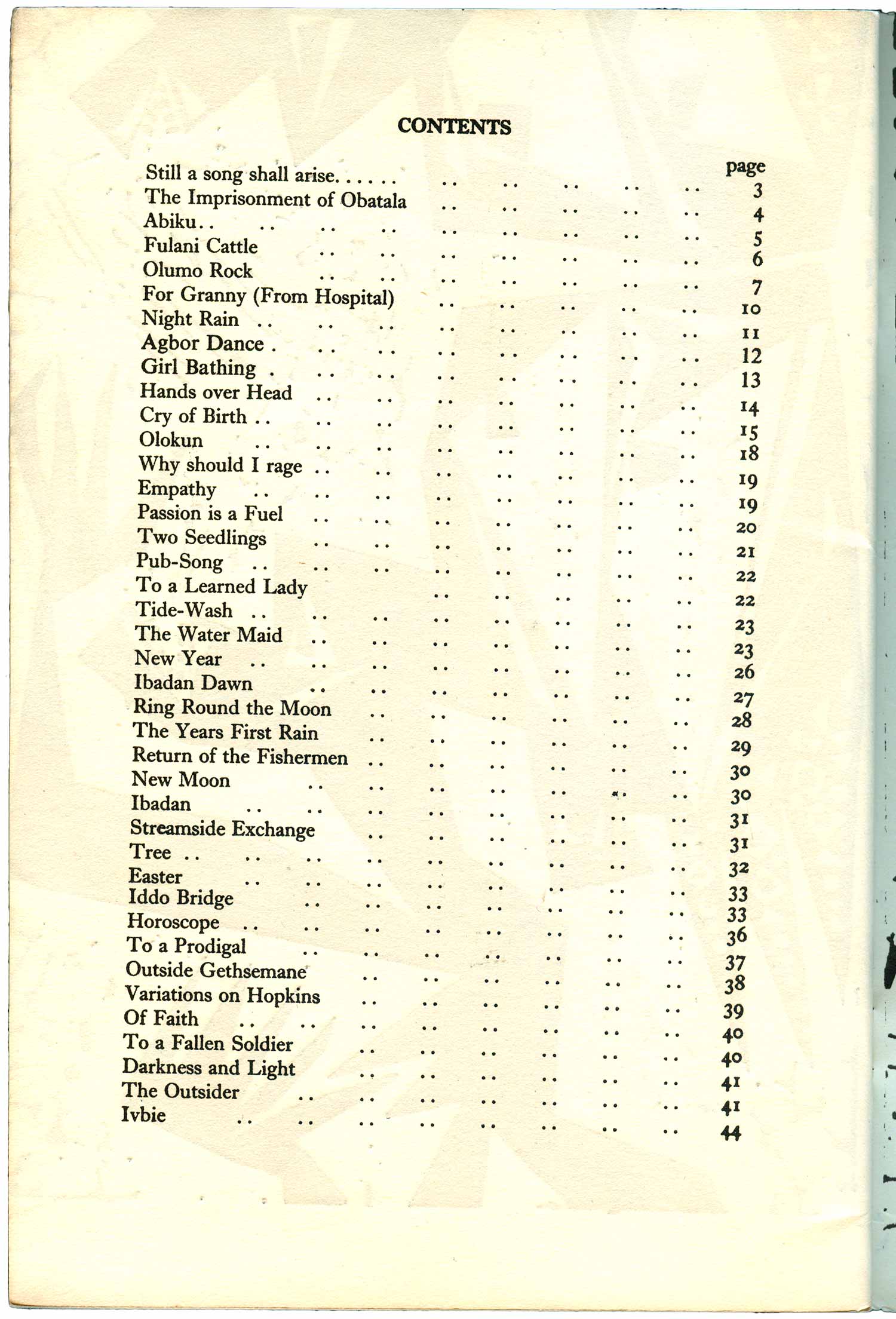
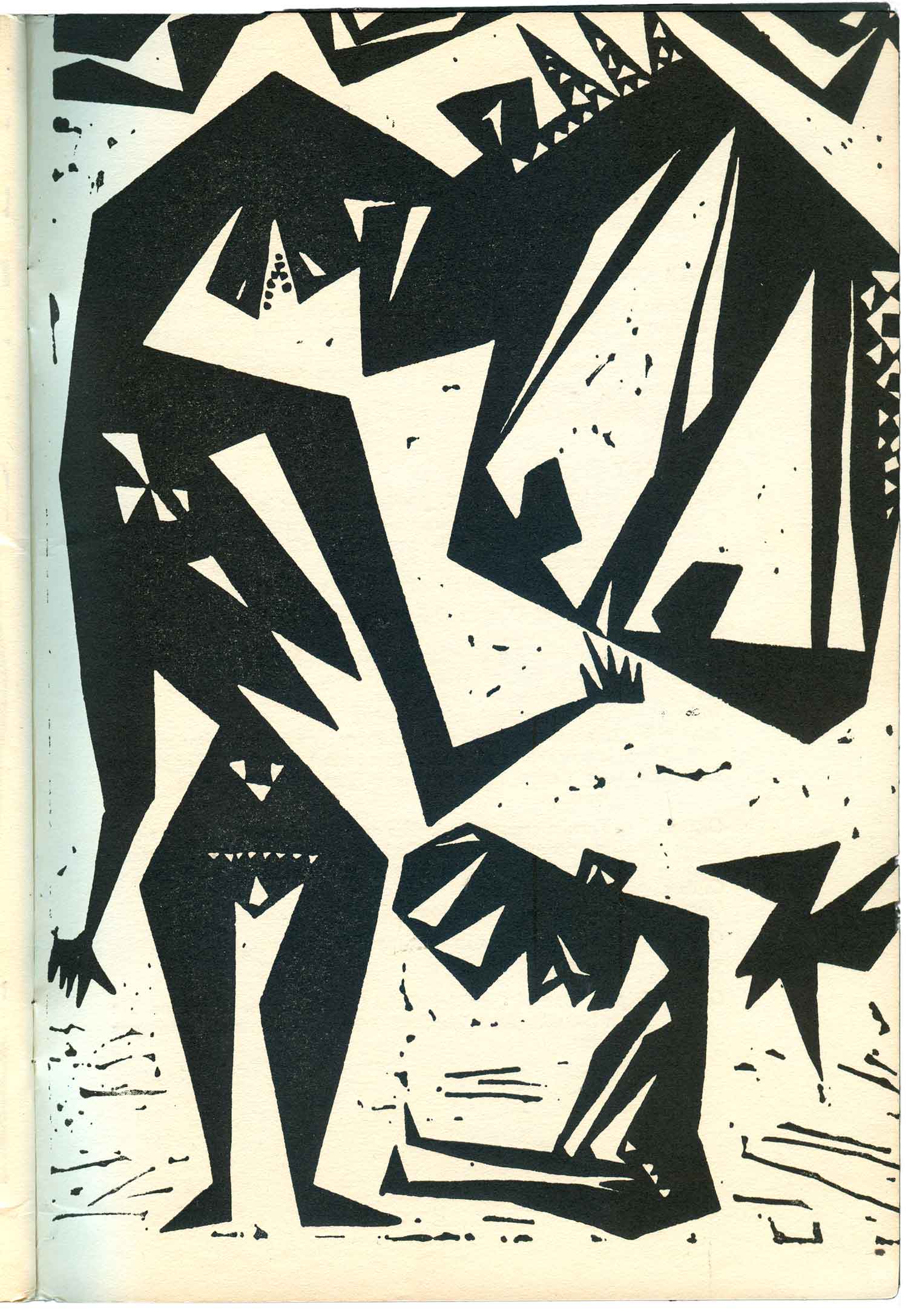
The Moon Cannot Fight is a kid’s book of Yoruba children’s Poems. It was compiled by Beier and Bakare Gbadamosi, and really wonderfully designed and illustrated by Georgina Betts. It’s the only Mbari book printed with more than two colors (black, red, and blue), and it deserved the extra expense. Below are a ton of internal drawings and page spreads—I love this book, and am excited about being able to share it with my son when he’s old enough to not tear it to shreds and chew on the pieces.
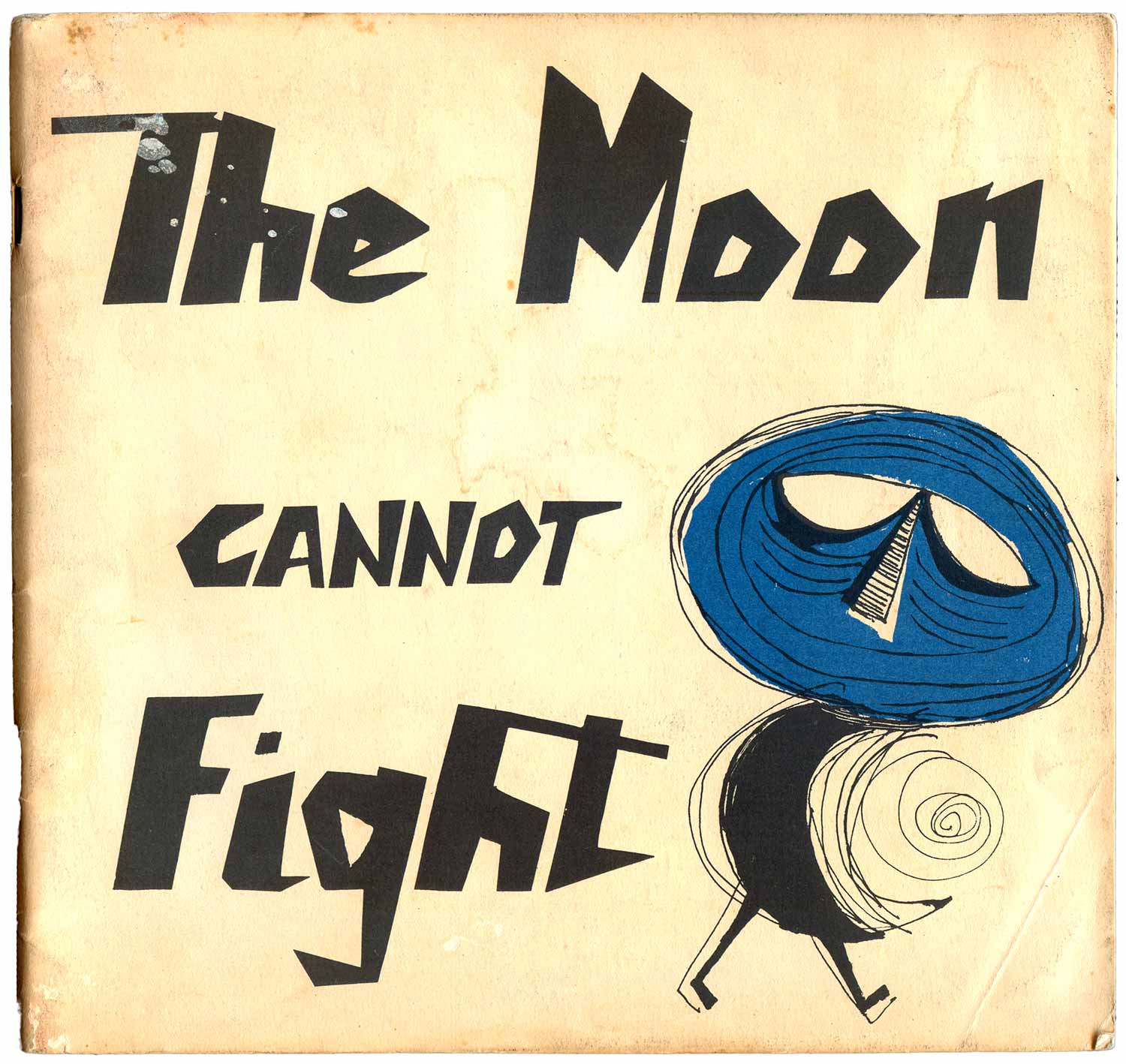
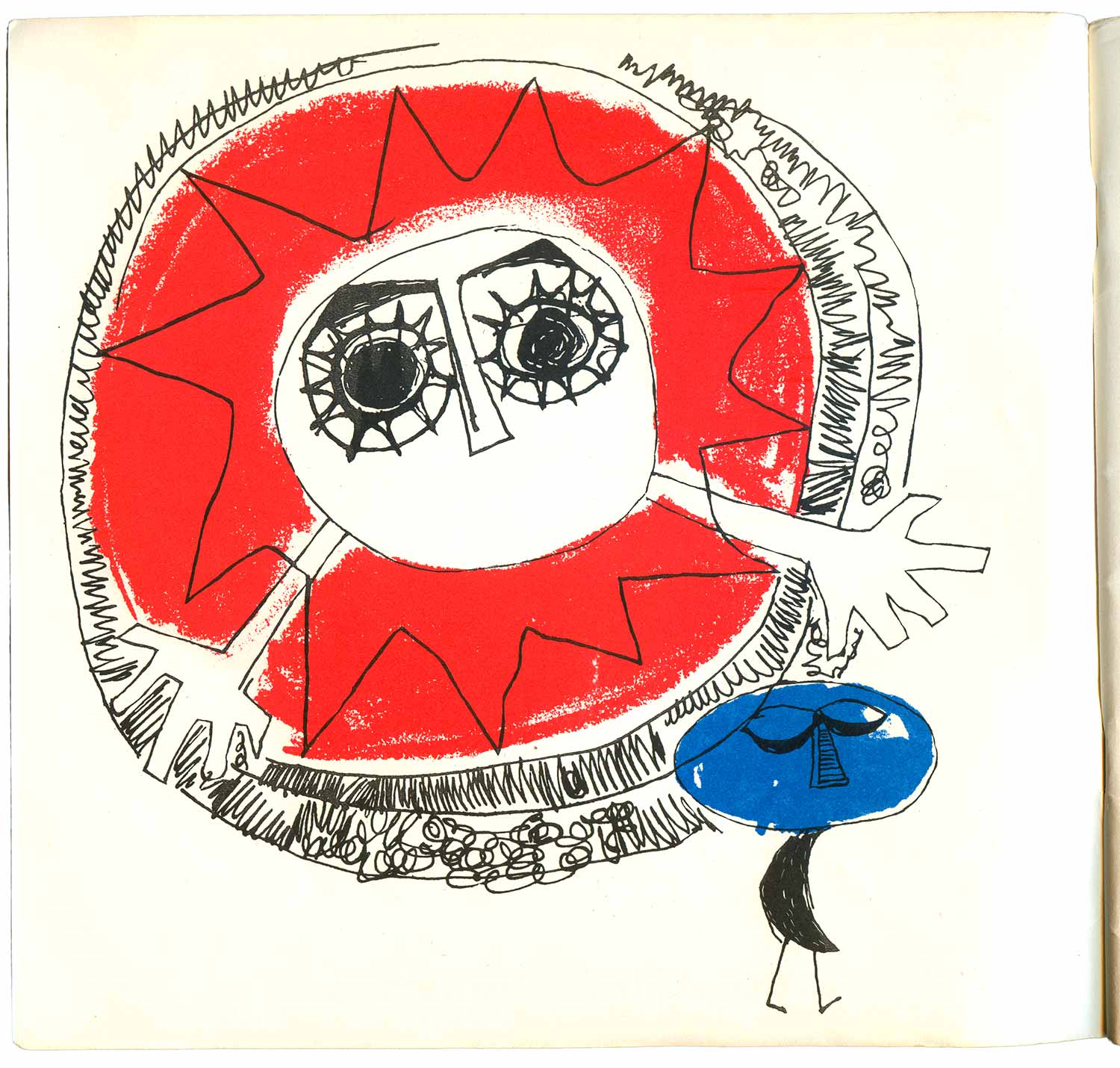
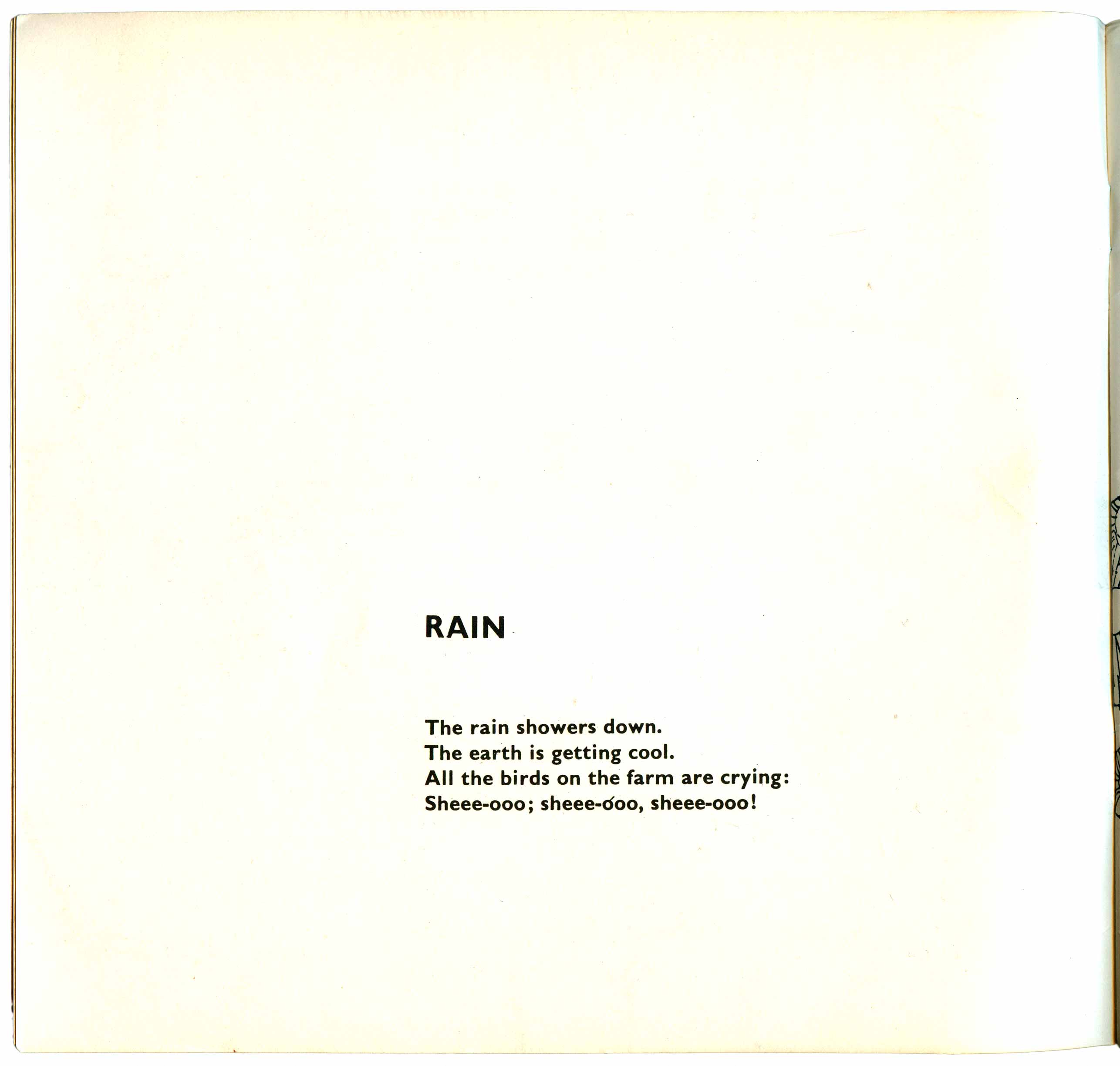
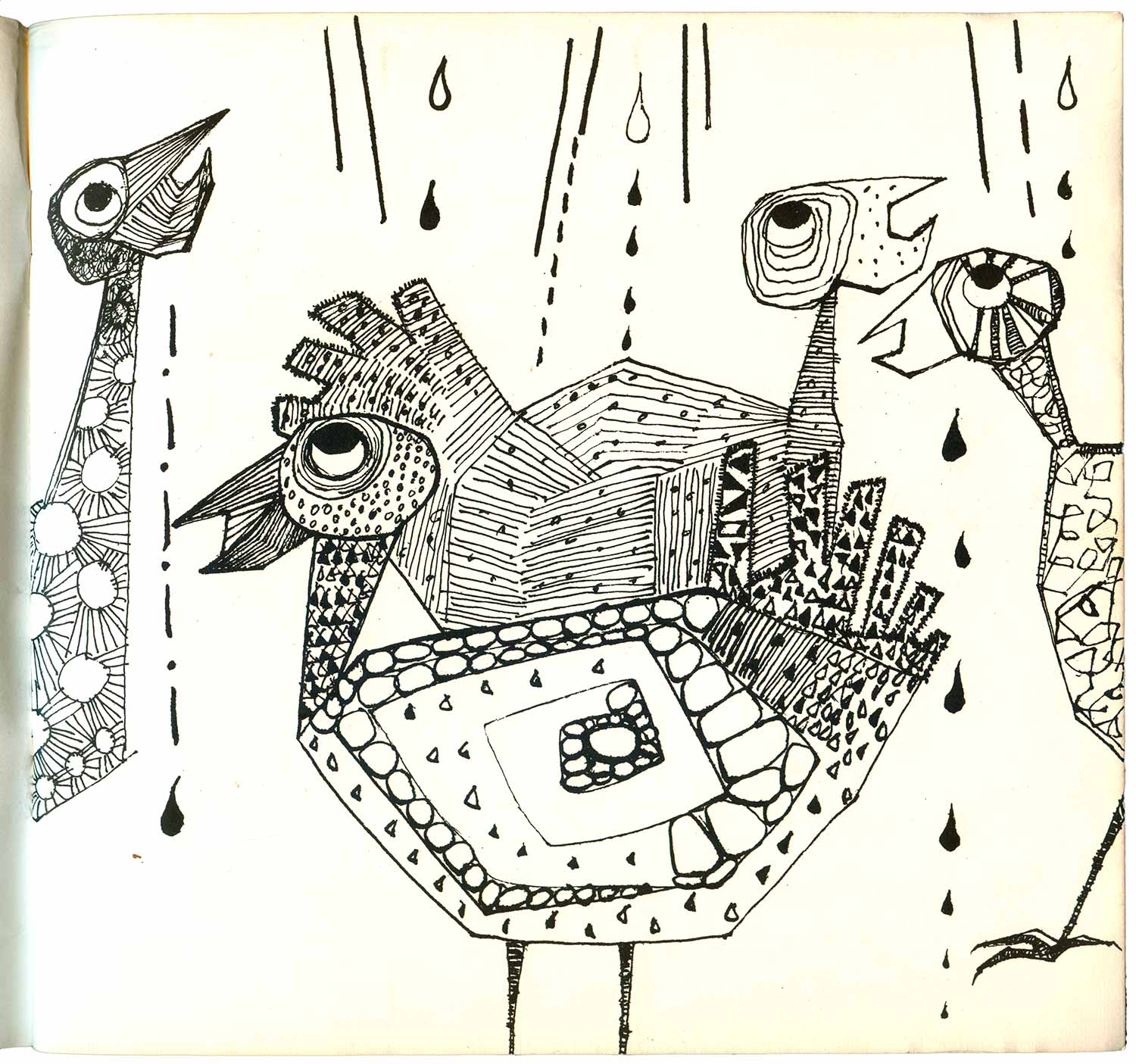
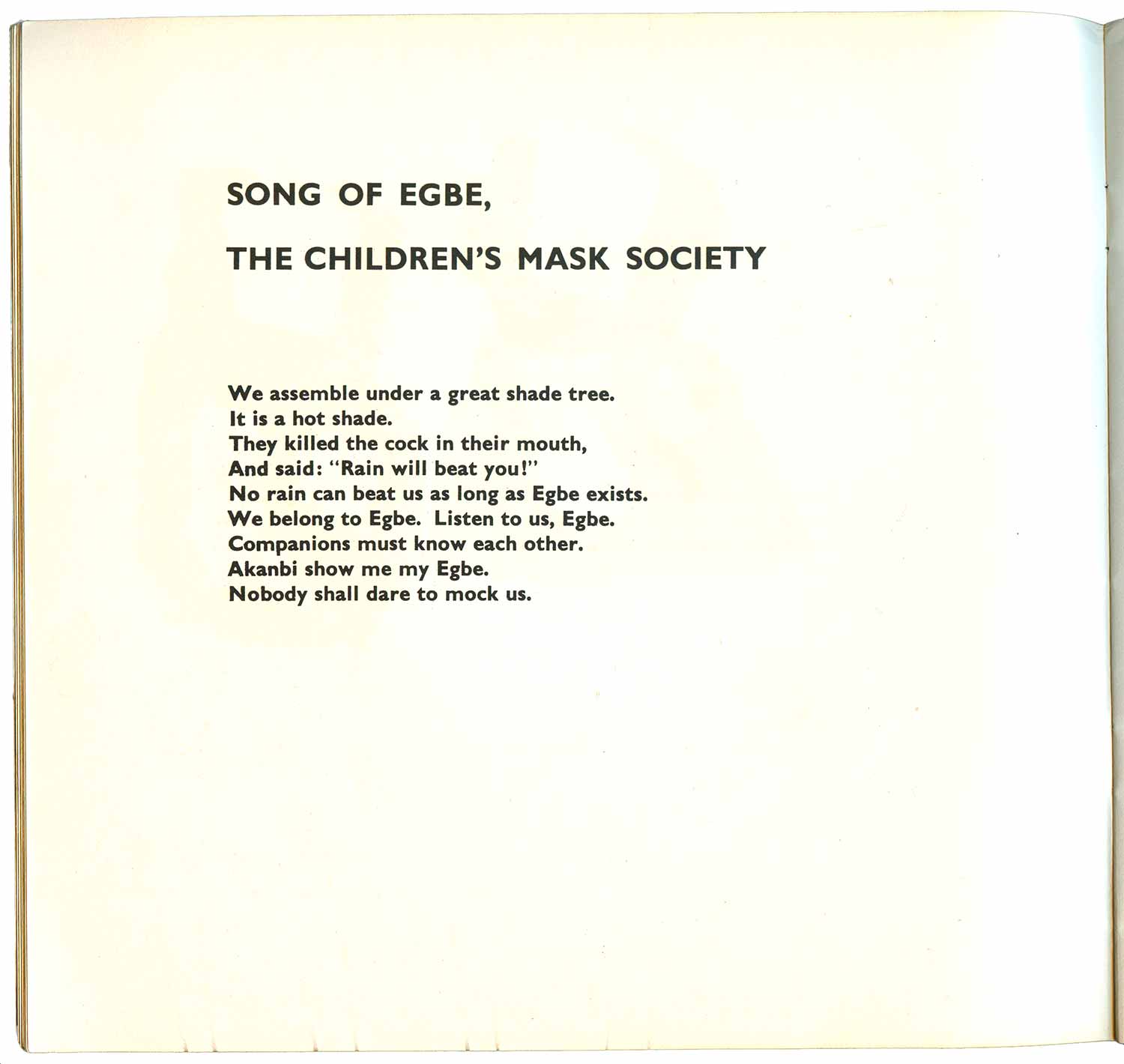
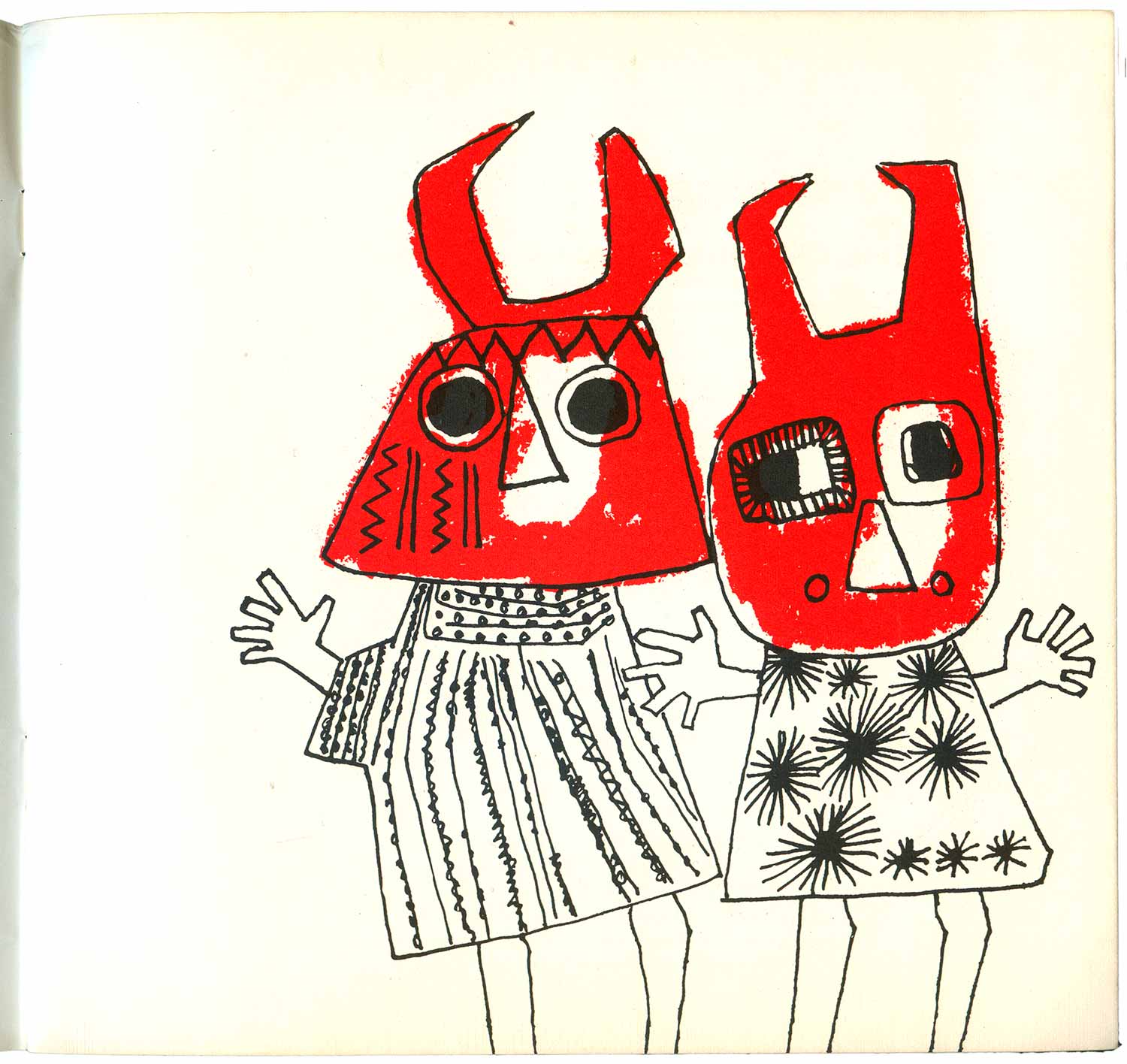
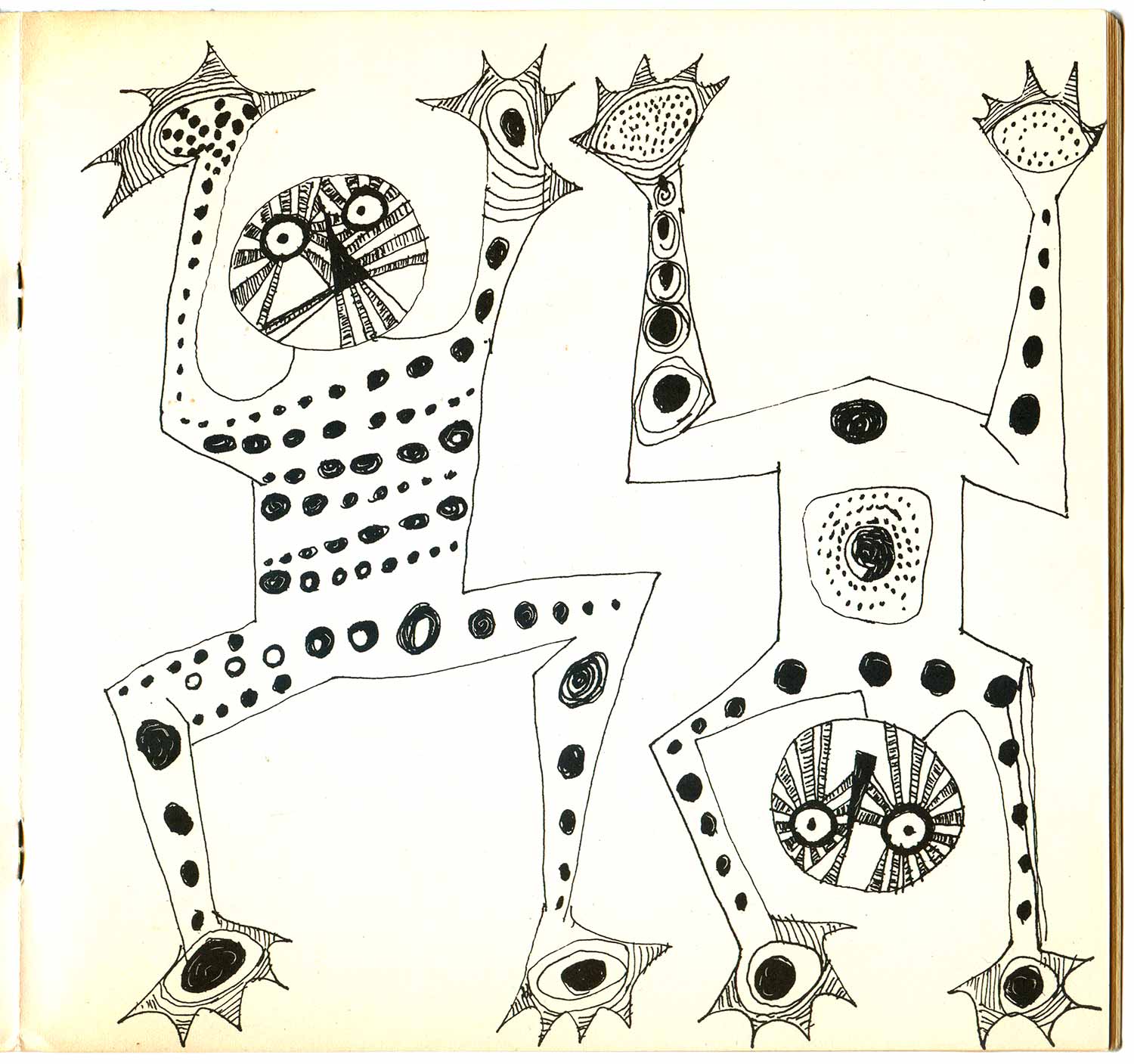
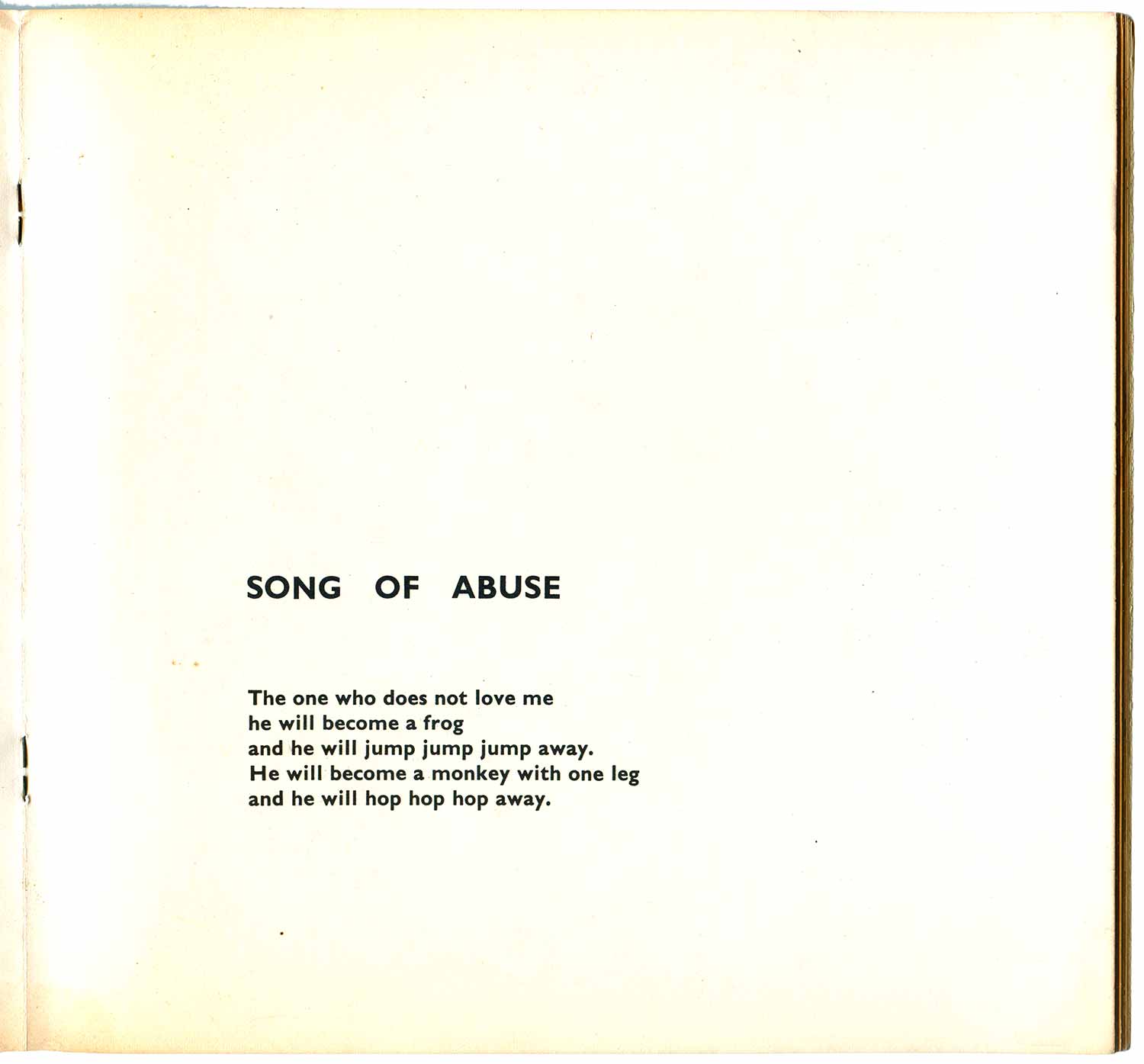
Below is by far my favorite cover I’ve seen on an Alex La Guma book. (Although he also had a couple great ones on the East German 7 Seas Books, you can see them here.) For those that don’t know, La Guma was a South African writer, a communist, a militant with the African National Congress, and ultimately a political exile in Cuba for almost twenty years. His novel In the Fog of the Seasons’ End intensely captures the paranoia of existing as a clandestine figure—both as a colored person living under apartheid in South Africa, but also an underground organizer for armed revolt against the system. A Walk in the Night was his first novel.
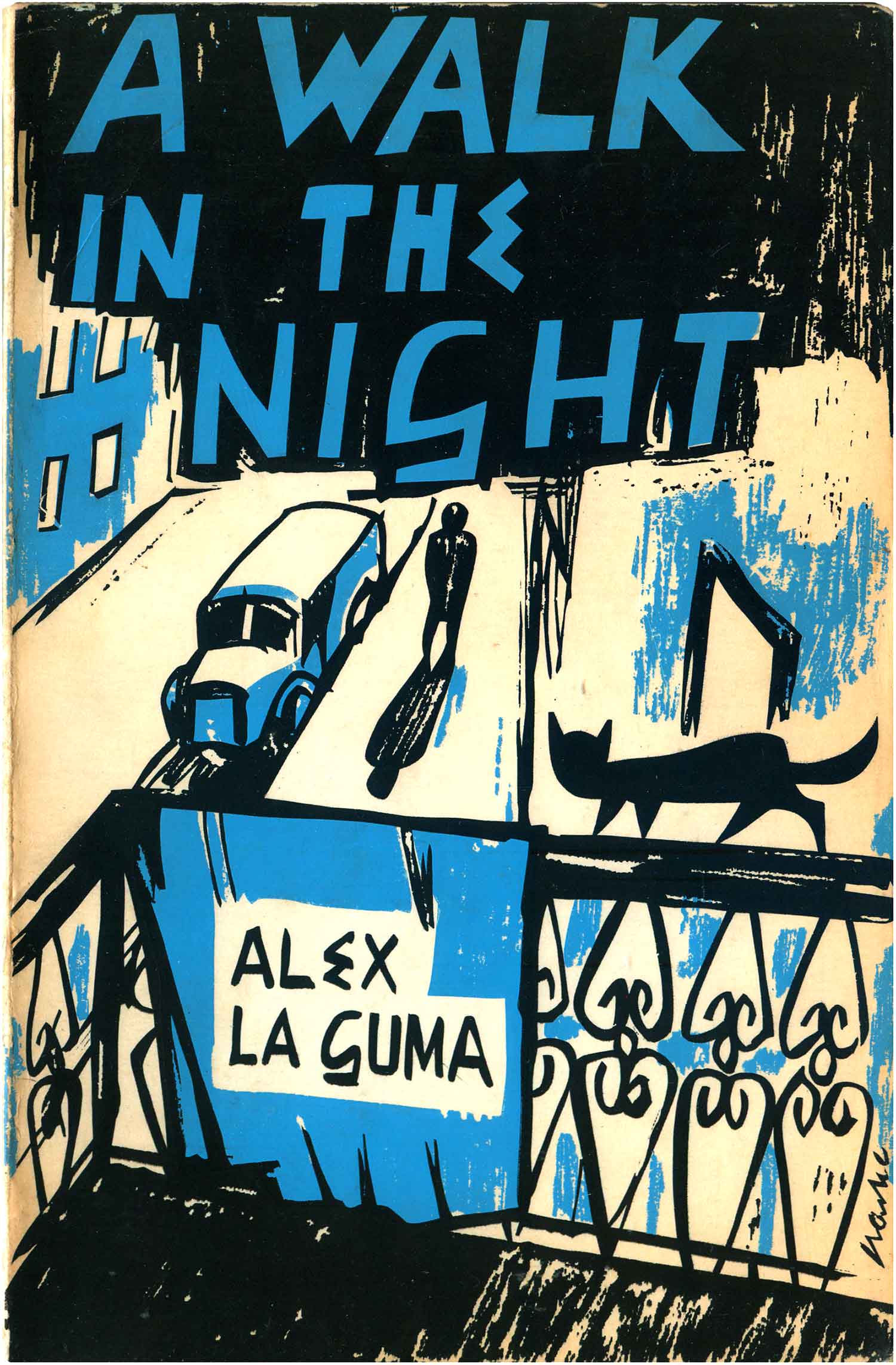
Jean-Joseph Rabearivelo’s 24 Poems is another project in translation. Rabearivelo was born at the turn of the 20th century in Madagascar, and is considered Africa’s first “modern” poet. Soon before his death, in his mid-30s, he began writing surrealist poetry. Although recognized on a certain level, he was also largely snubbed by literary elites in both France and Madagascar, and was only popularized just after his death by the emergent Négritude movement in the late 1930s.

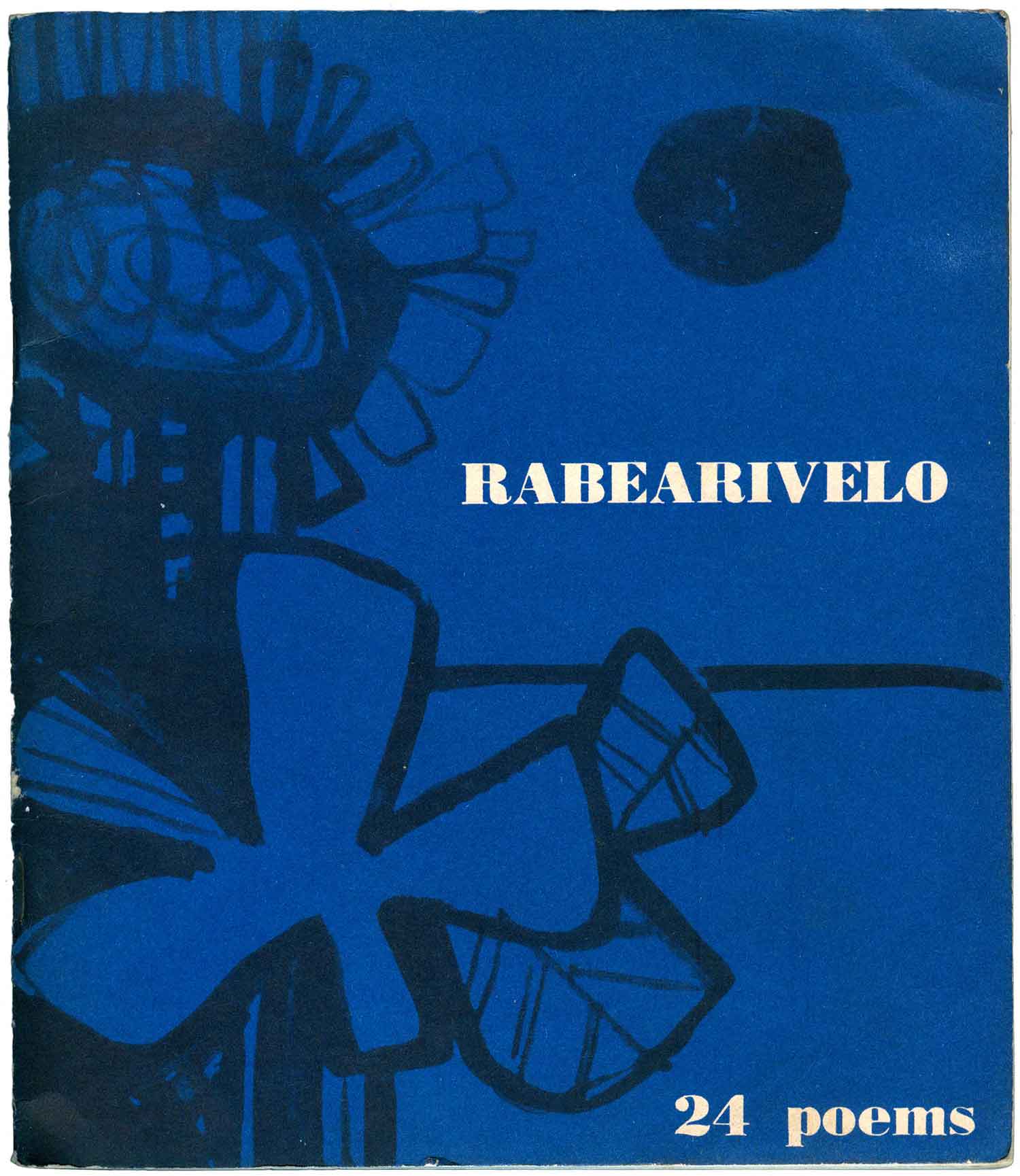
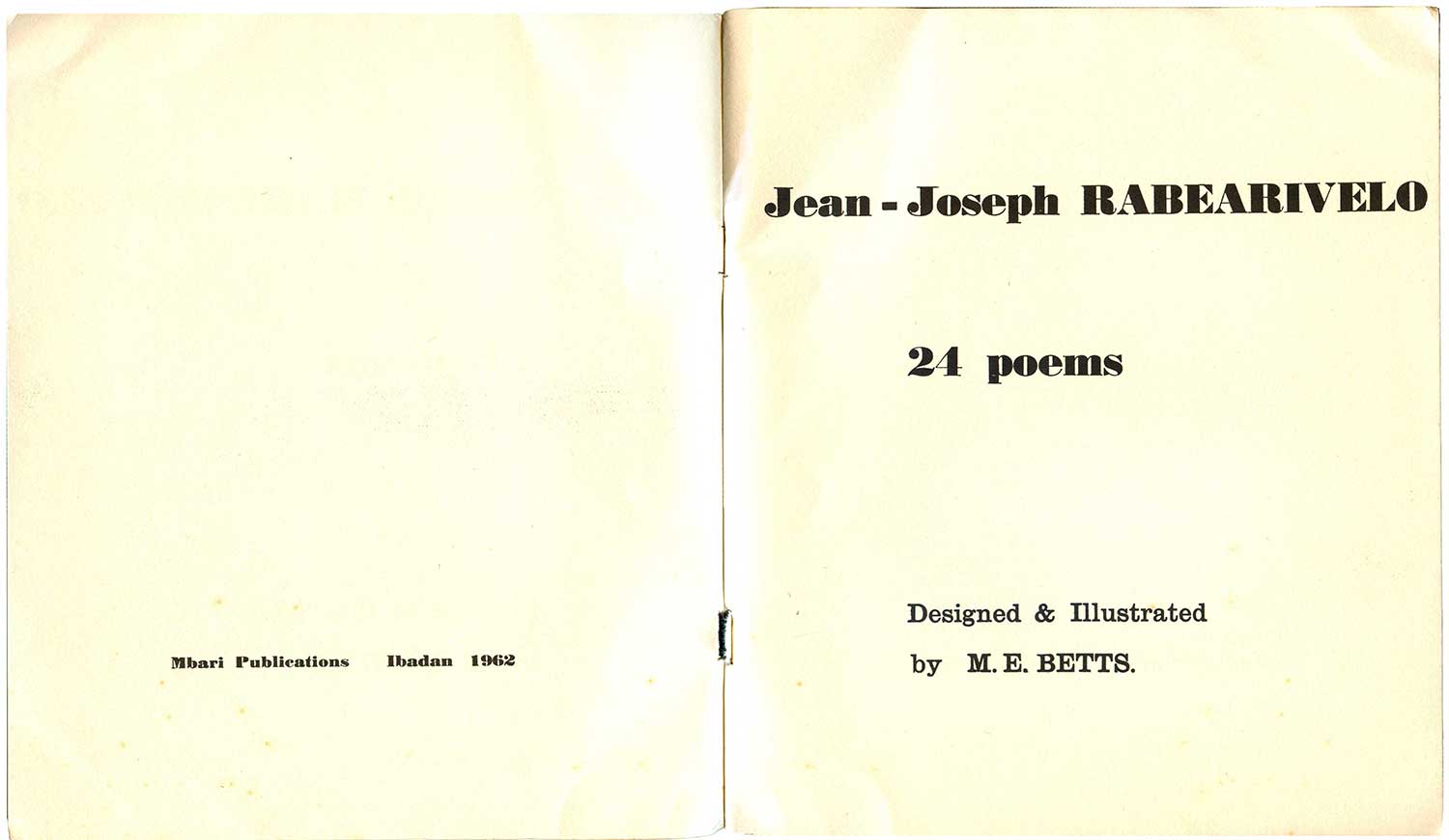
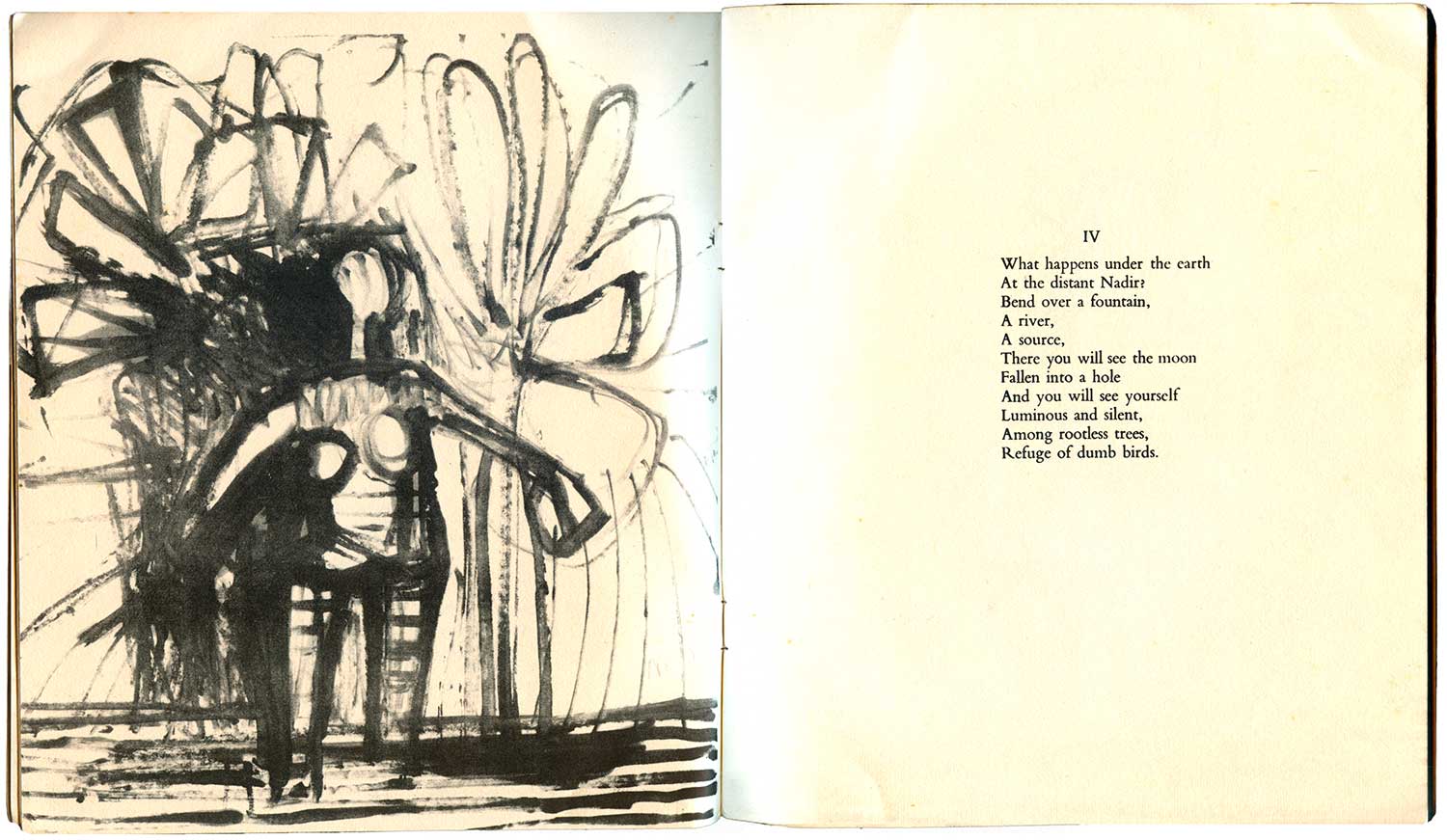
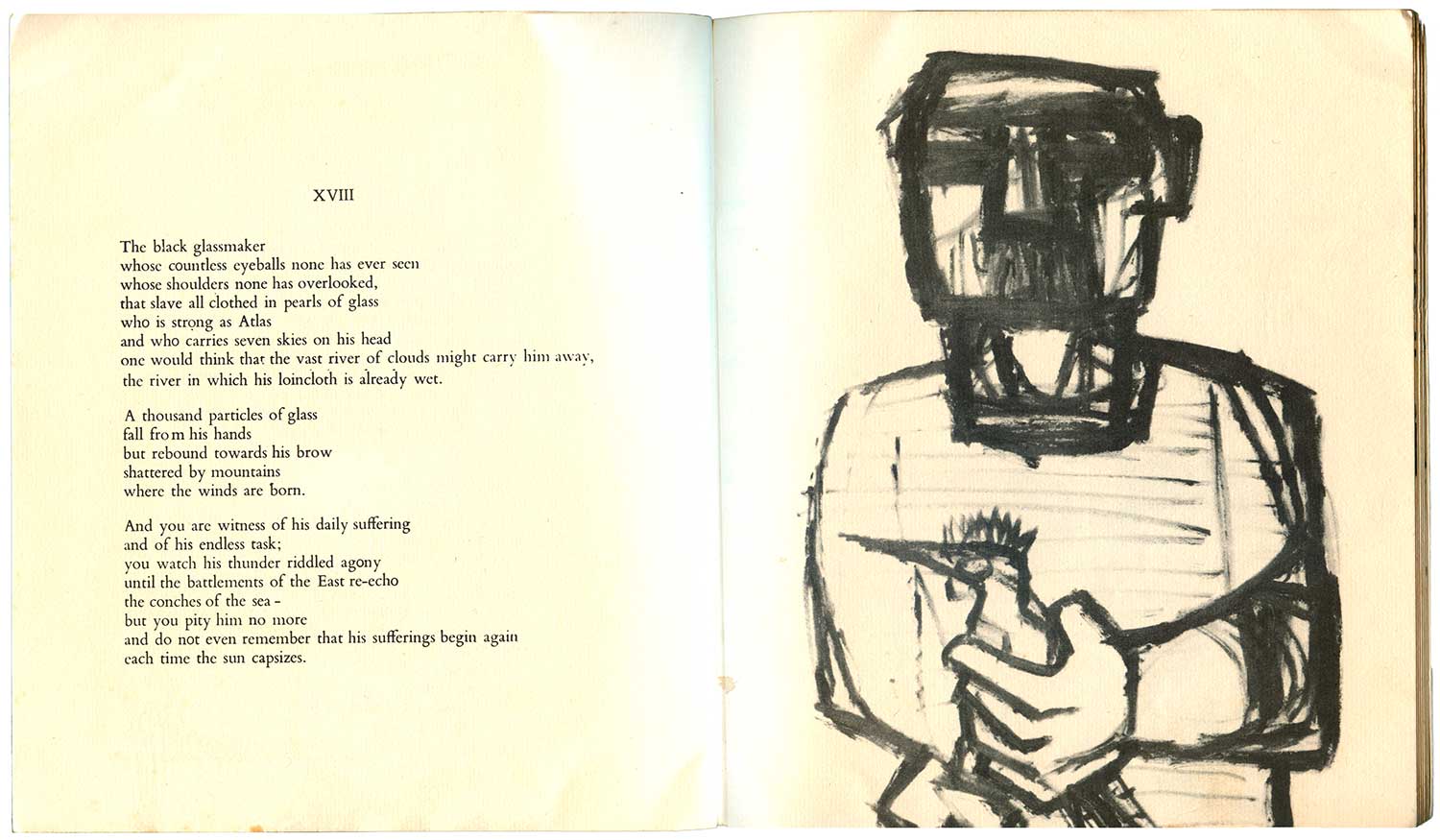
Mbari had quite a roster of heavy-weights, or soon-to-be heavy-weights in the African literary world. Sirens, Knuckles, Boots was the first published book of poetry by now-globally-renowned South African poet Dennis Brutus. Brutus, an activist as well as a poet, was “banned” by the South African government in the early 19560s, which basically meant that he was under house arrest and forbidden from publishing or public speaking. He fled to Mozambique, still under Portuguese colonial rule, and was returned by the Portuguese secret police to South Africa, where he was imprisoned on Robben Island for a year and a half, in the cell next to Nelson Mandela’s. This book came out while he was in prison. Brutus was also awarded the Poetry Prize by the Mbari Club for being a black poet of distinction, and in an interesting twist, he refused the prize, rejecting its racial exclusivity. This speaks volumes to the complexity and diversity of racial politics on a continent with myriad historical relationships to colonialism. While being Black in Nigeria was a central element of independence, the specifics of struggle in South Africa demanded a strong non-racialist politics.
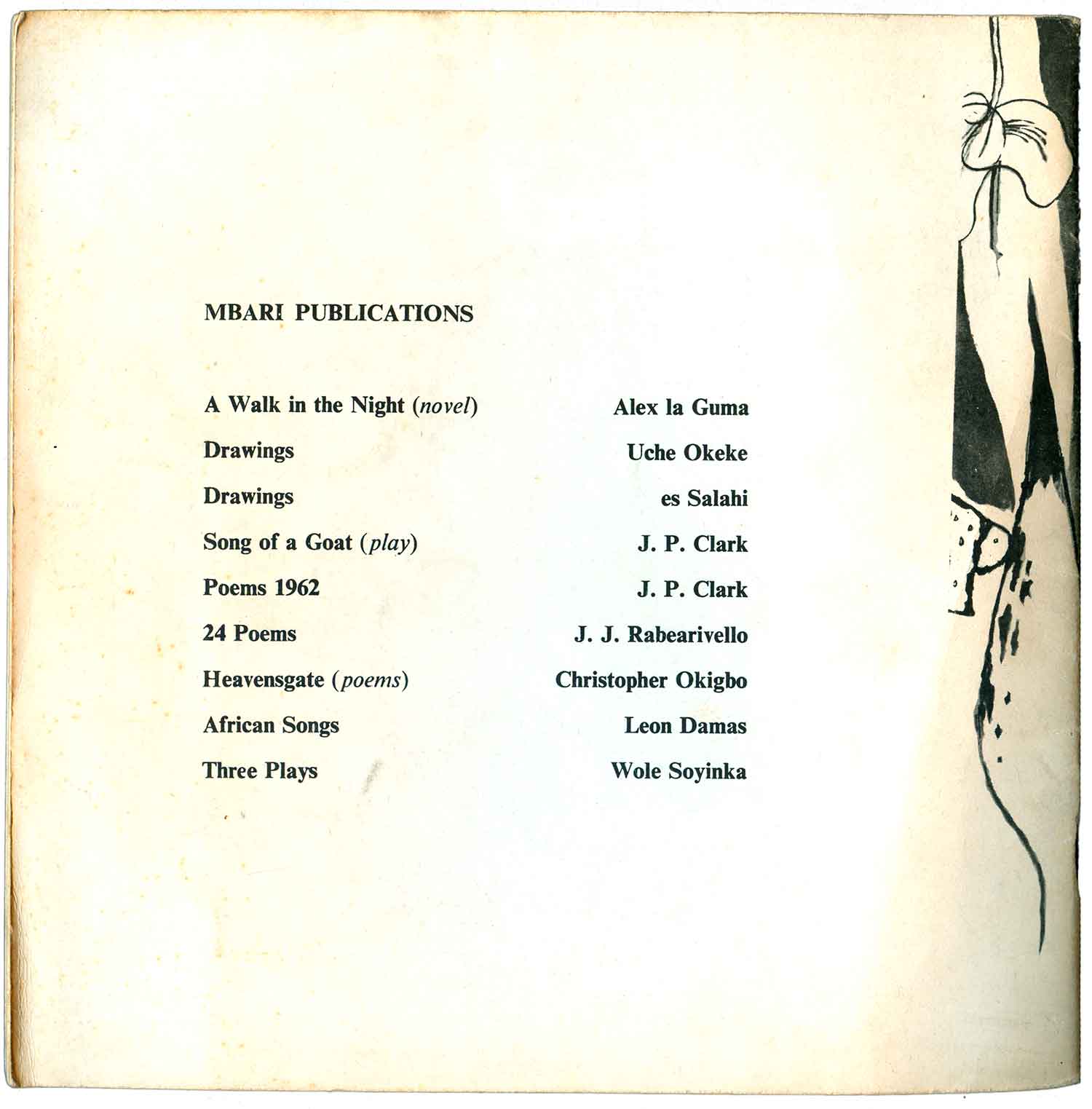
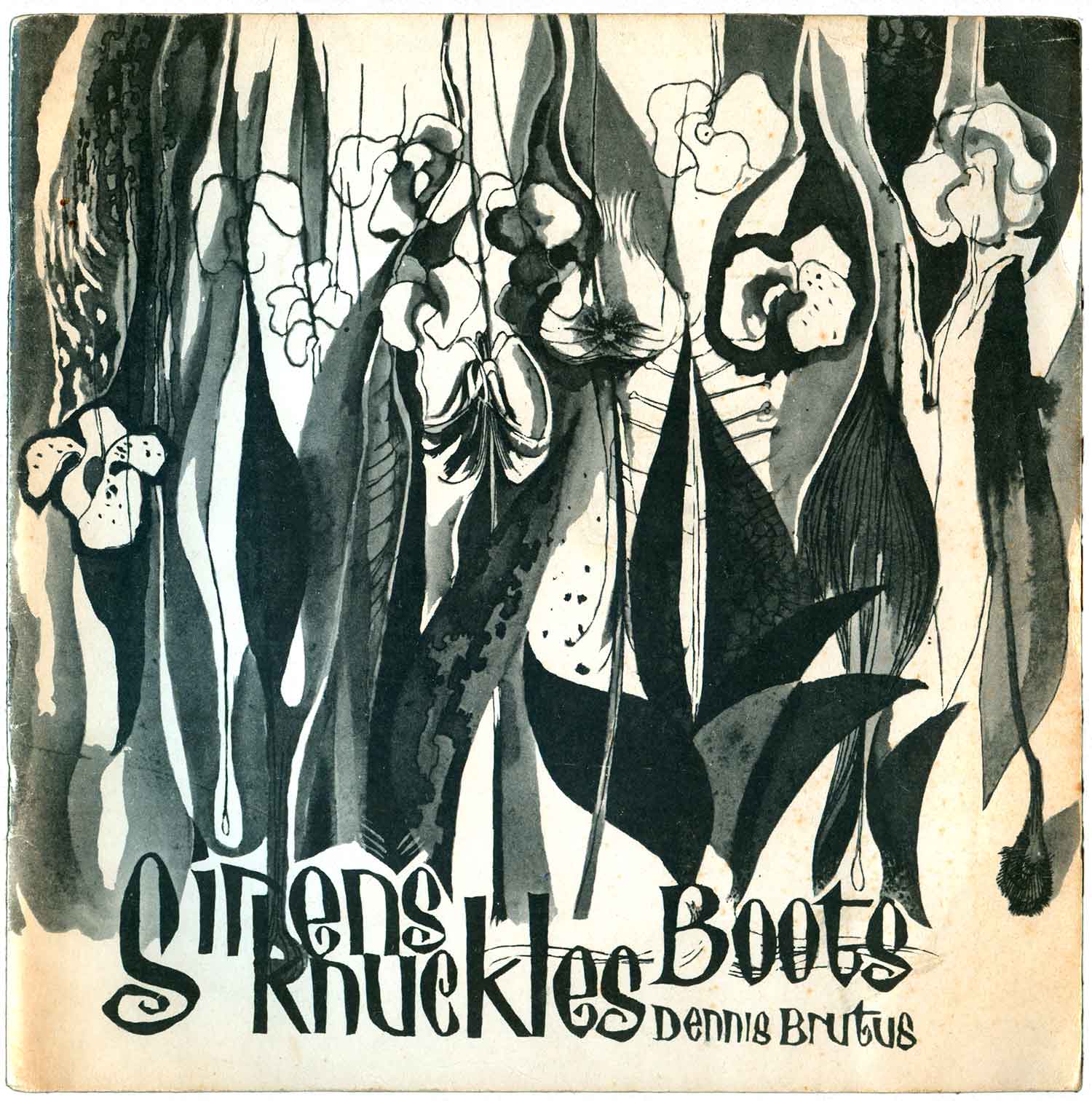
Sirens, Knuckles, Boots is also the first book designed by Denis Williams for Mbari. Williams style is impressive, with rich illustrations, and beautiful calligraphic title pages, in this case printed in two colors. Williams was a Guyanese author and painter who taught art in Nigeria from the late ’50s until the outbreak of the Biafran War. His presence designing here is another articulation of the Mbari Club’s specific brand of diaspora-inclusive Pan Africanism. (As a side note, Williams book Other Leopards was published in the original Hienemann Caribbean Writers Series—which was in turn modeled of off the African Writers Series.)
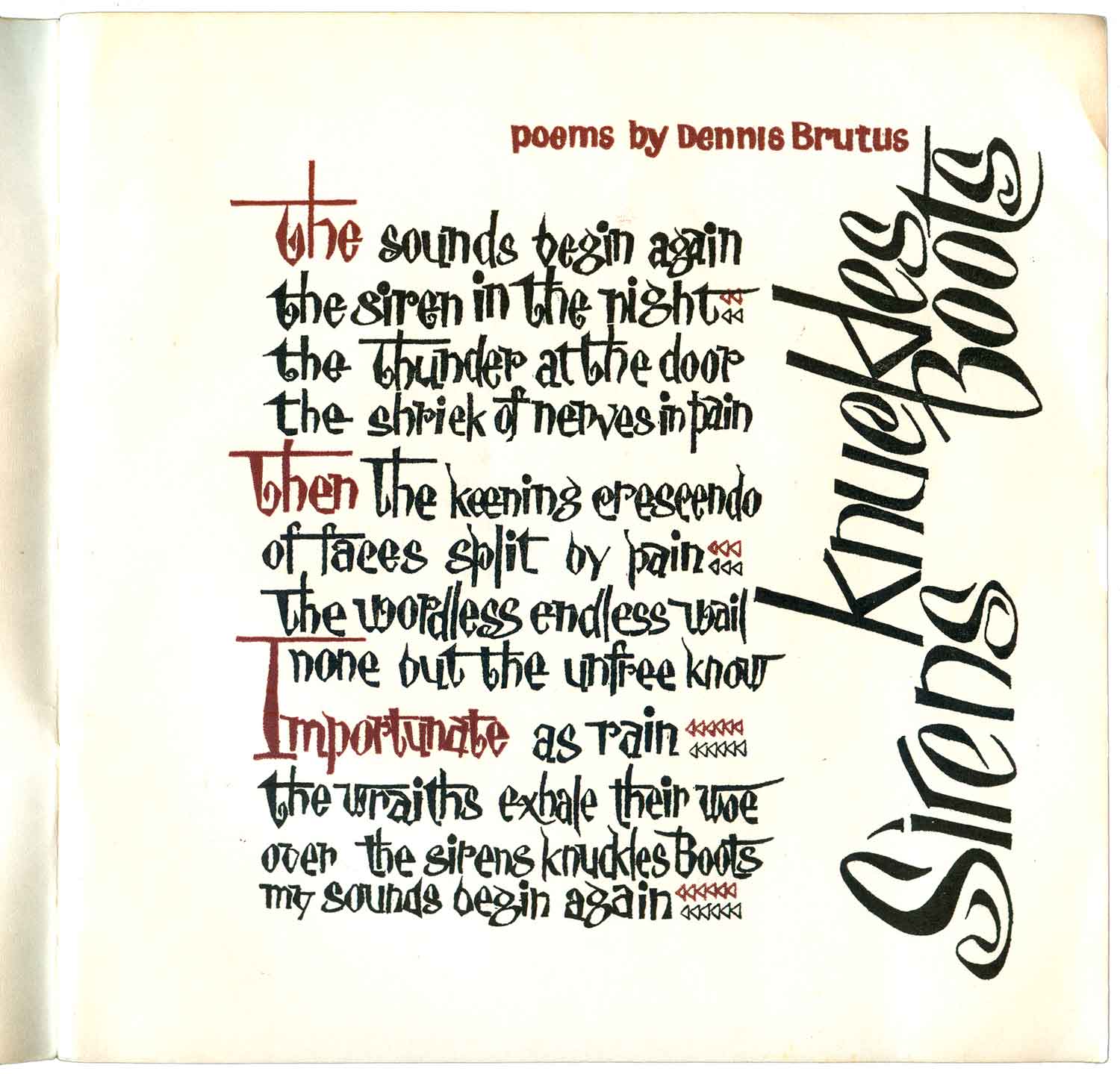

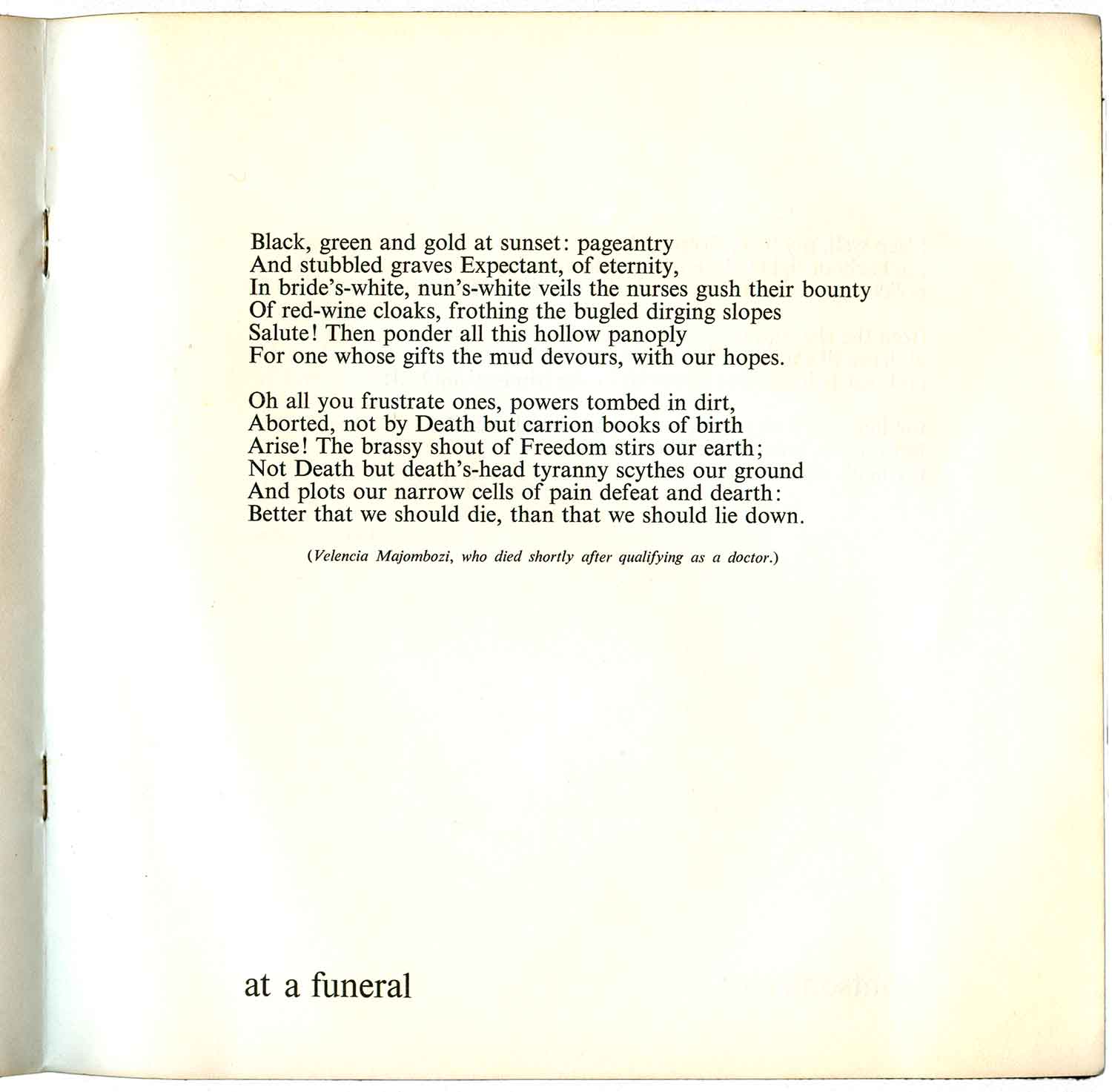

Wole Soyinka’s Three Plays is another book deliciously designed by Denis Williams. The squarish format, a signature of Williams, is not used to maximize usable space, but instead to give immense amount of breathing room for the eyes.
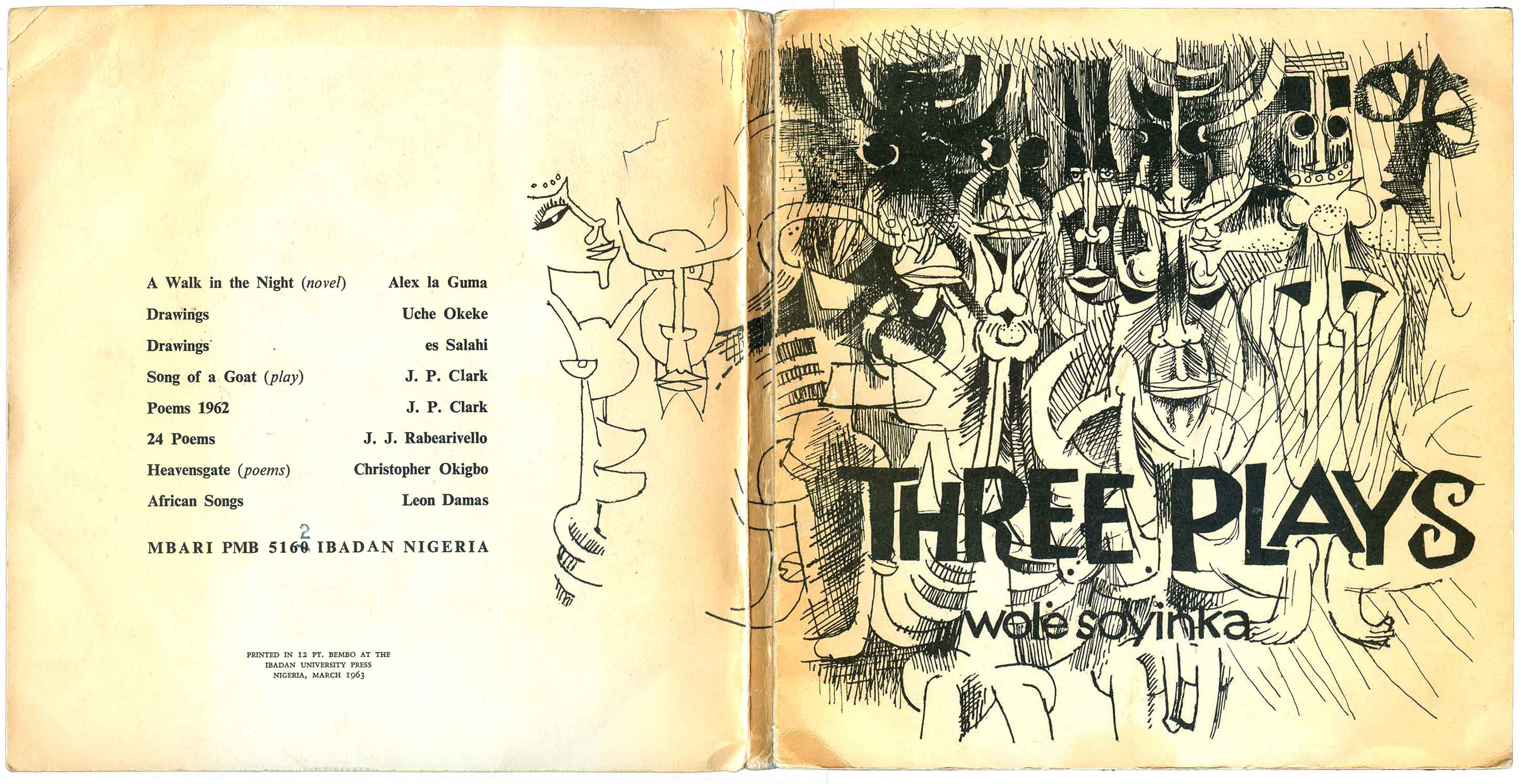

Ulli Beier’s art study, Yemi Bisiri: a Yuruba Brass Caster, is unique in the Mbari ouvre. While the focus on African art is not new, here there is a lot of background information, with an express attempt to explain the complexities and social nuances of Yoruba brass casting to a completely outside audience. Although he did such an amazing amount of work supporting and facilitating African culture, Beier is ultimately an anthropologist, and the writing in this book feels in some ways more about Africa than of it.
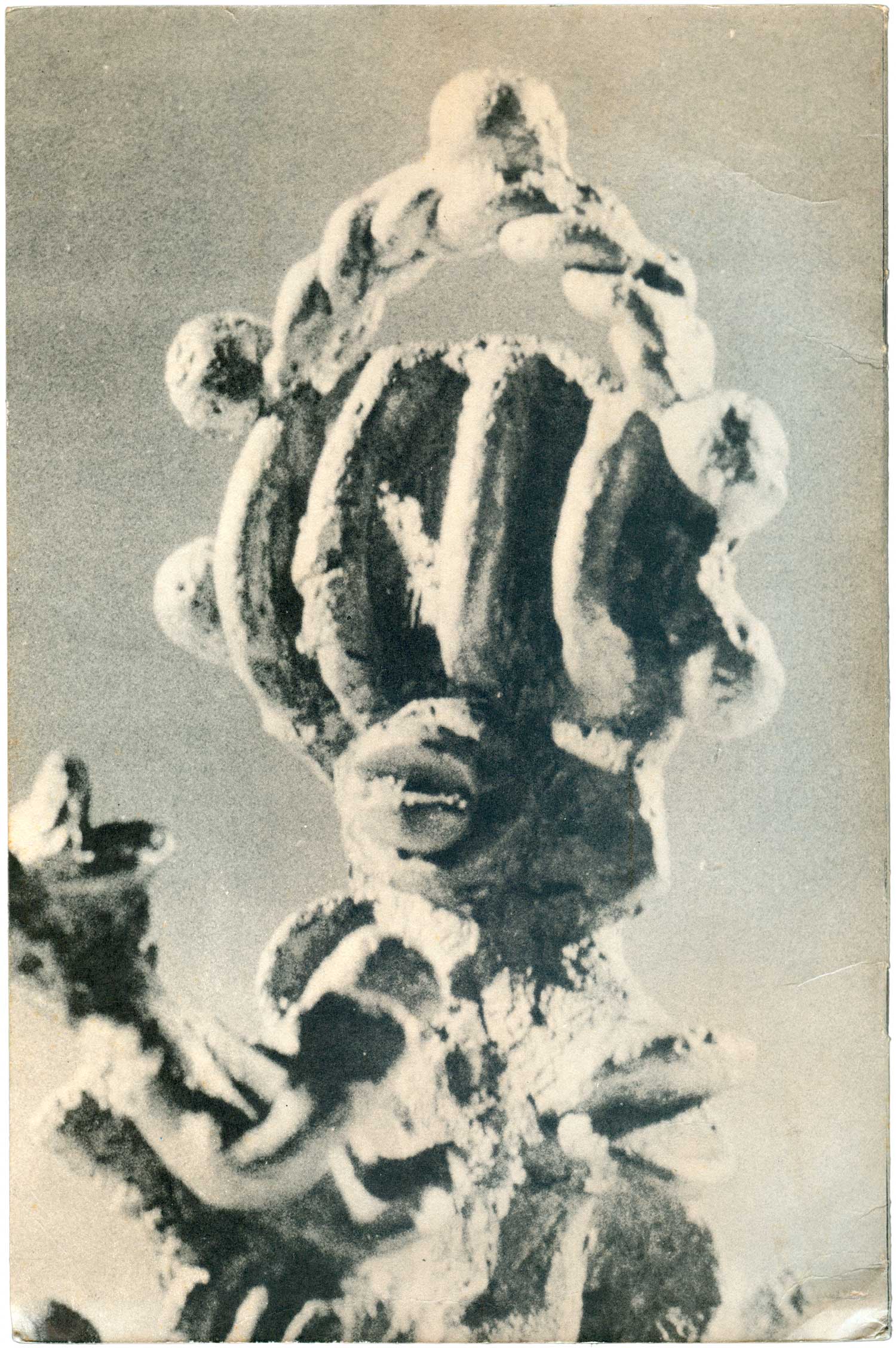

The reproductions of photographs of Bisiri’s sculptures are somewhat beyond the technological capacities of the press, so a bit crude, but that adds a surreal element to the entire publication.

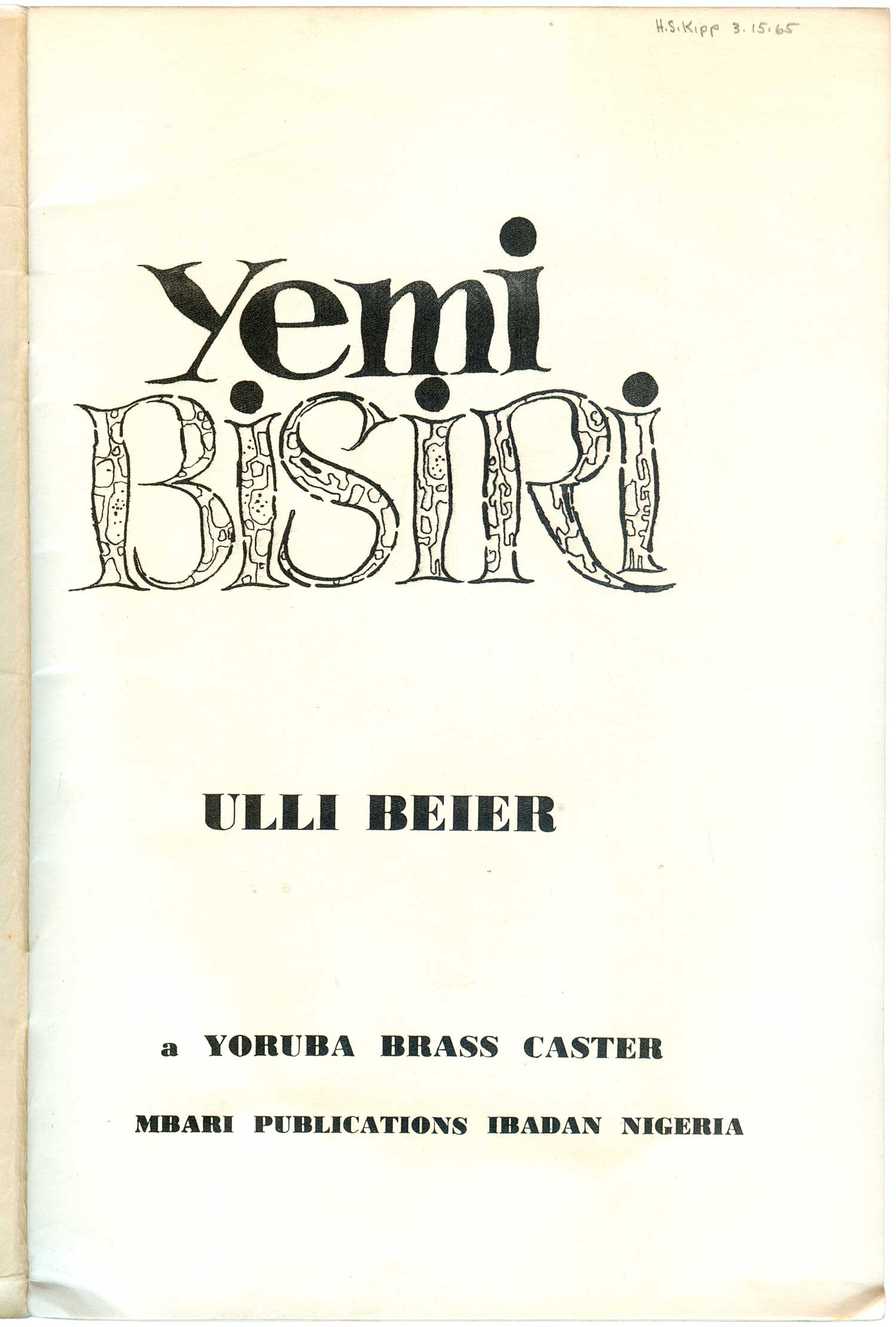

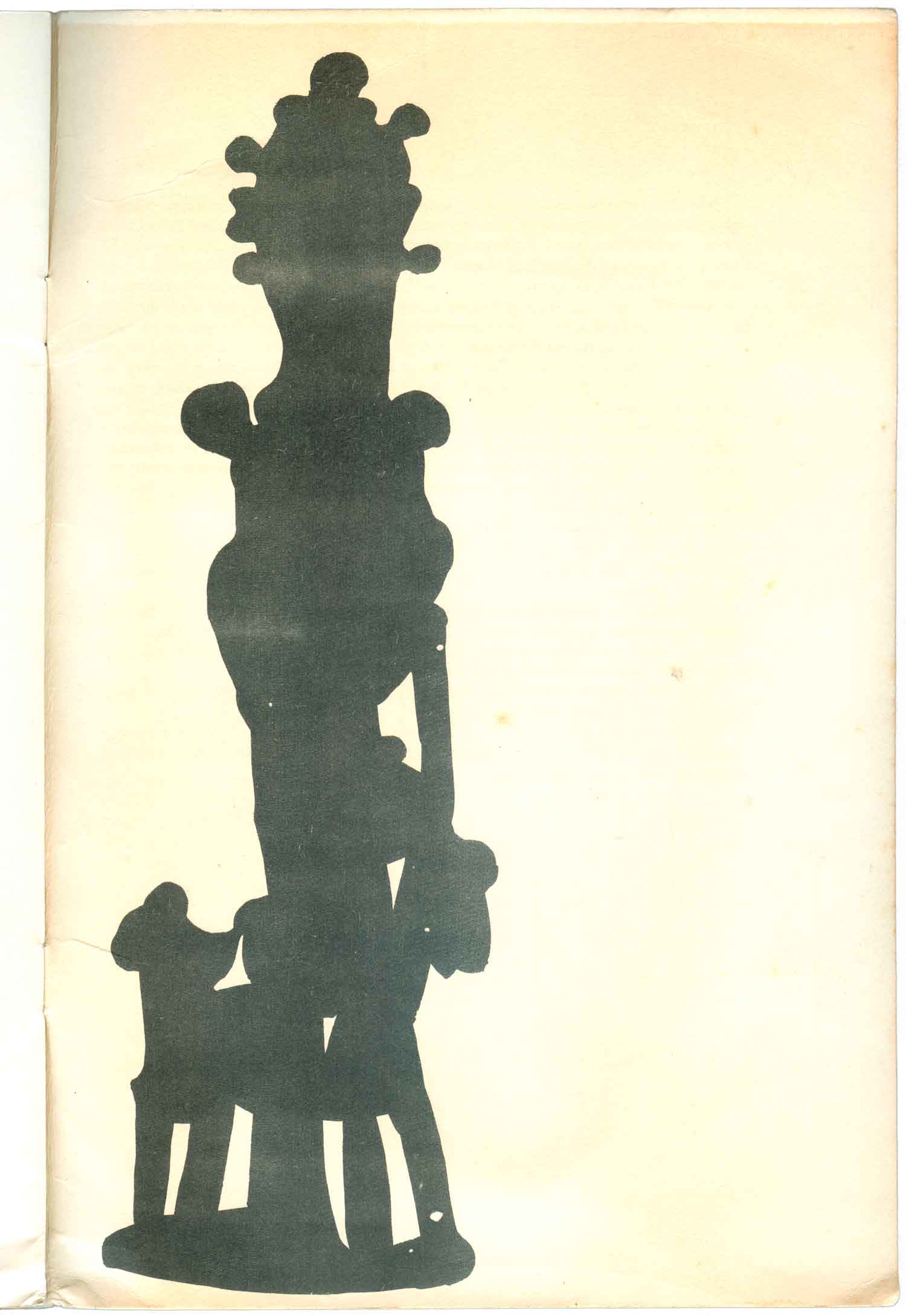
Felix Tchikaya U’Tamsi’s Brush Fire is the third (and ultimately final) collection of poetry Mbari published in translation from the French. U’Tamasi was born in French Equatorial Africa, now known as Congo. In addition to being a poet, he worked as a journalist and was loosely connected to Patrice Lumumba.
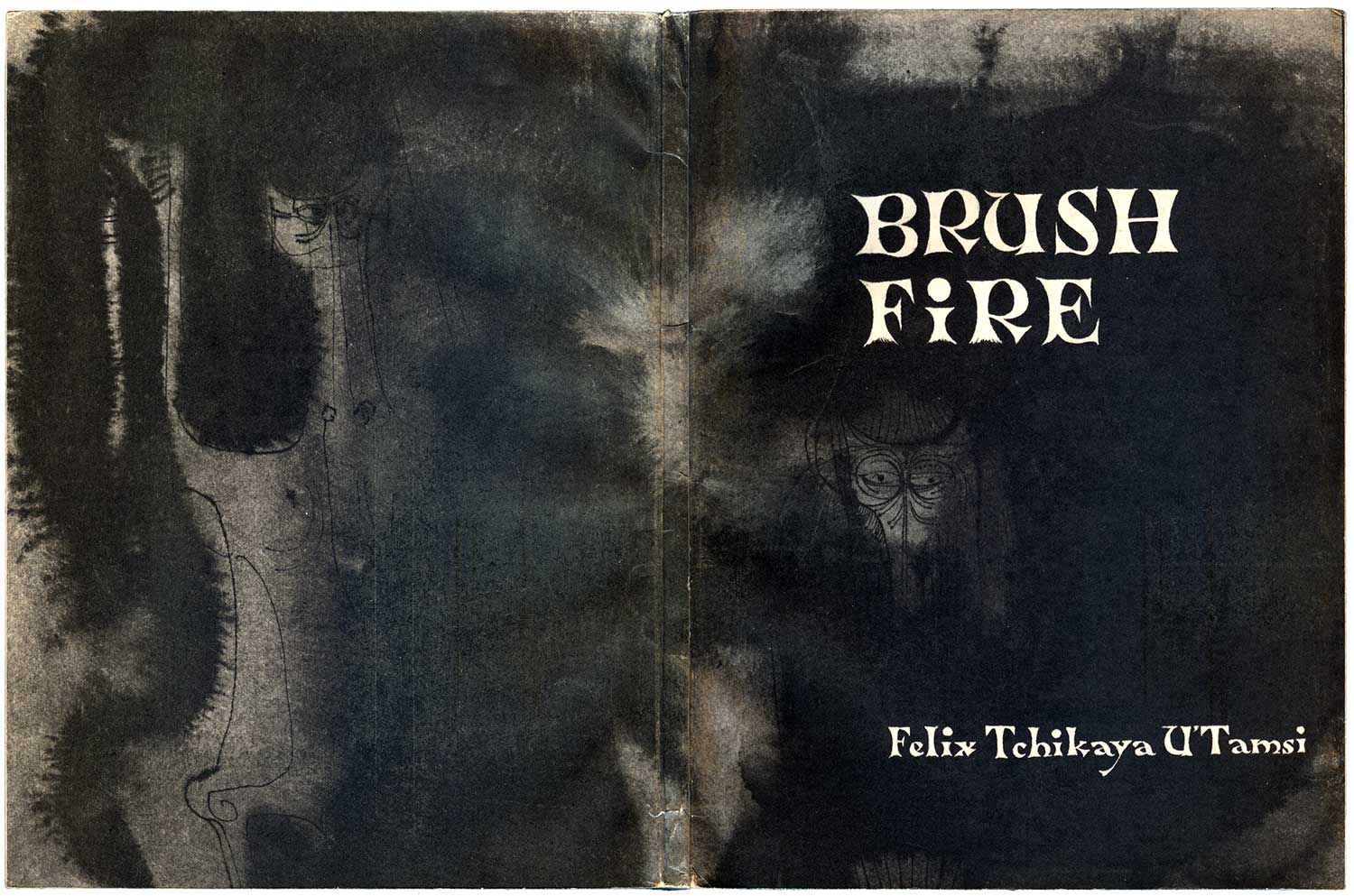
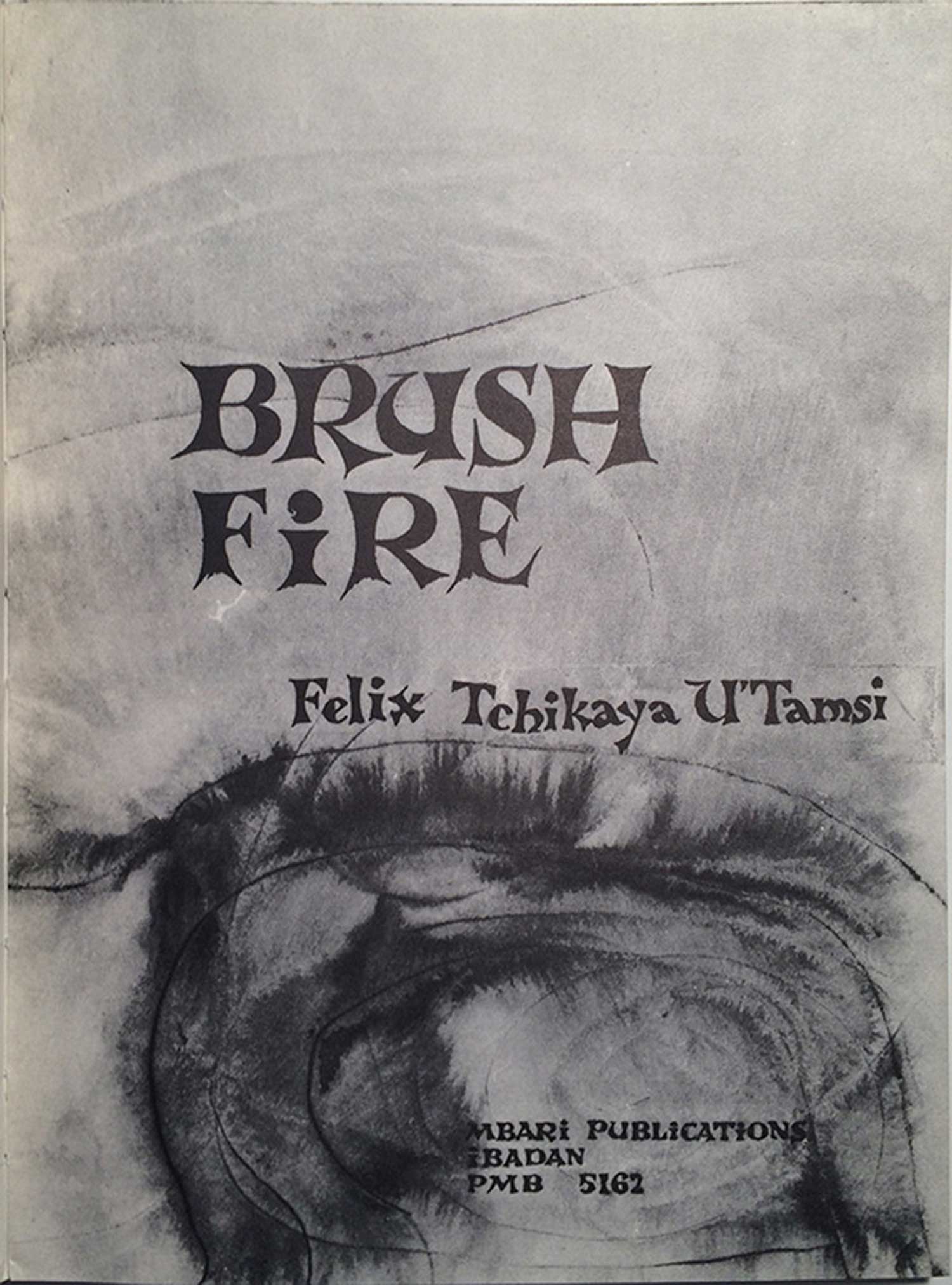
The illustrator and designer of the book isn’t attributed, but I haven’t found any evidence that U’Tamasi also worked as an artist, so I’m unsure who did the artwork here.
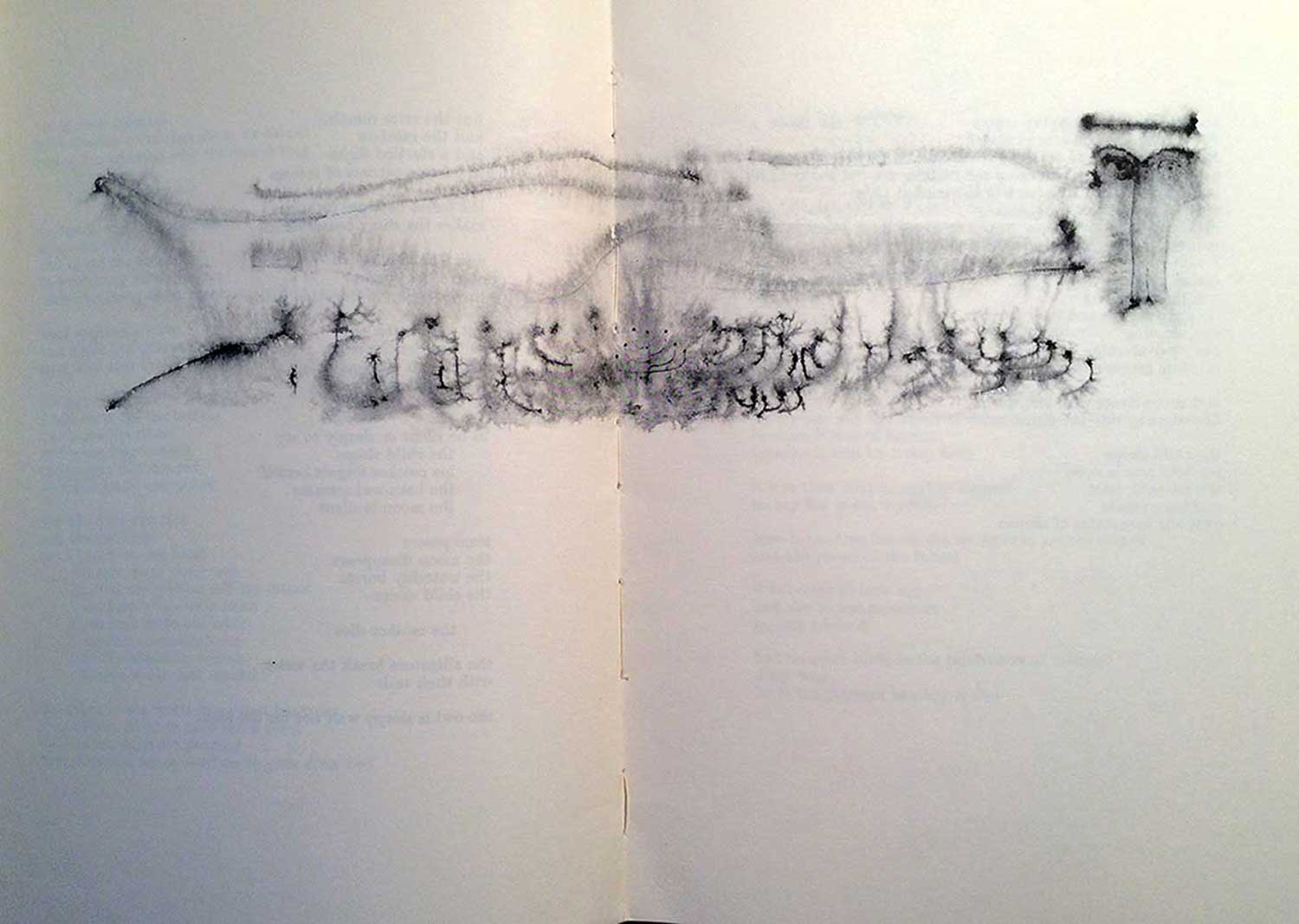
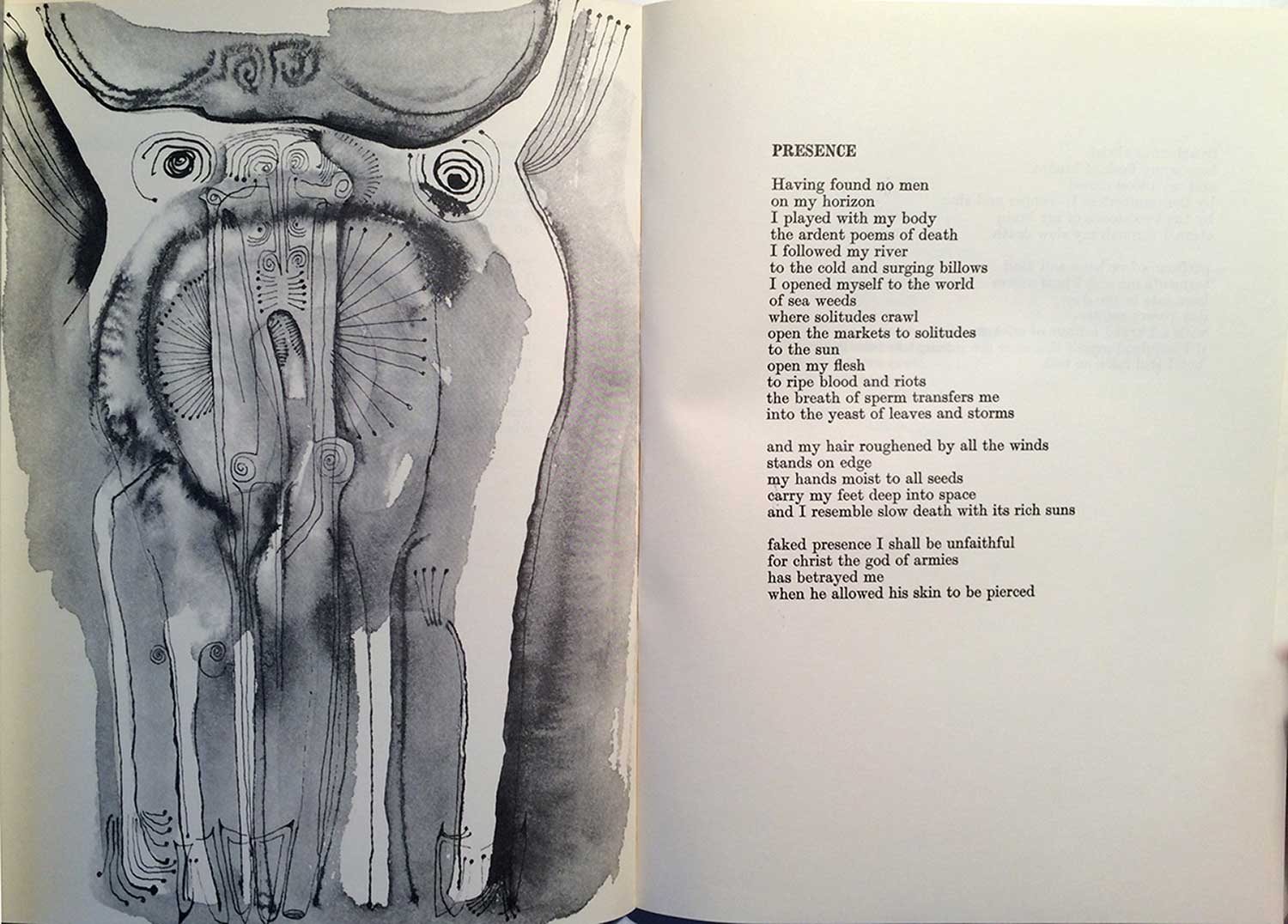
Limits is Christopher Okigbo’s second book of poetry published by Mbari (I haven’t been able to find his first, Heavensgate). Okigbo was an important Nigerian poet and central figure in the Mbari Club. He was unique in that he rejected many of the precepts of the broader Black Orpheus and Mbari project, including the belief that black people in the diaspora necessarily share a commonalities with black Africans and the support for Francaphone literature rooted in the Négritude tradition. Okigbo was killed in 1967 while fighting in the Biafran War. Limits is another title designed by Denis Williams, and his impressive calligraphic style is front and center on both the cover and title page.
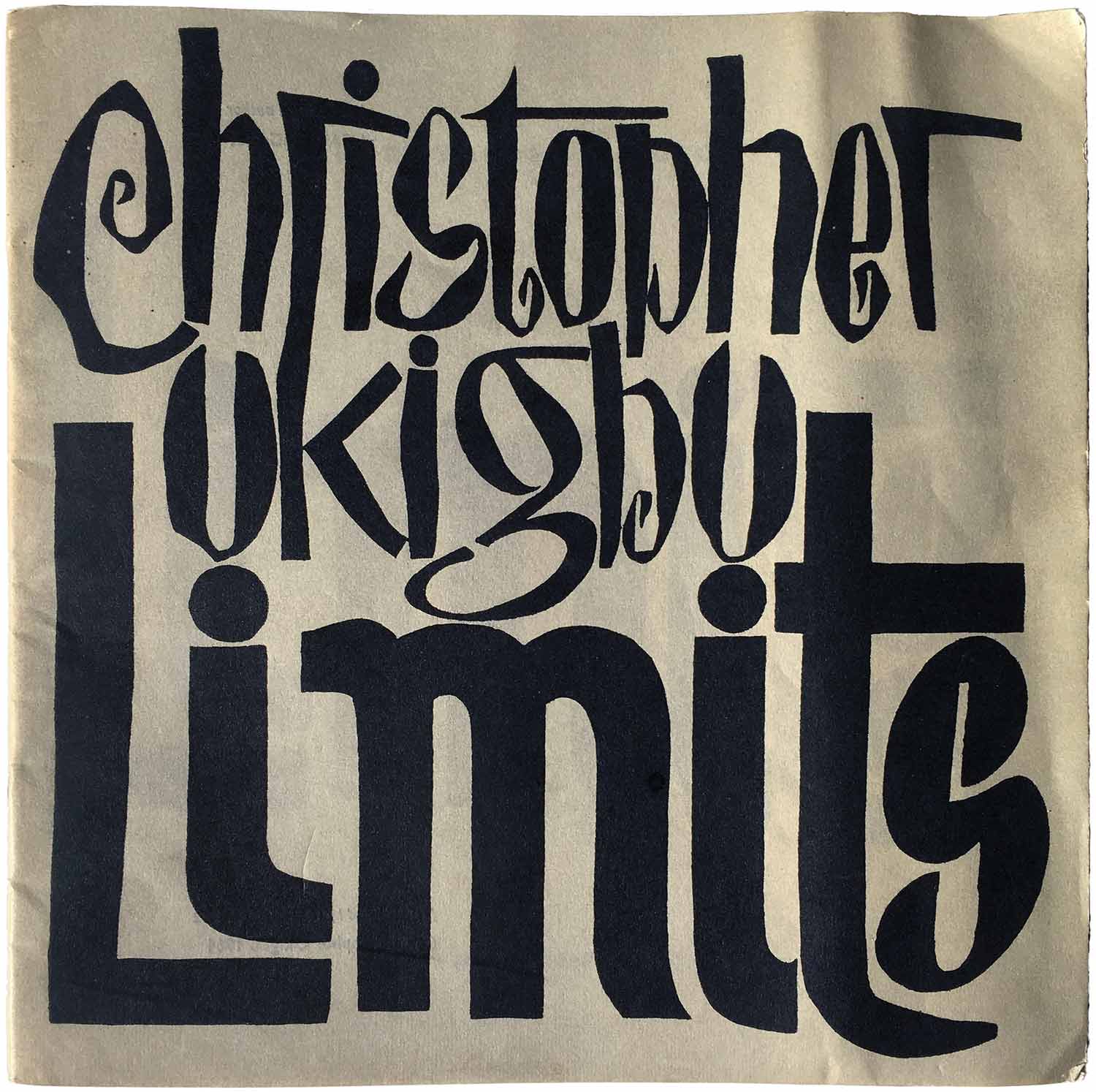
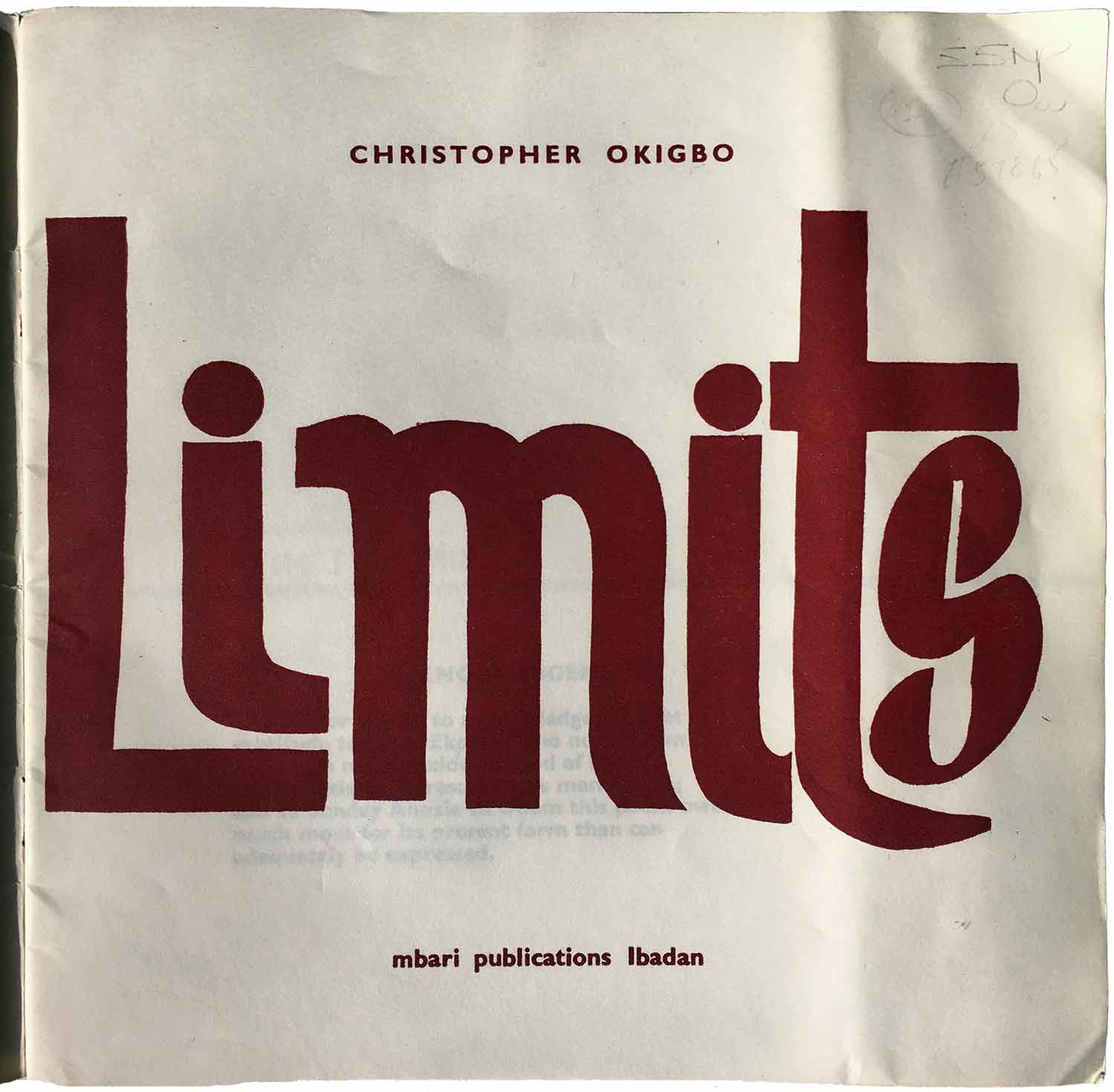
The final three books are all poetry, and smaller—more like chapbooks. Although more modest—each is nicely produced, with the Williams and Peters books each featuring wrap-around cover art and rich, black end papers. While Okogbule is Nigerian, Williams was from Ghana, and Peters was Gambian.
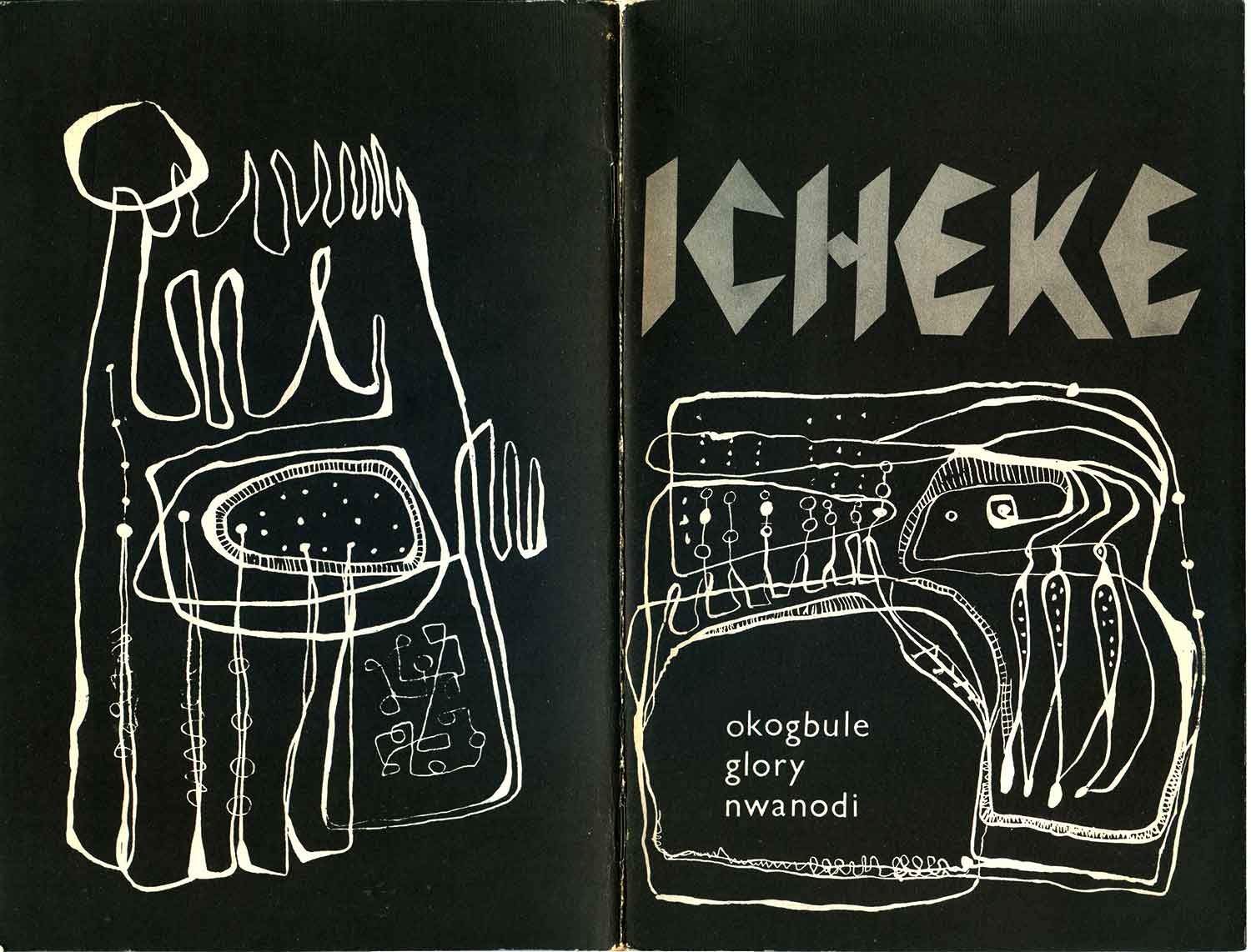
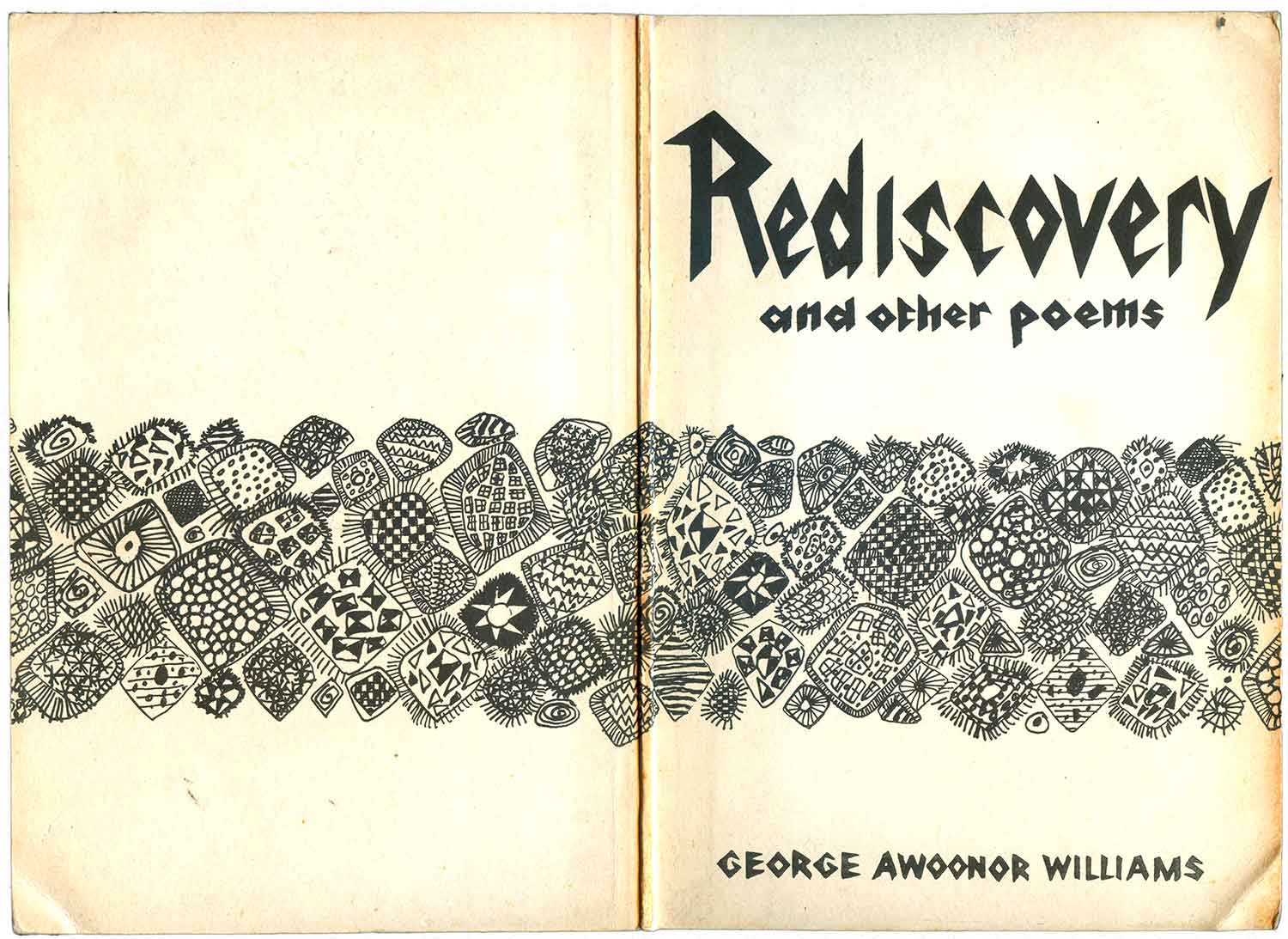
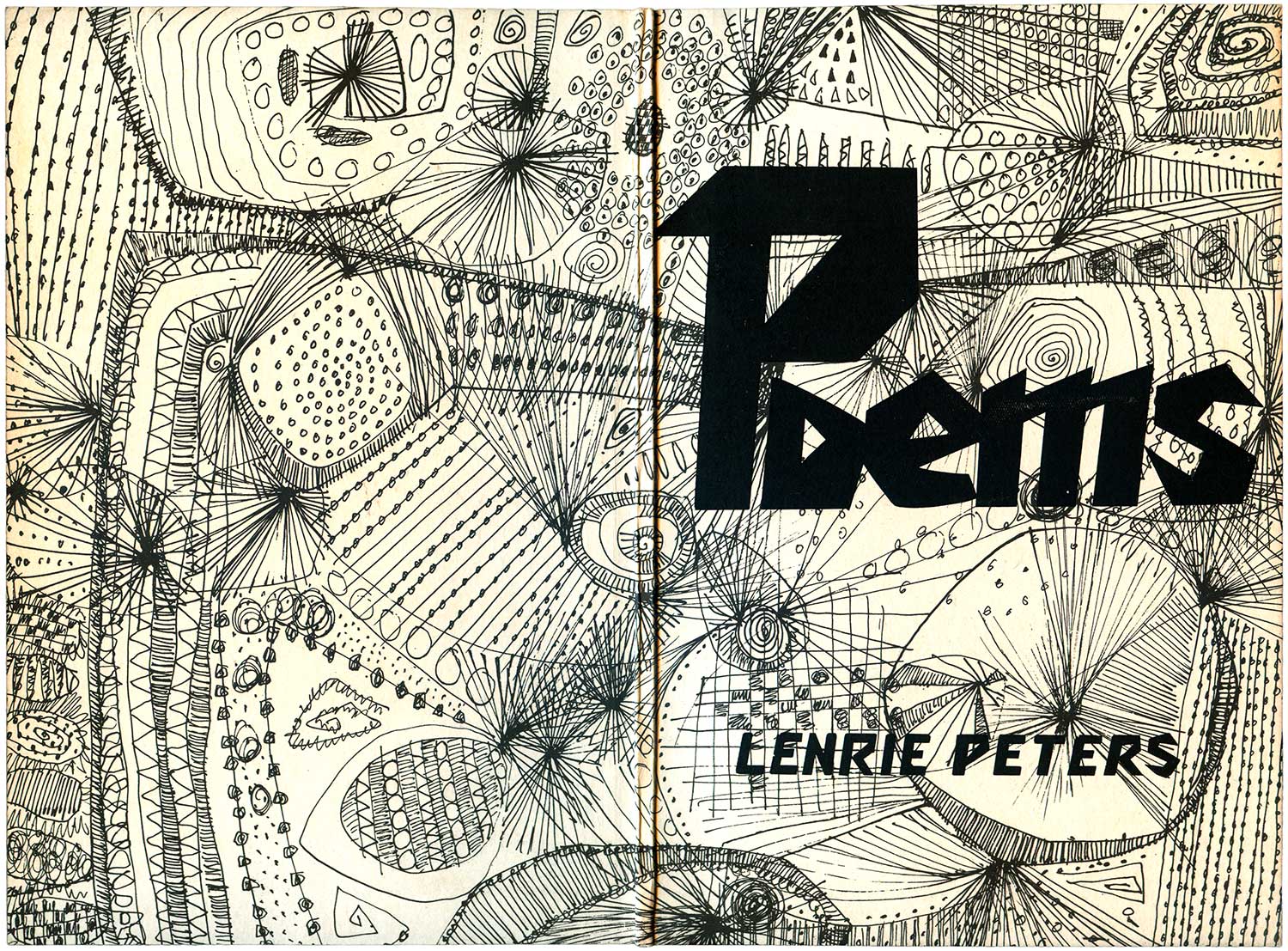
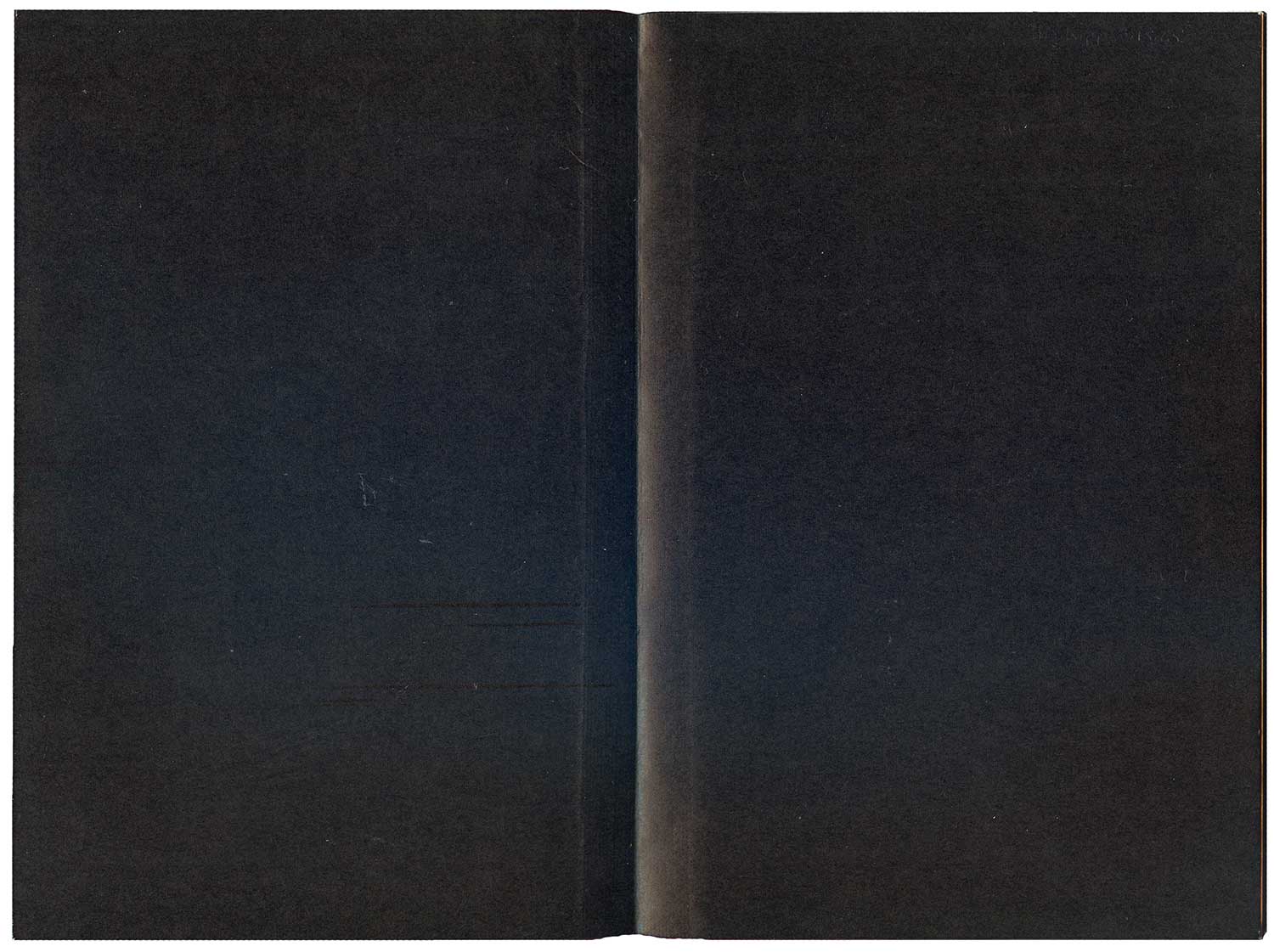
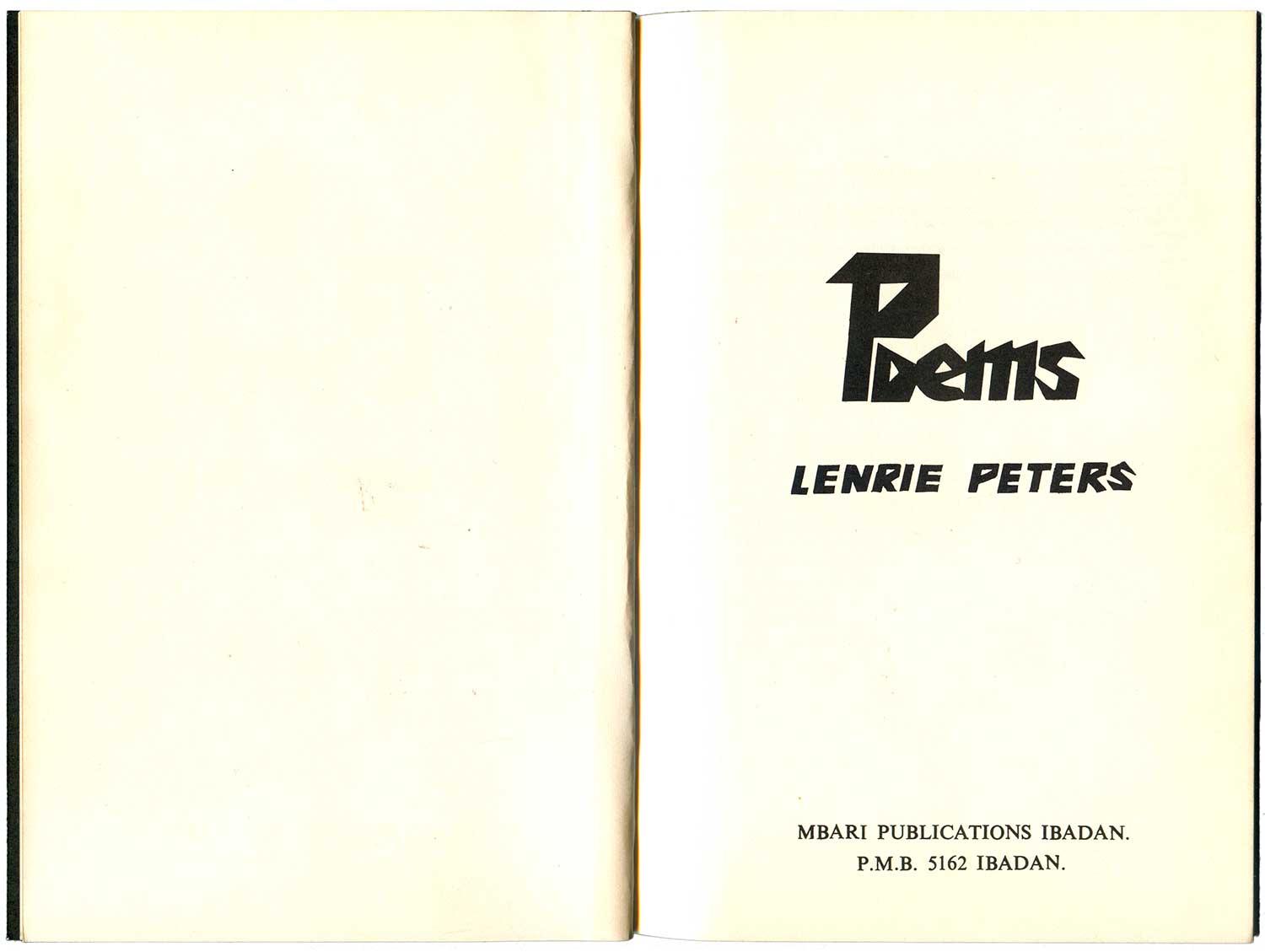
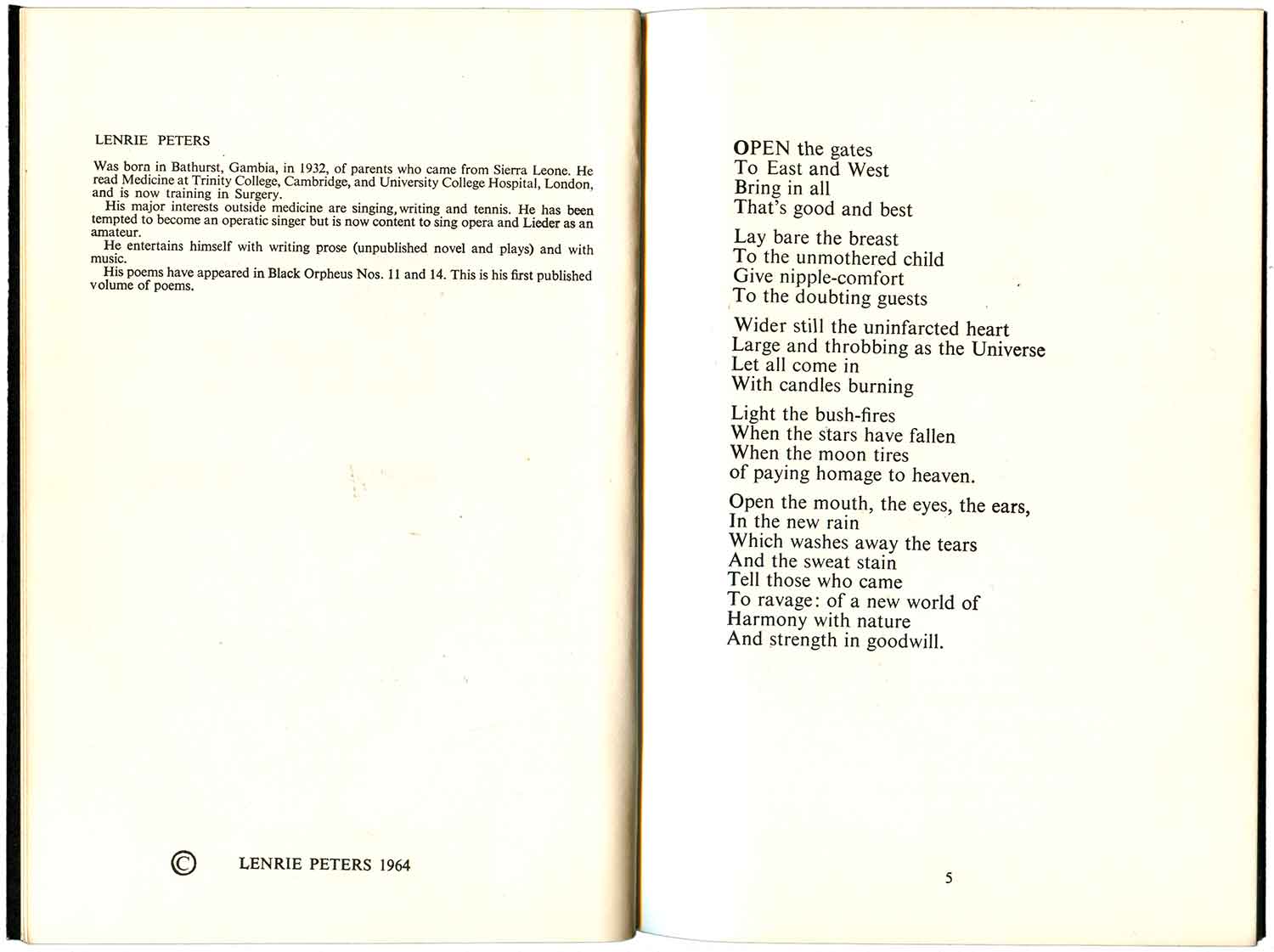
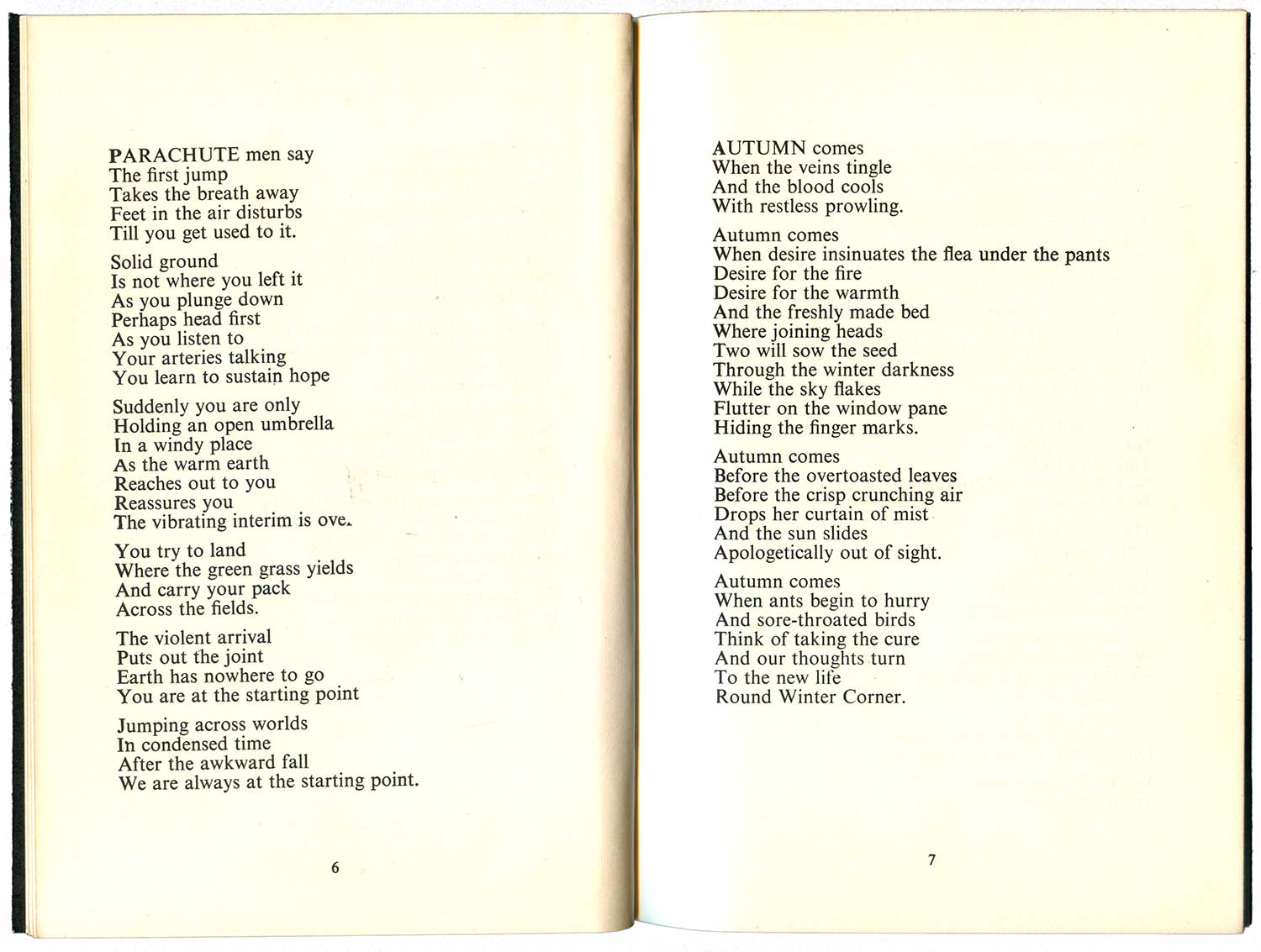
I’ve been collecting Mbari books for years, but many are really hard to find, or otherwise ridiculously expensive. Because of their rarity and hand-produced feel, bookshops will often crank up the price, asking upwards of $200 for a book. It’s not worth it, and patience and perseverance should lead to finding most of the titles for $20 or less. The bibliography of twenty titles below is as close as I can get to a full Mbari list. I have sixteen of these books, and the four I don’t have are marked with an asterisk. A book by Mozambican artist Malangatana was announced in some of the earlier titles, but I have found no evidence that it was ever published.
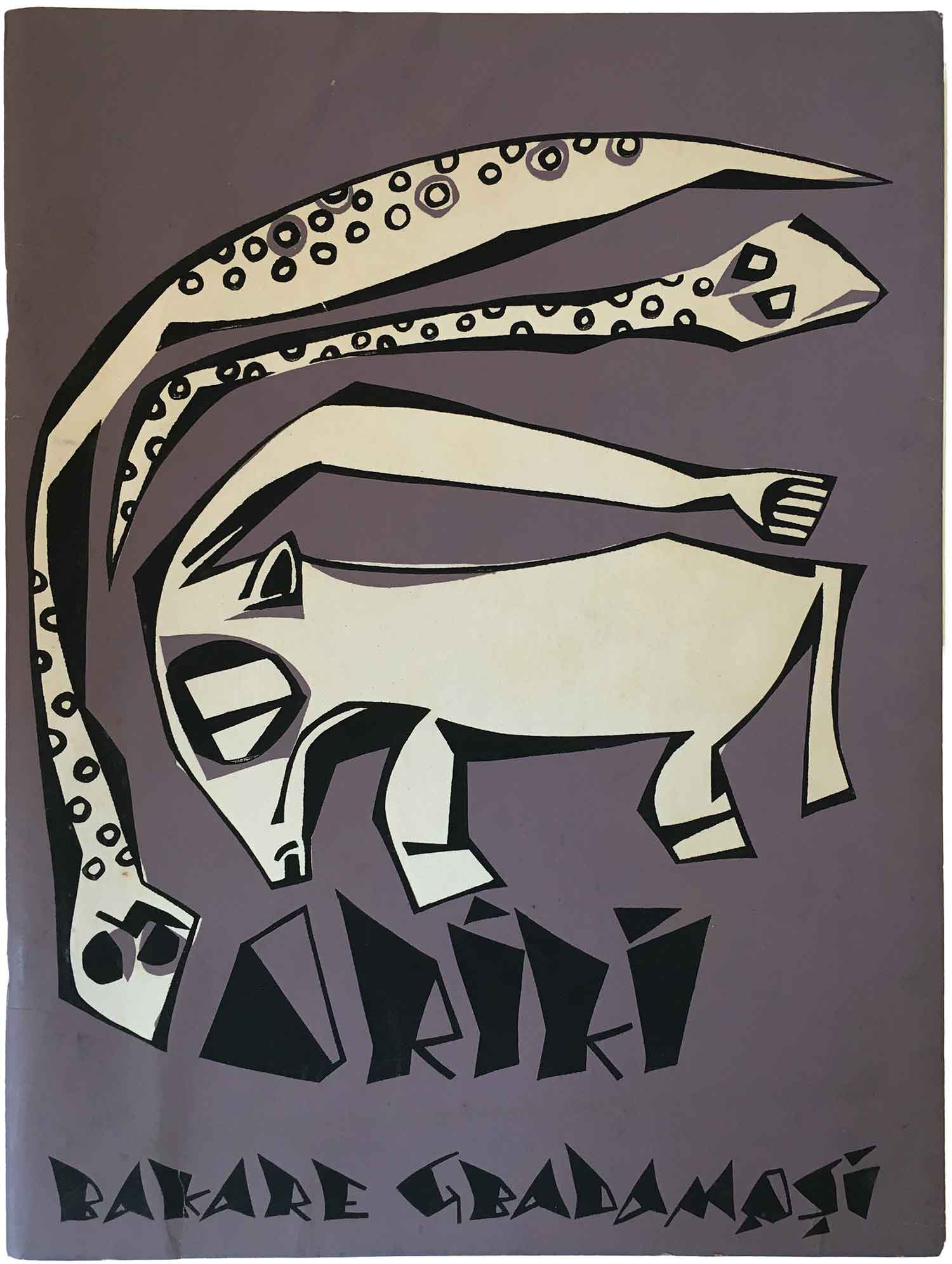




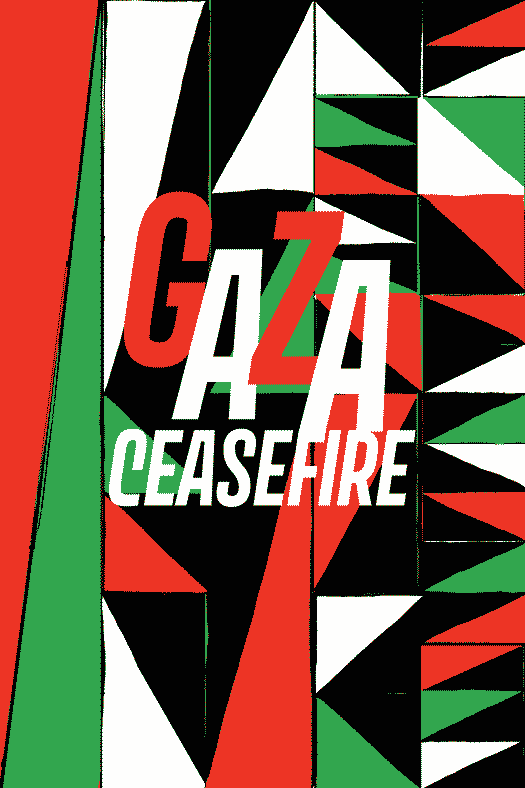

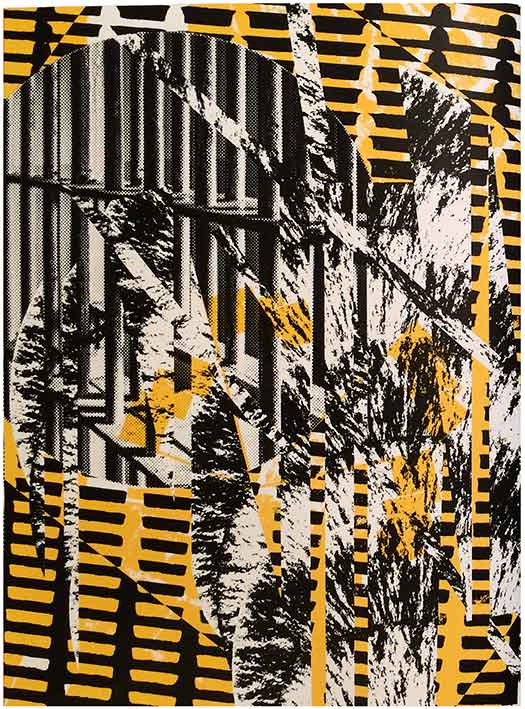
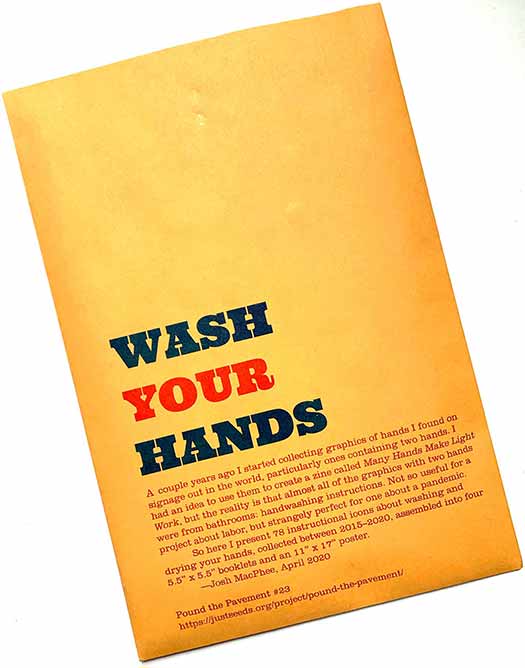
Thought you would be interested in this:
…In total, Mbari Publications released 28 titles that included novels, short stories, poetry and plays as well as books of the work of fine artists and sculptors. These are listed below – those in bold are featured in the Cultural Renaissance section of the V&A’s Africa Fashion exhibition and are part of the National Art Library’s collection…
And the article, including all 28 titles:
https://www.vam.ac.uk/blog/projects/fostering-creativity-mbari-artists-and-writers-club
Thanks John! When I was assembling this post back in 2016, and actively hunting for the publications, there was no extent bibliography that I could find. Nice to see both that get assembled and some attention finally shone on these books.
You’re welcome. Thank YOU for the blog. I came across it and the other article pointed out to you while researching for a catalog that I am putting together. The book I have and that I wanted more information about is the 1964 Mbari publication of Three Yoruba Plays by Duro Ladipo. It is one of those tough books to find that you mentioned… or so it seems. Do you have it?